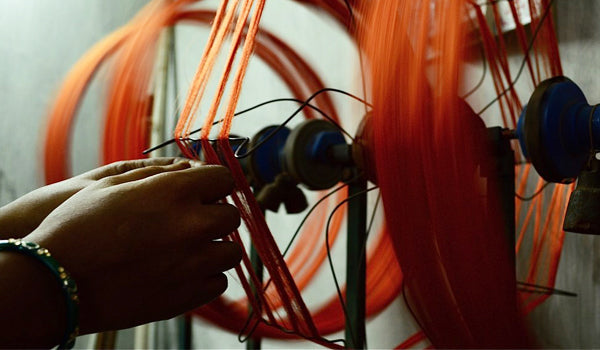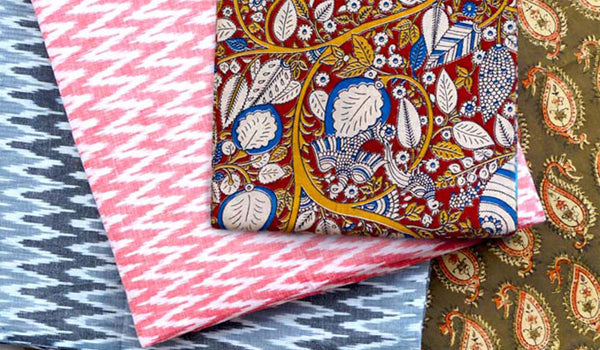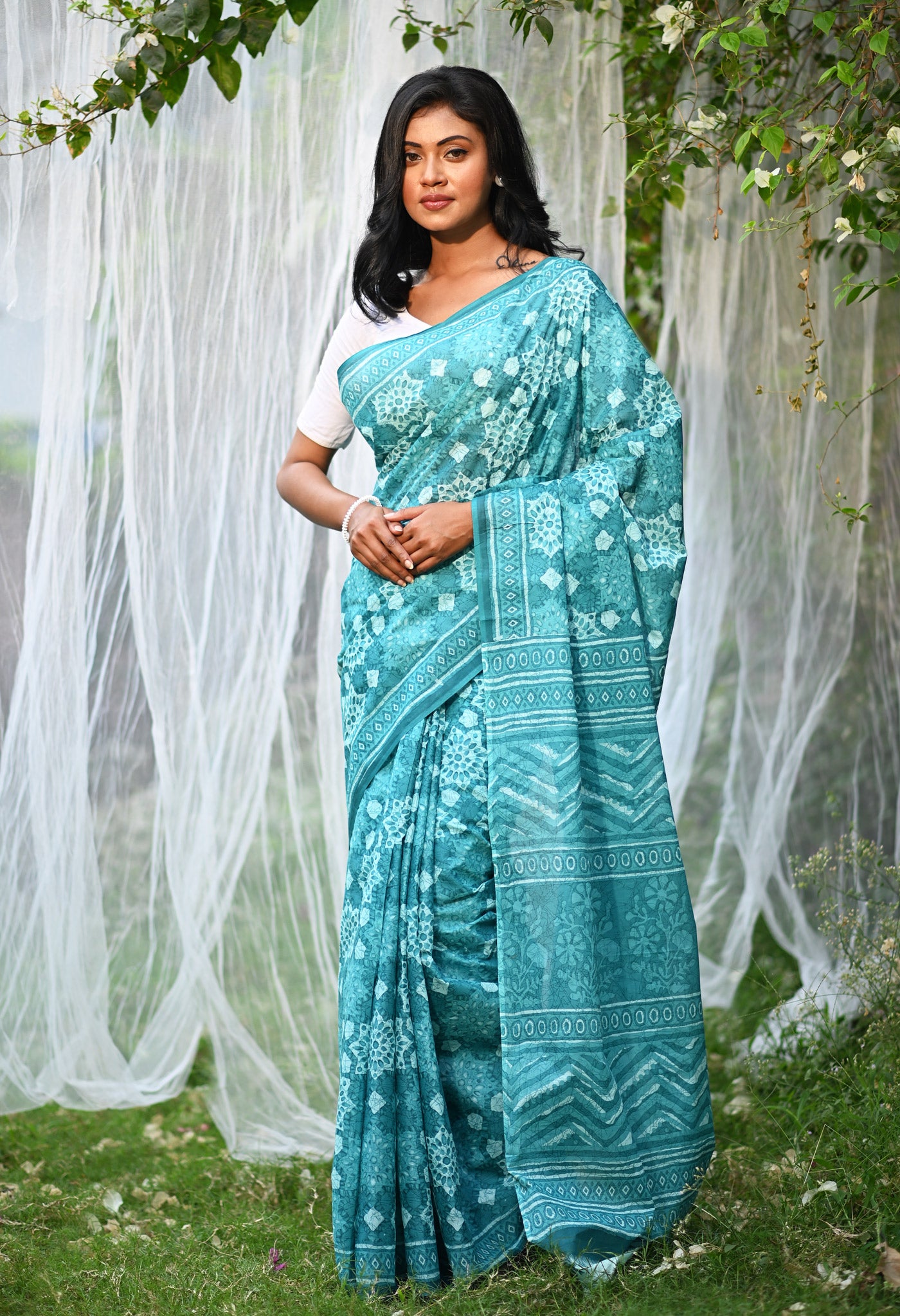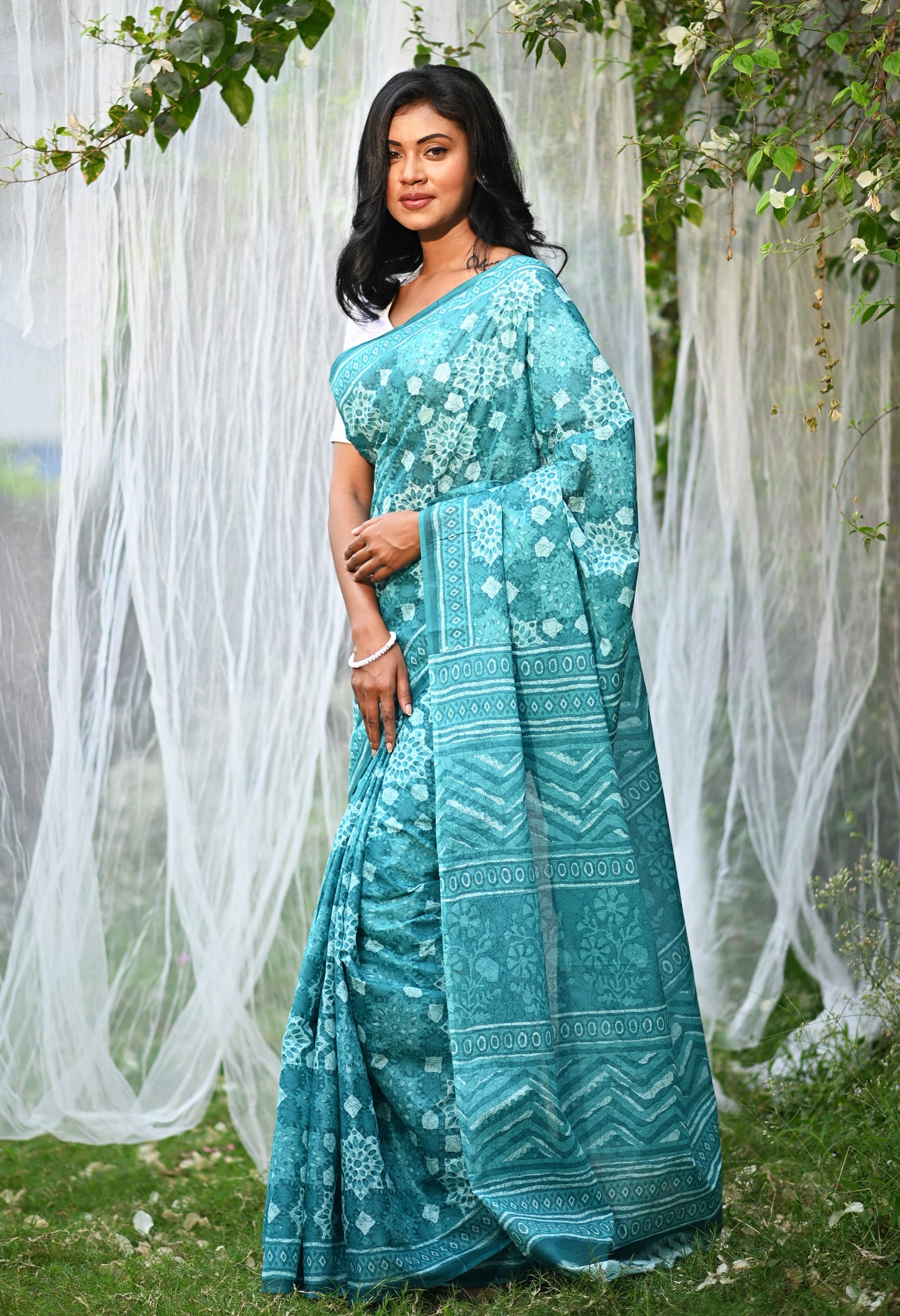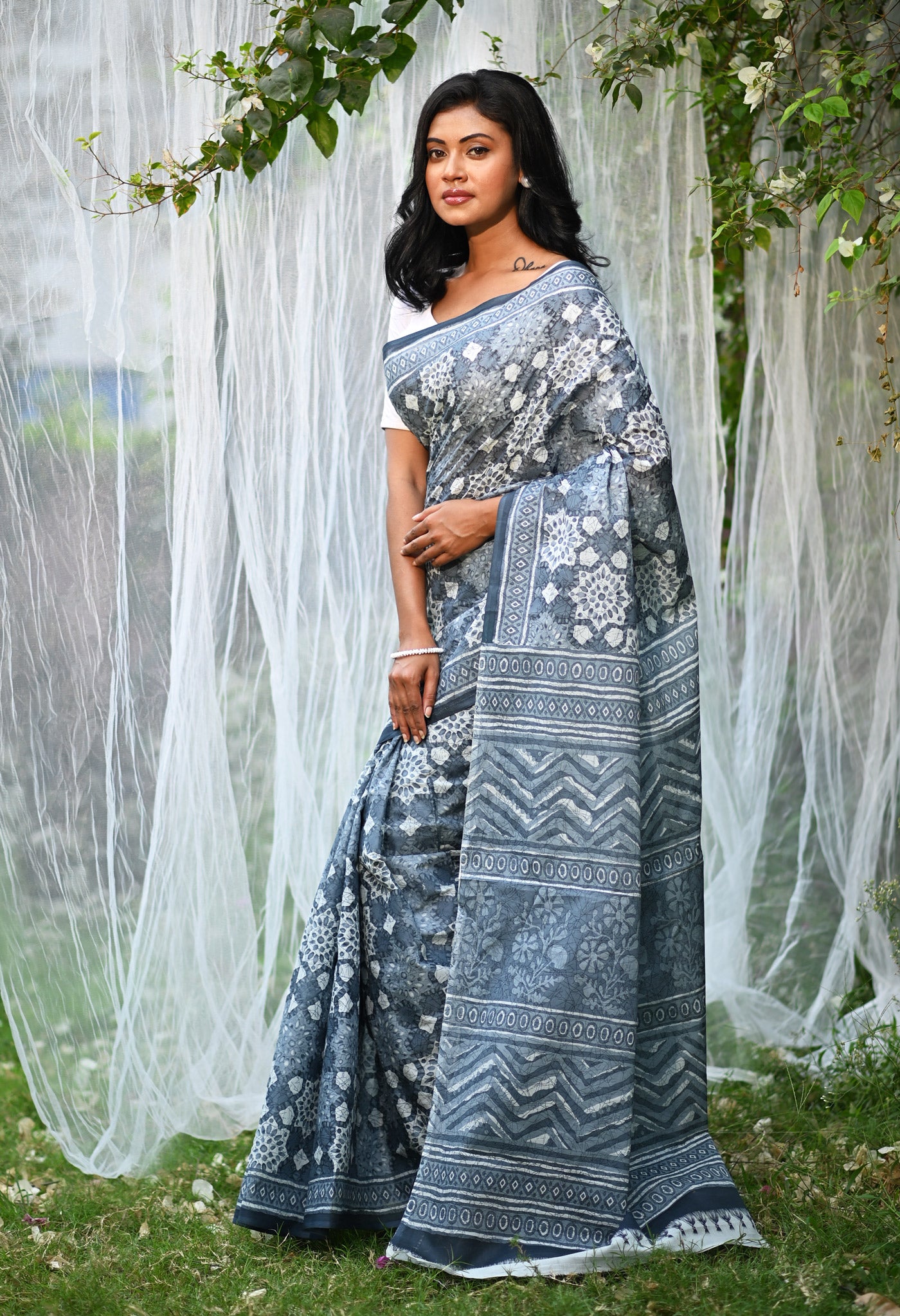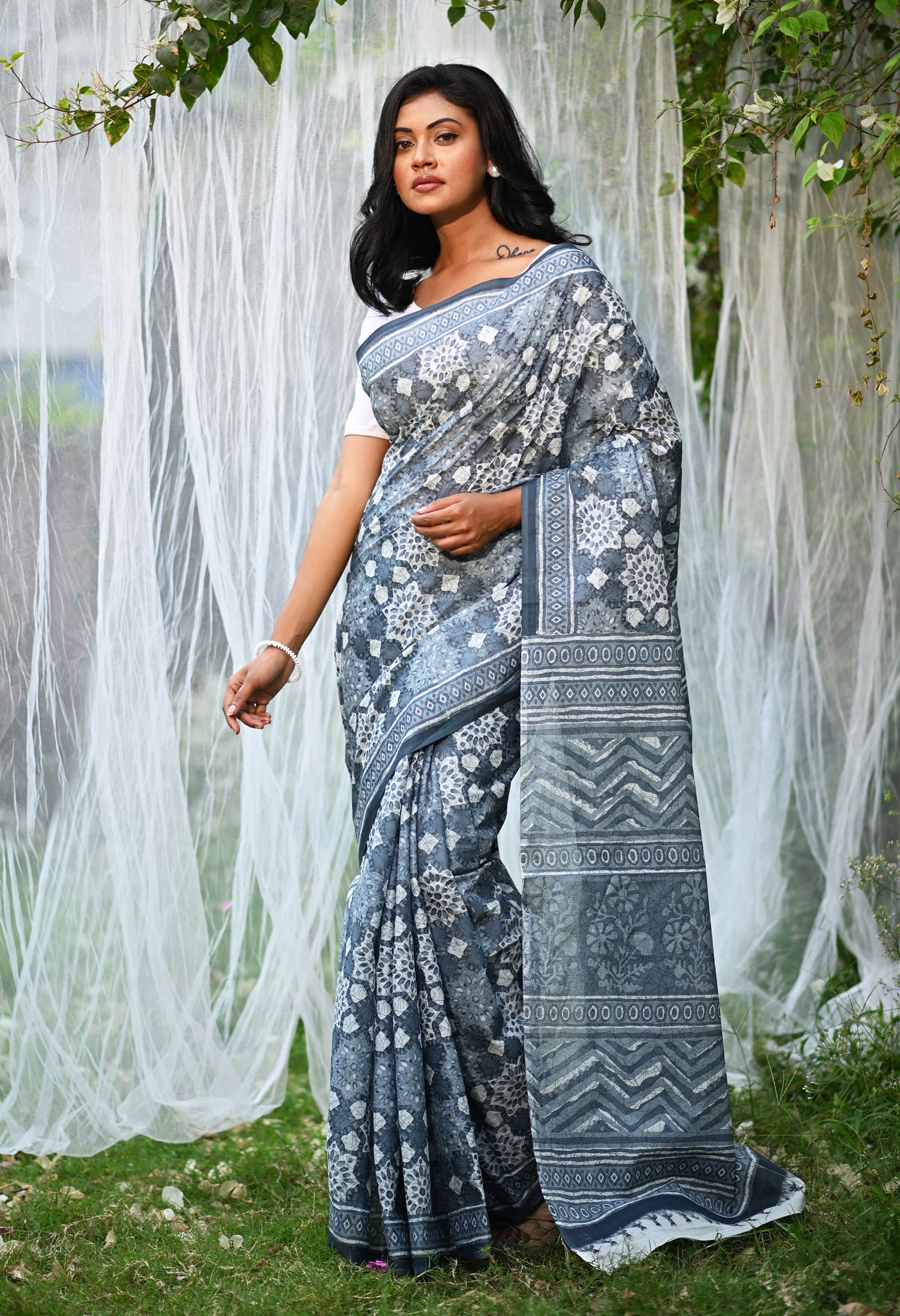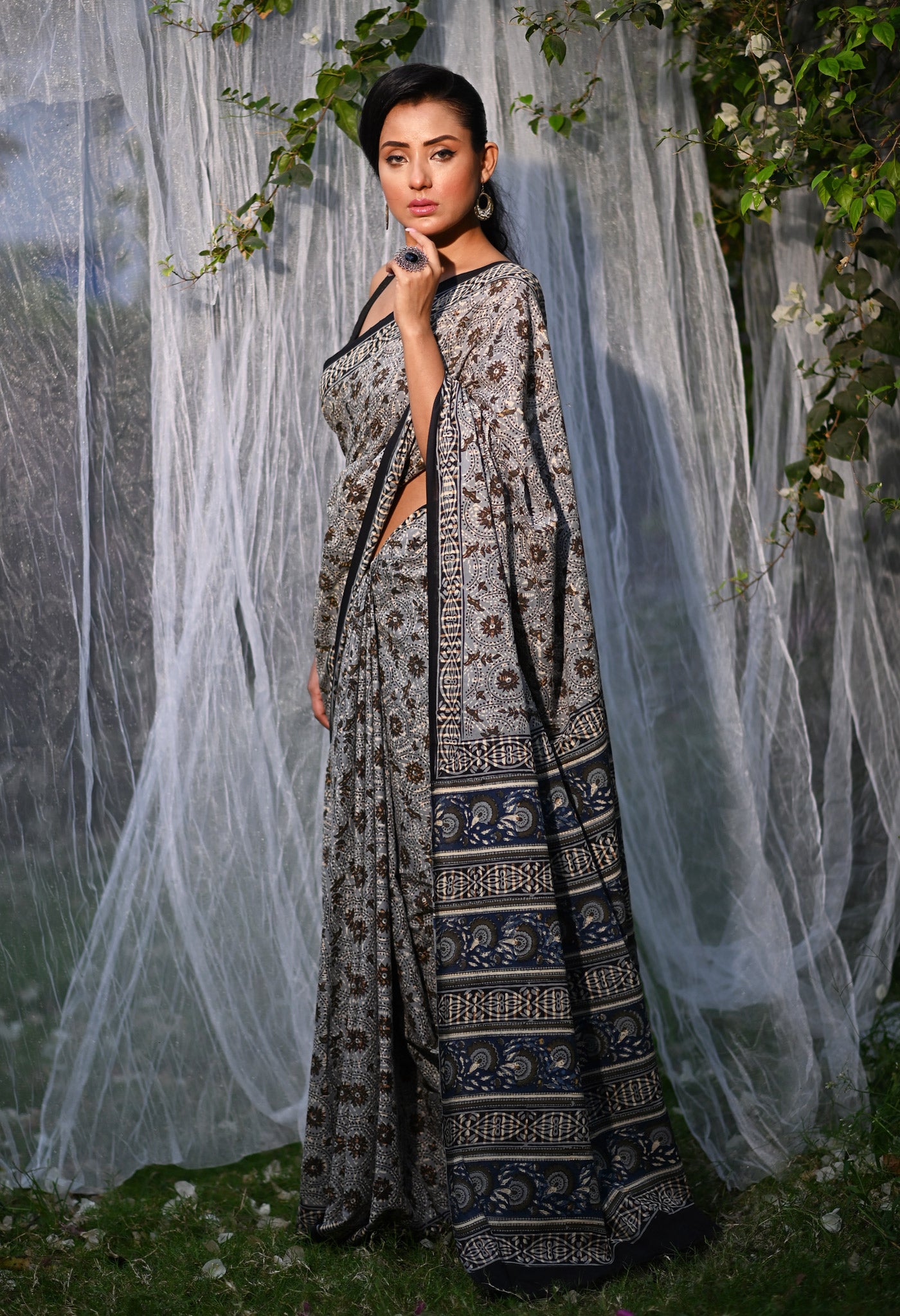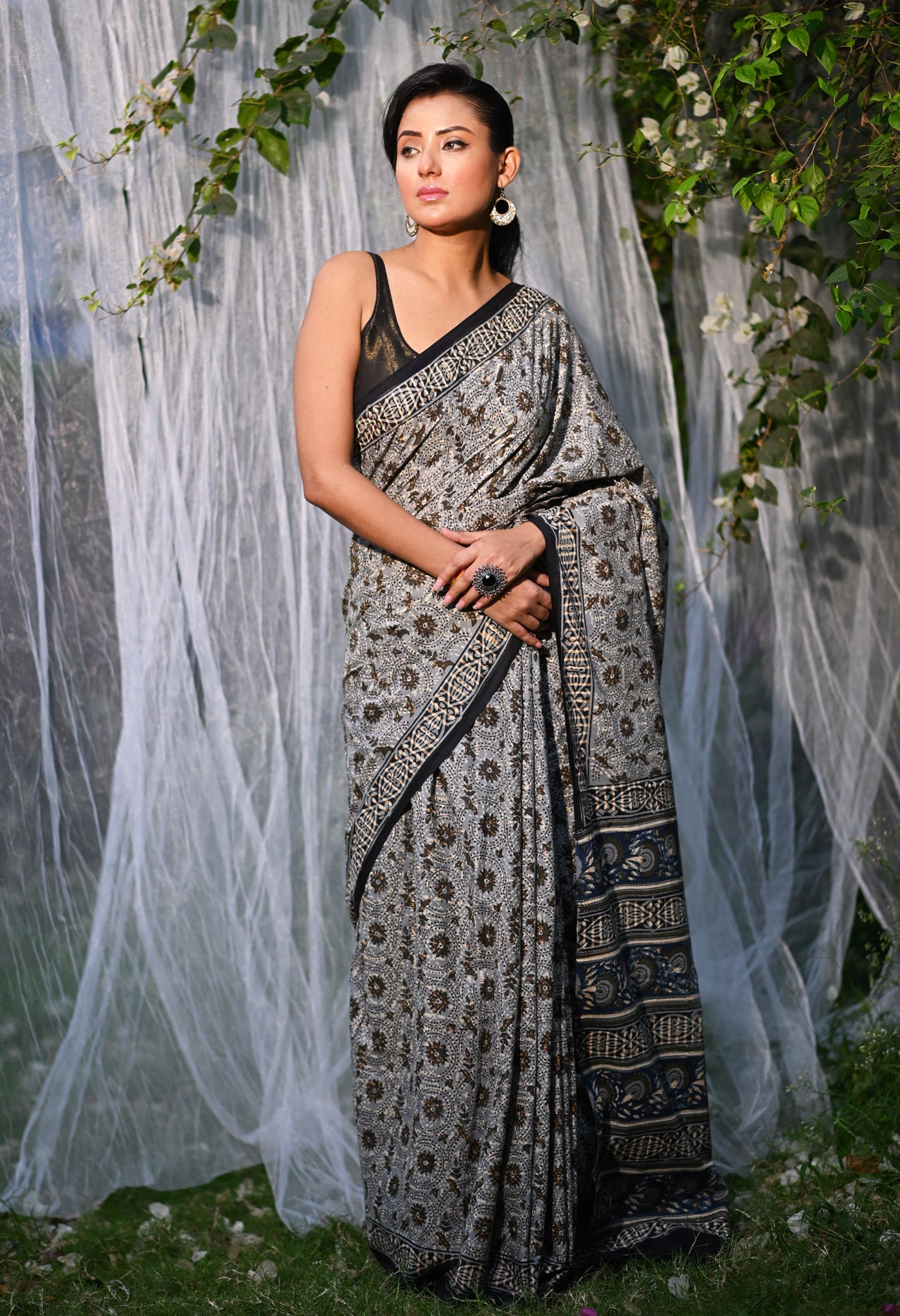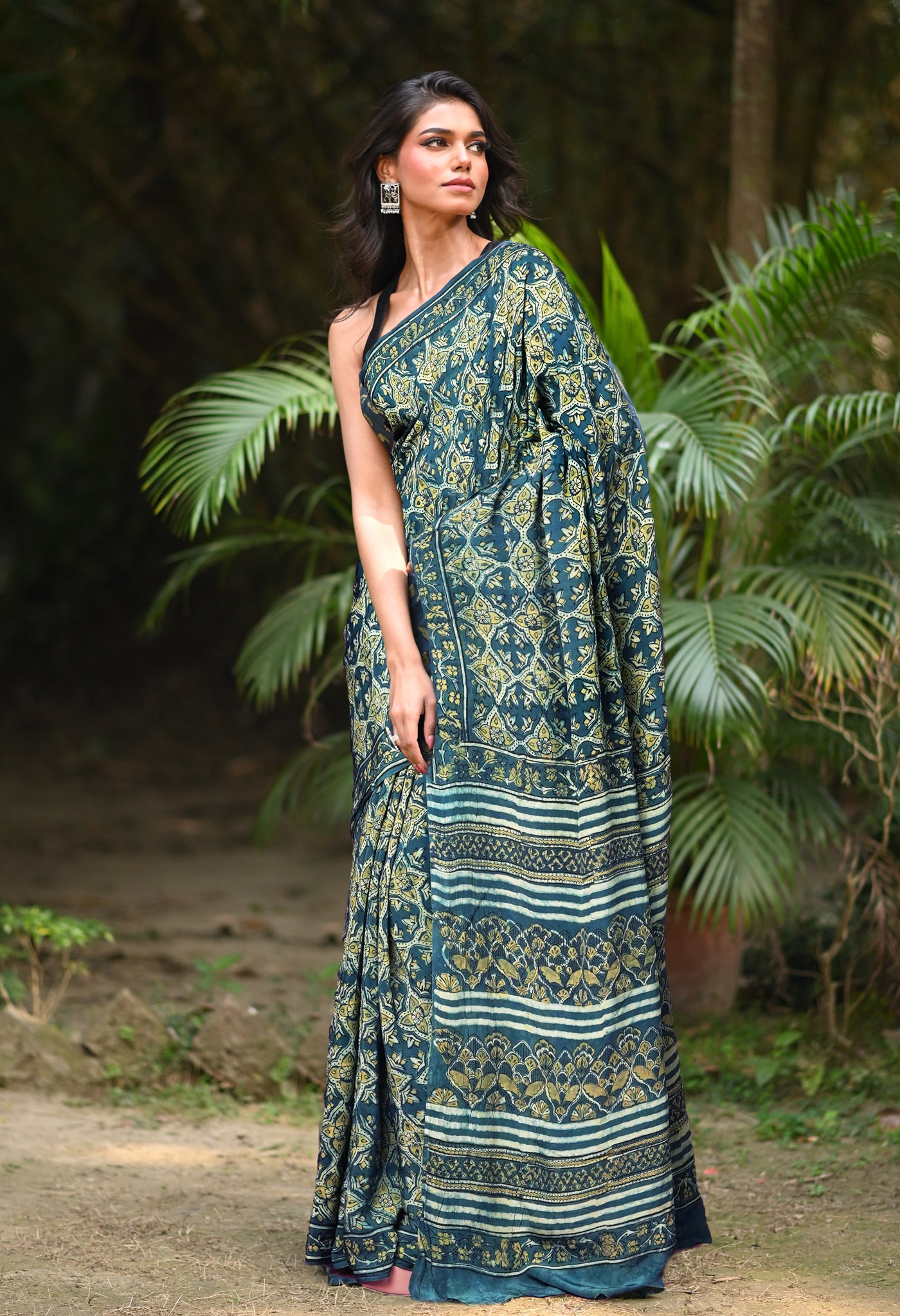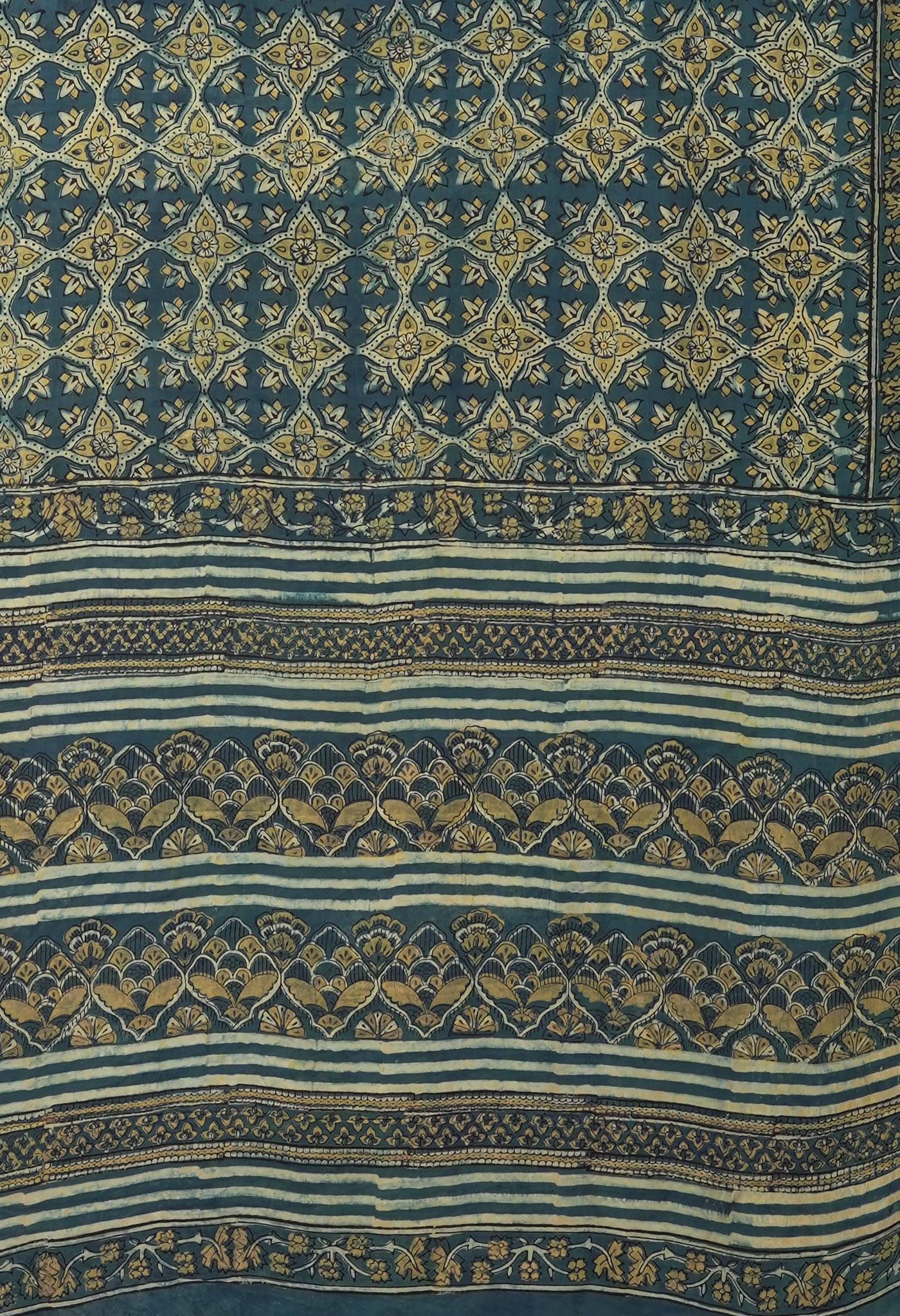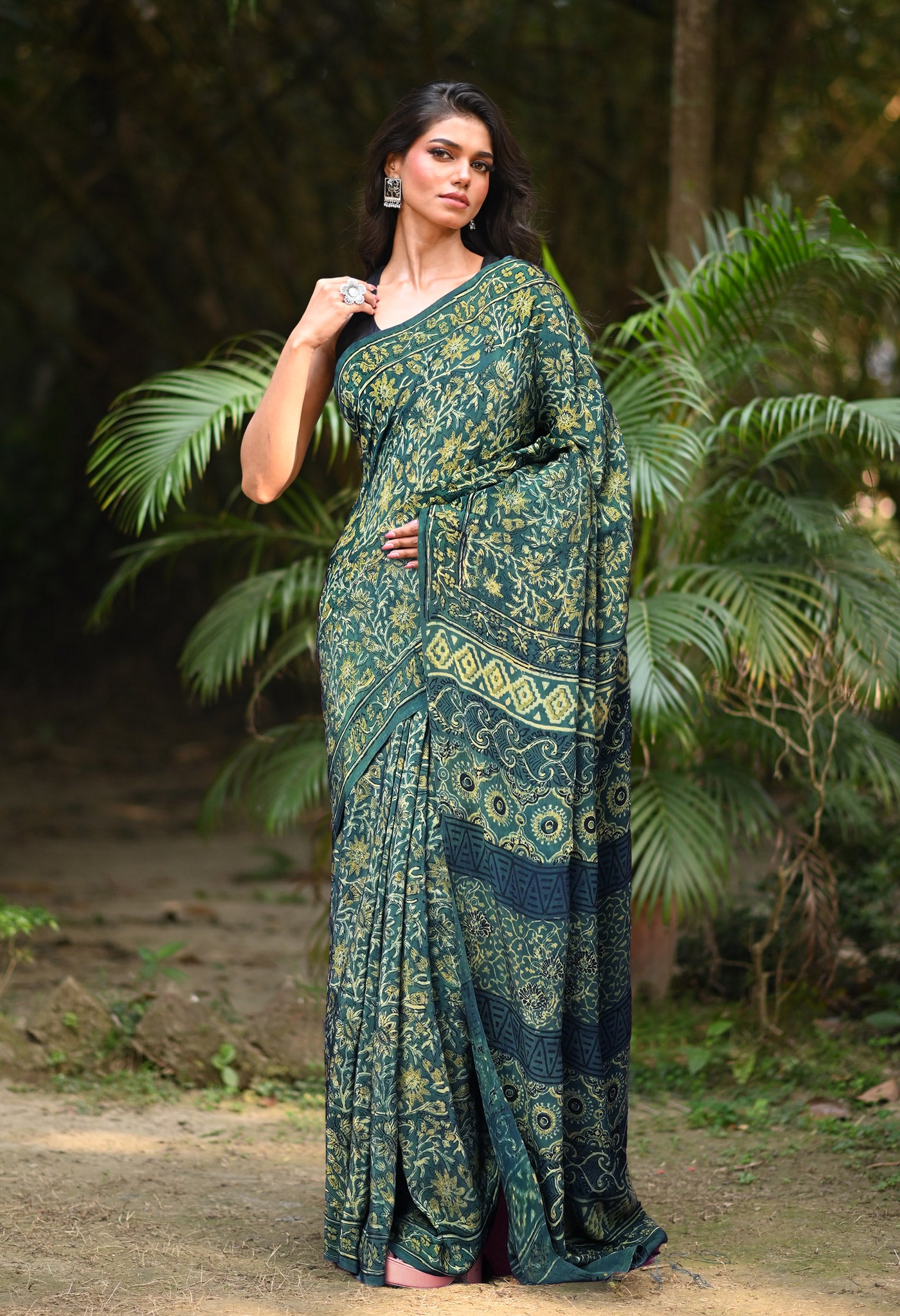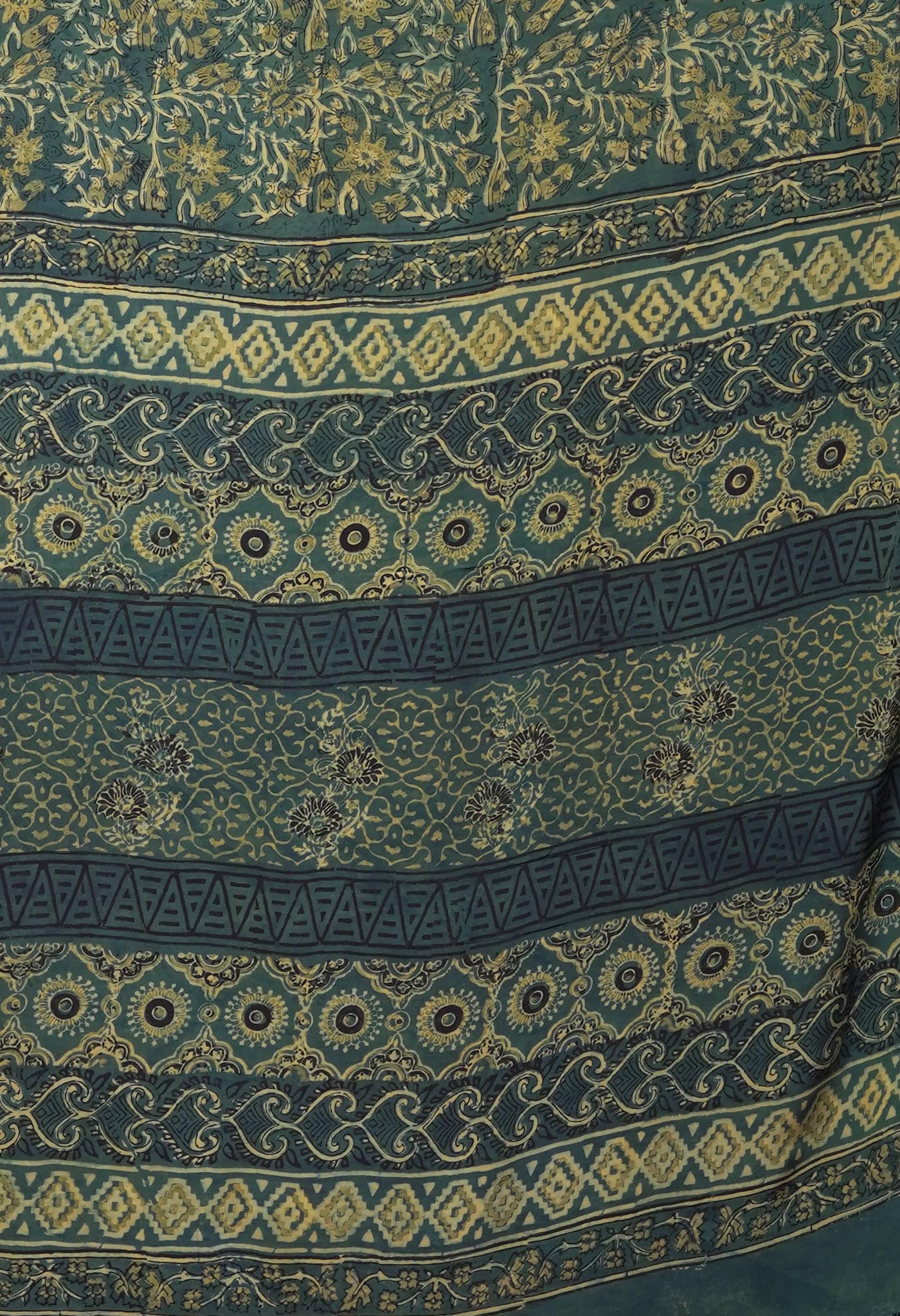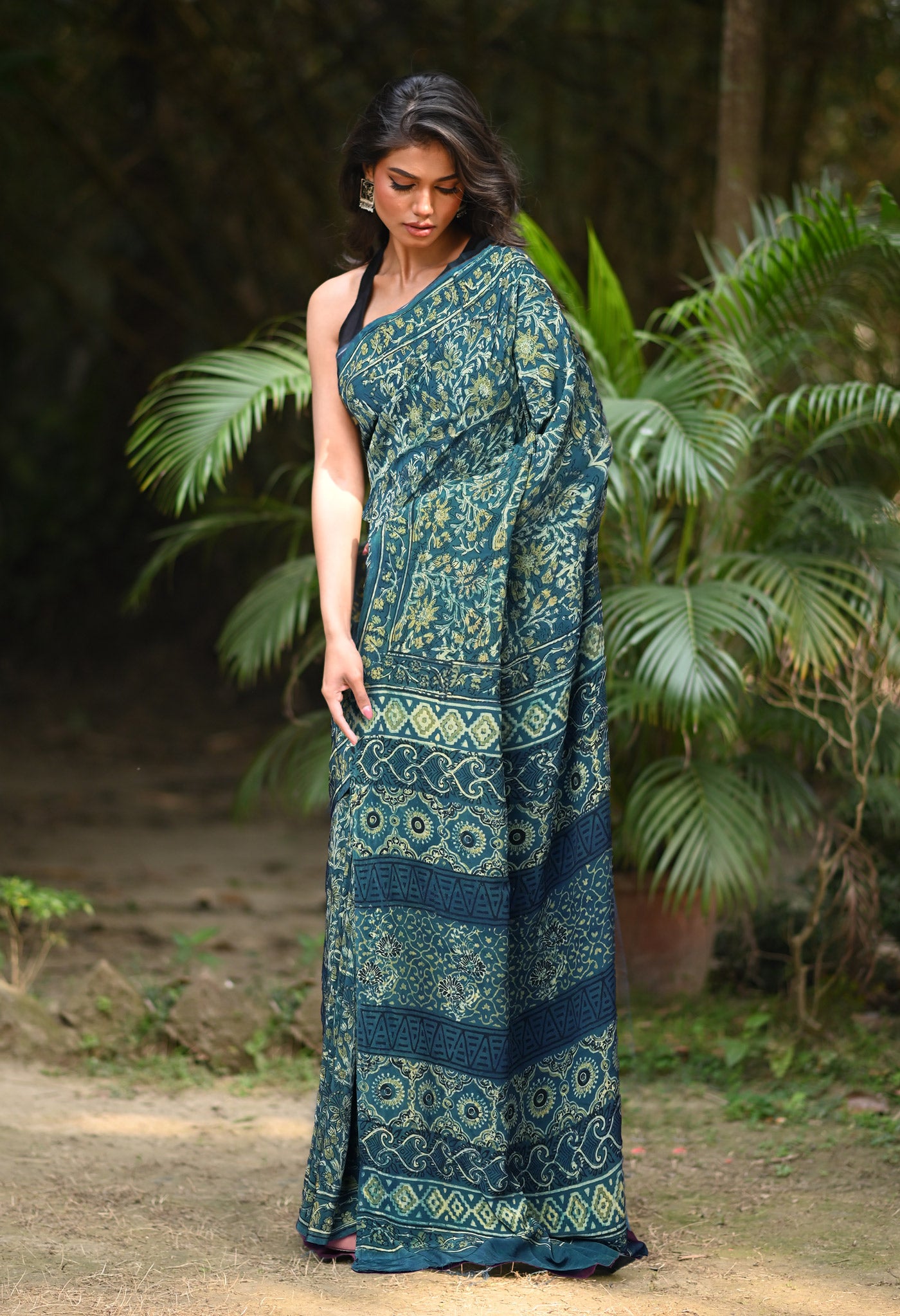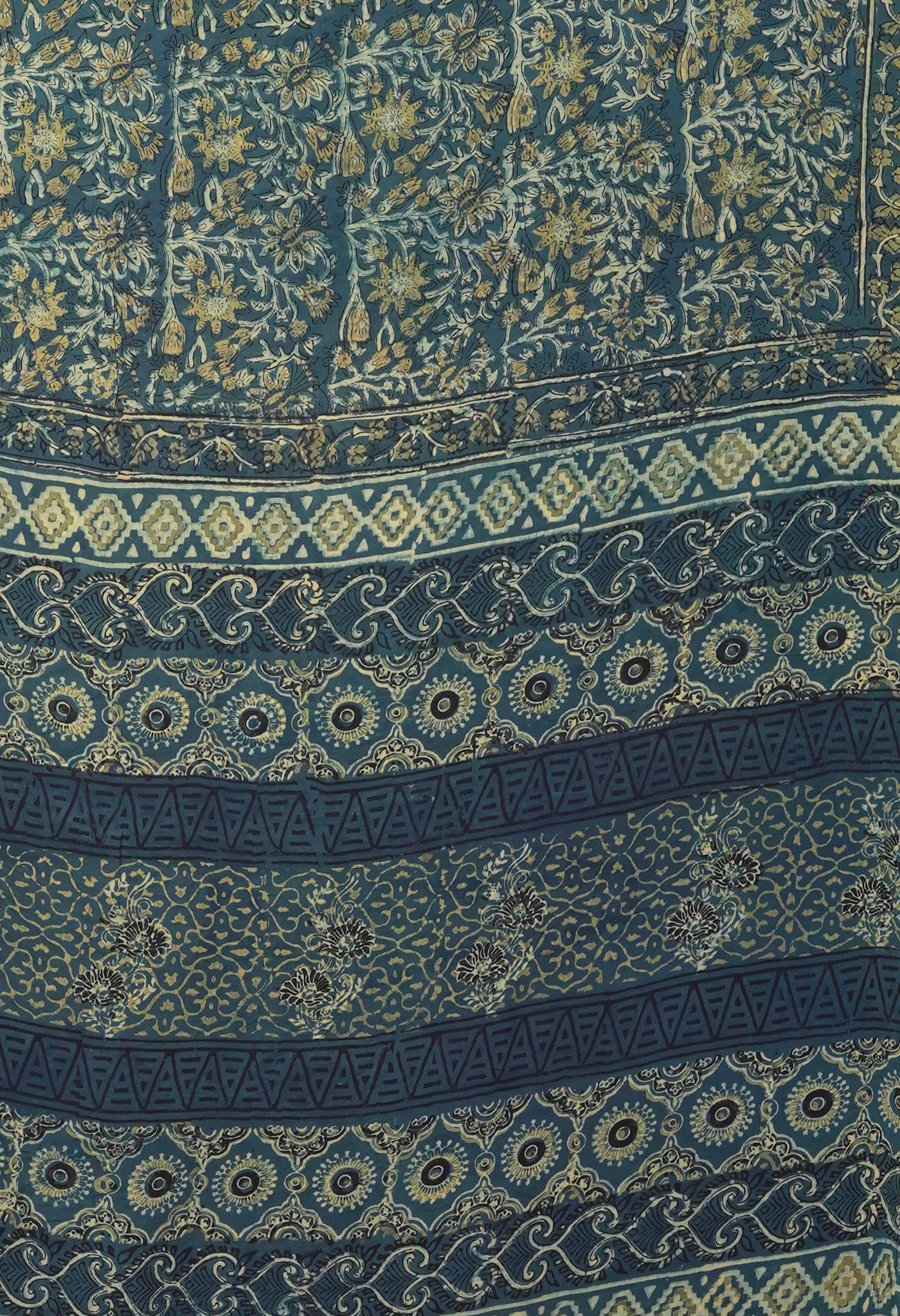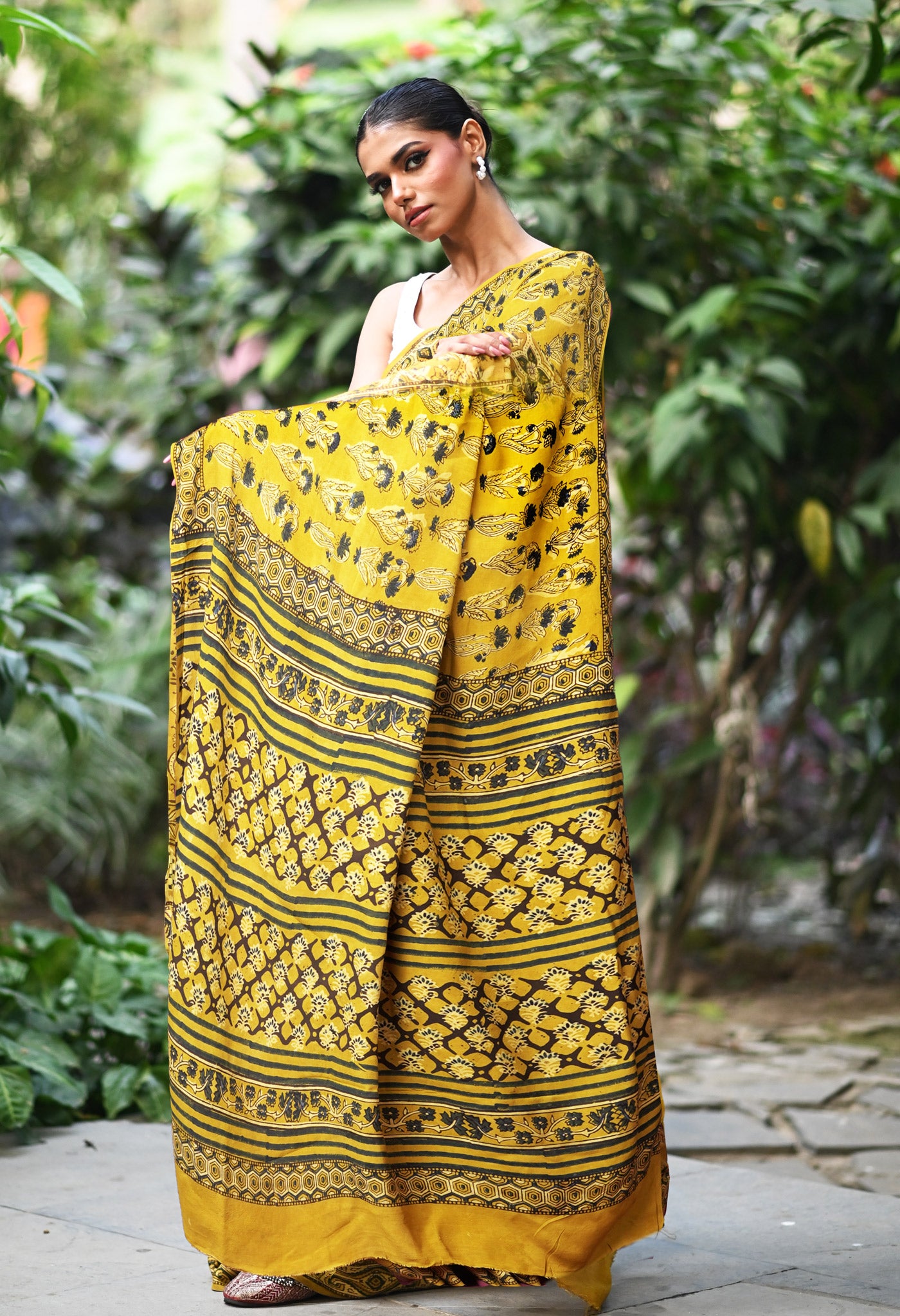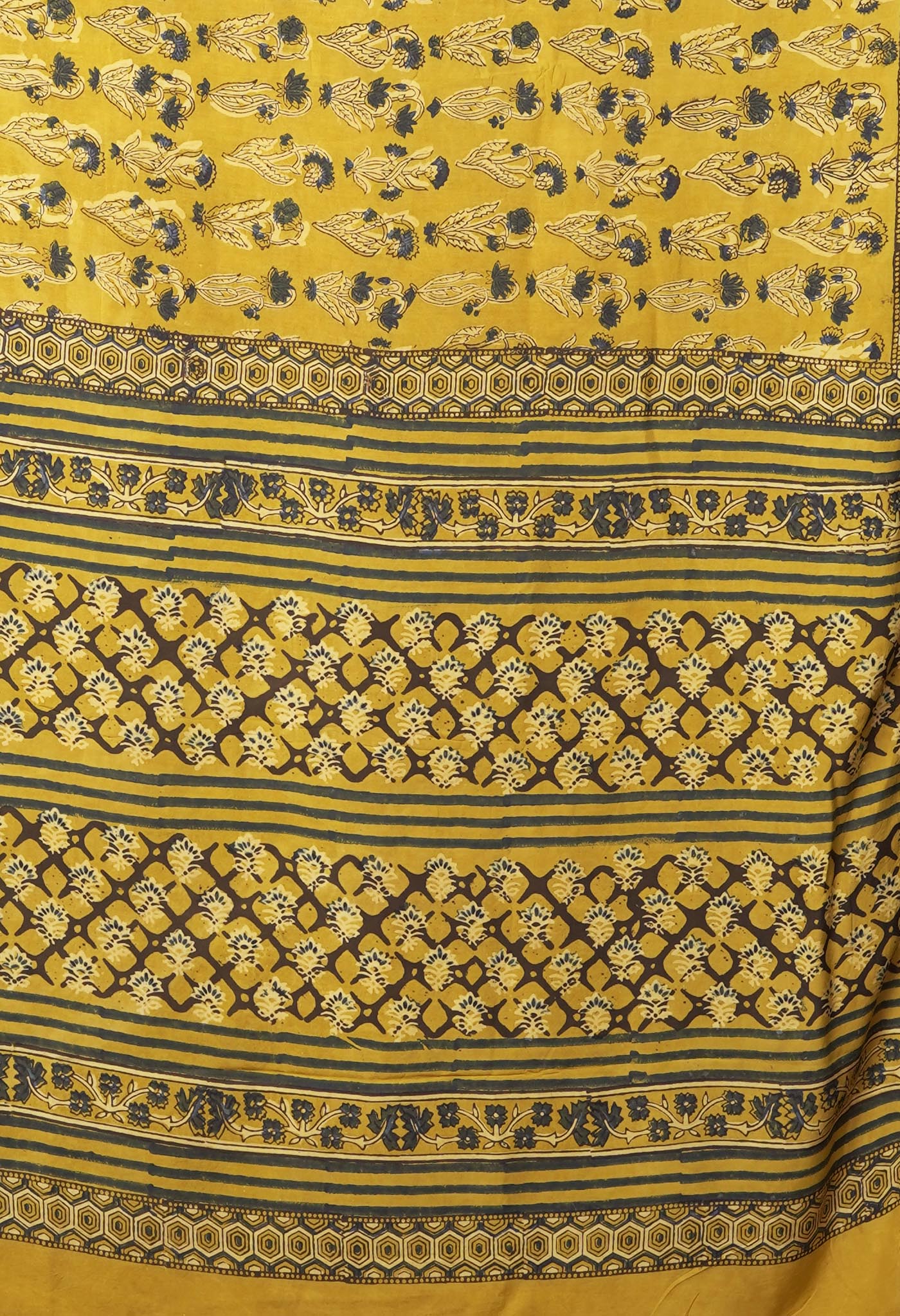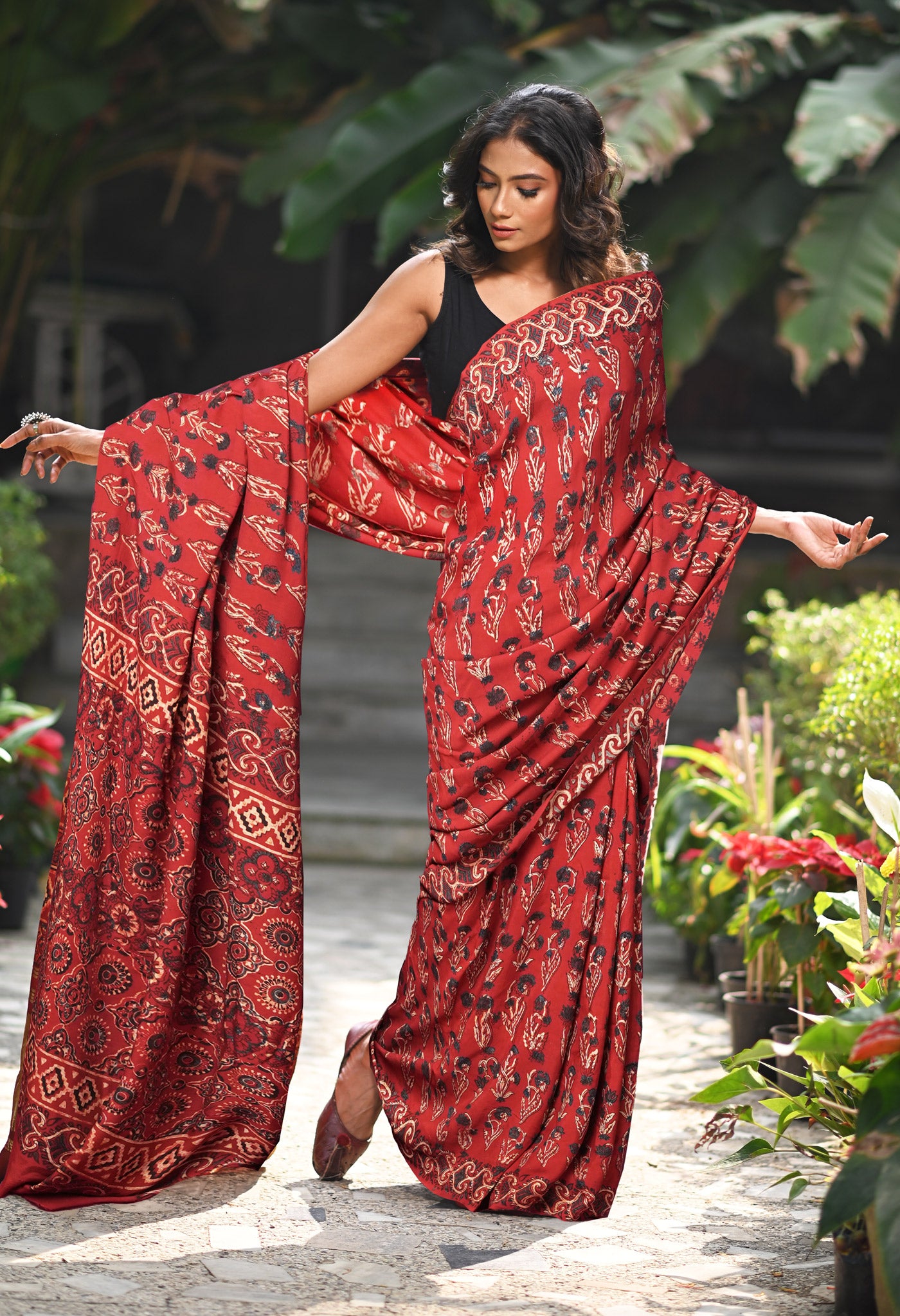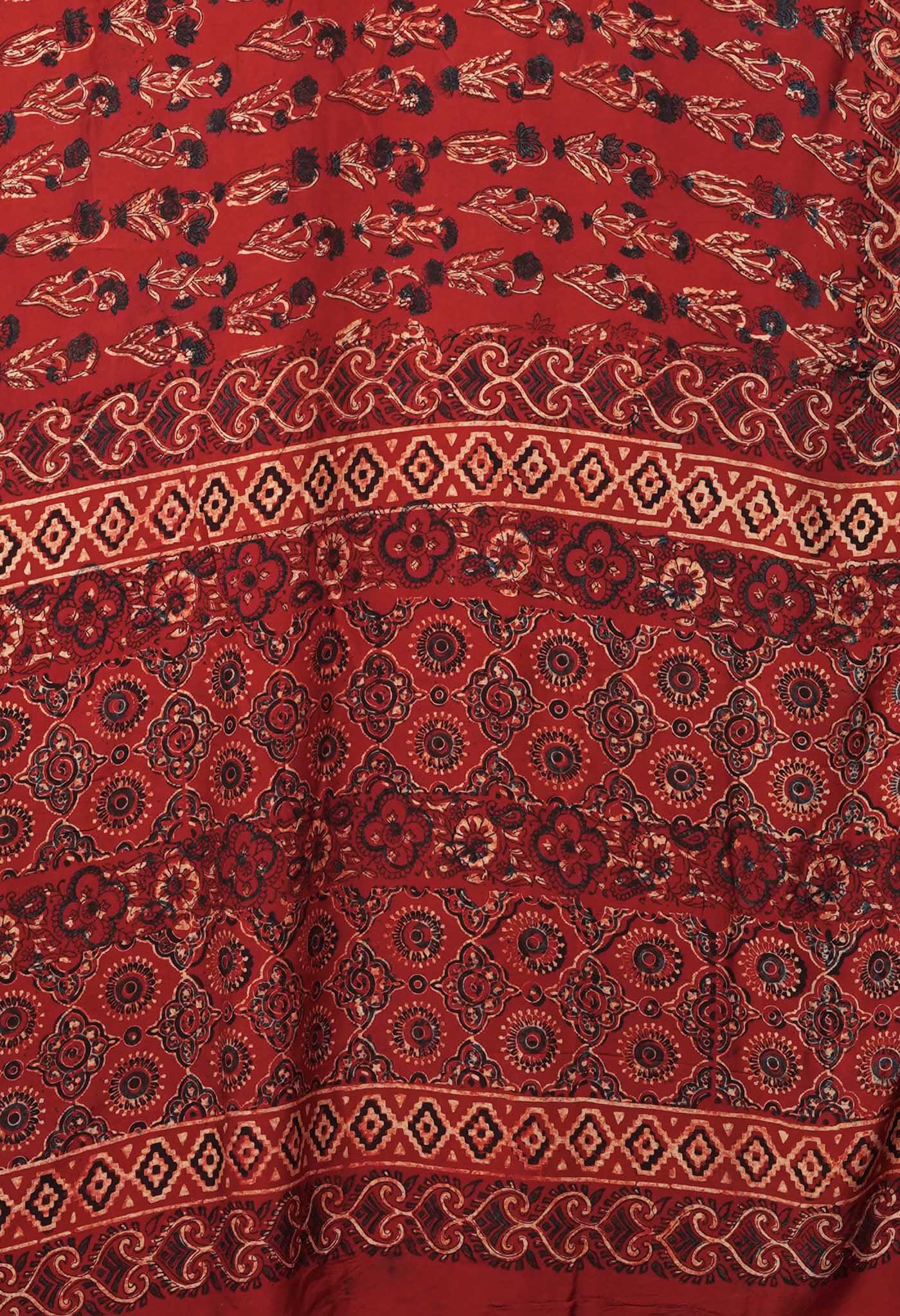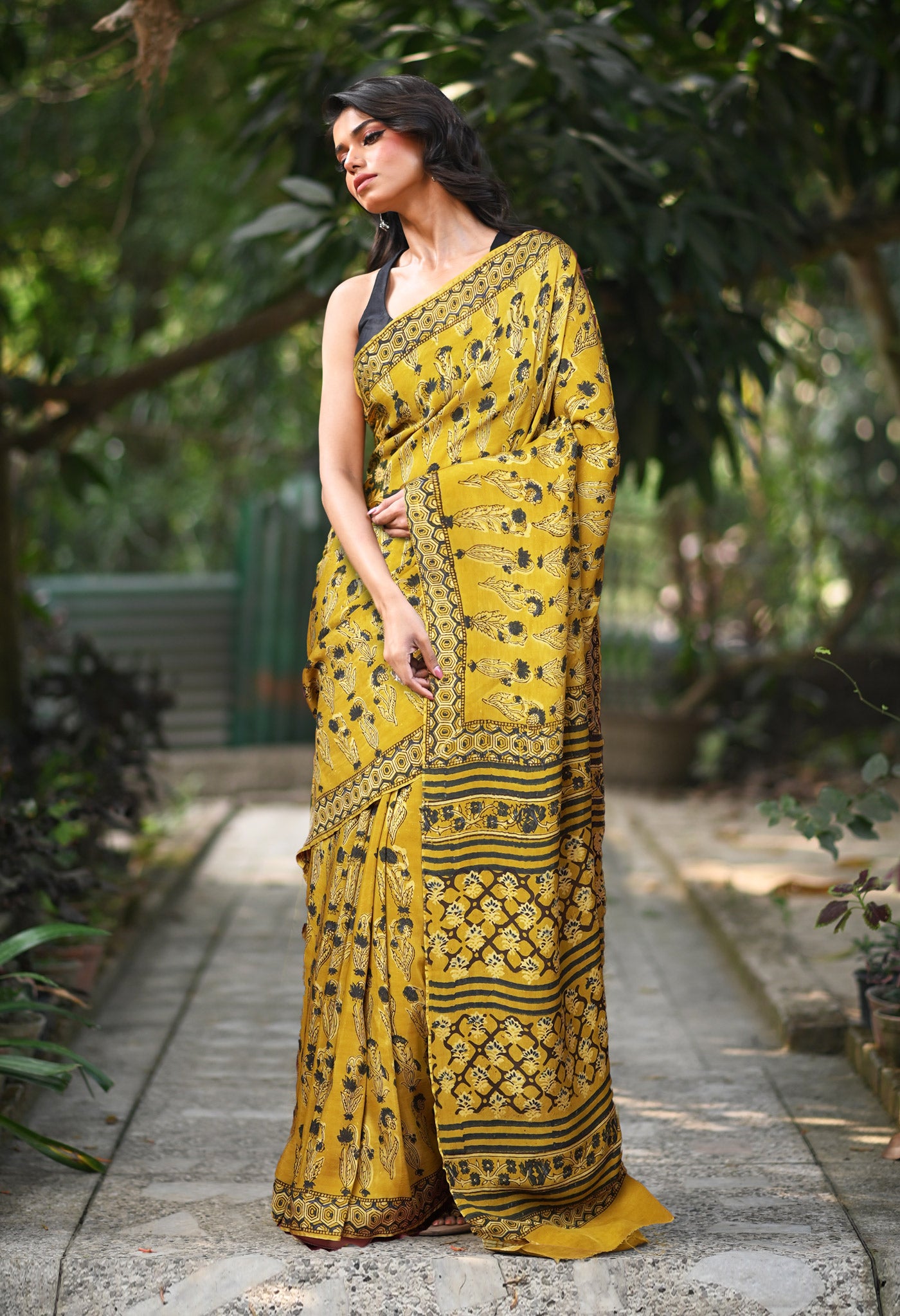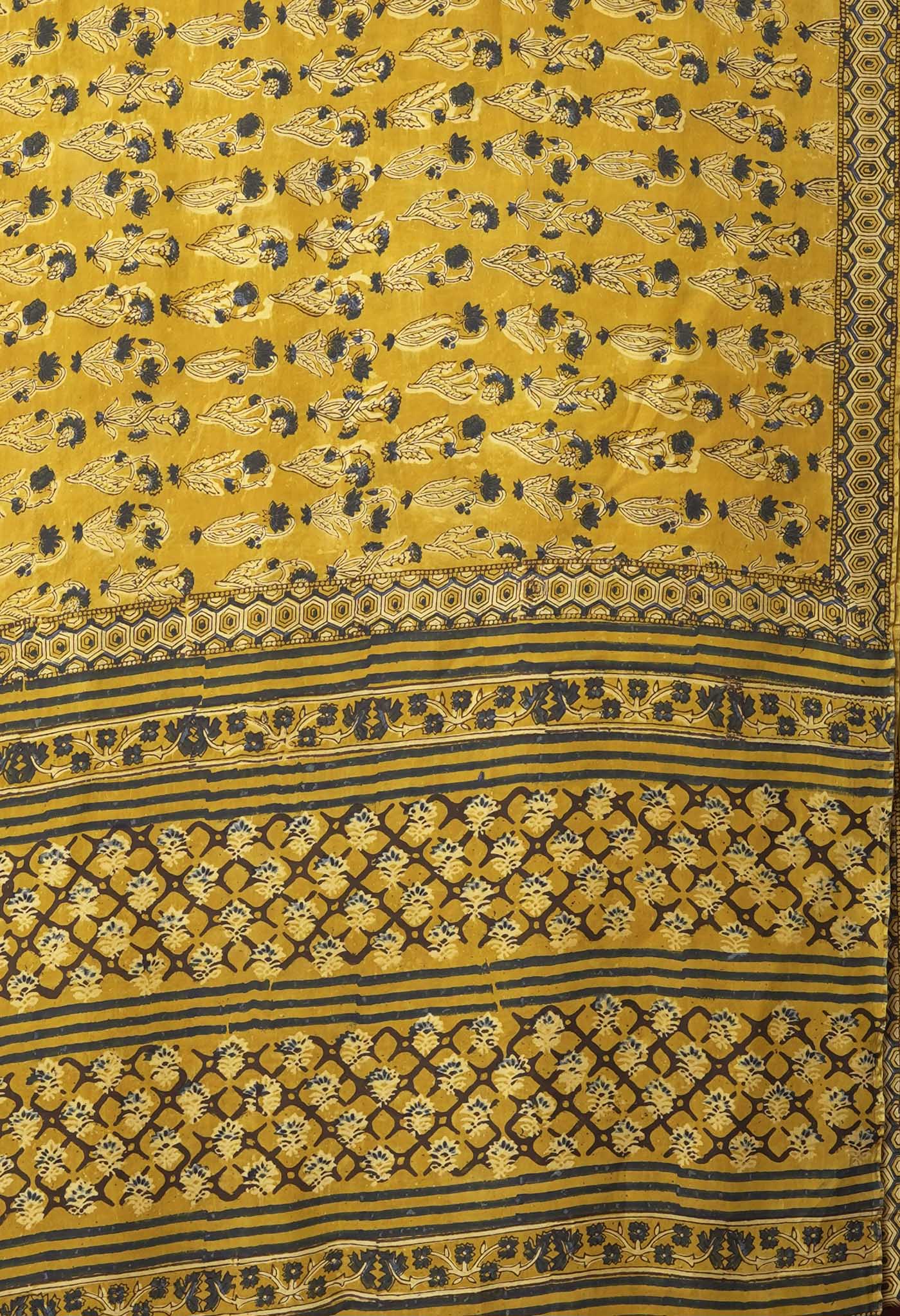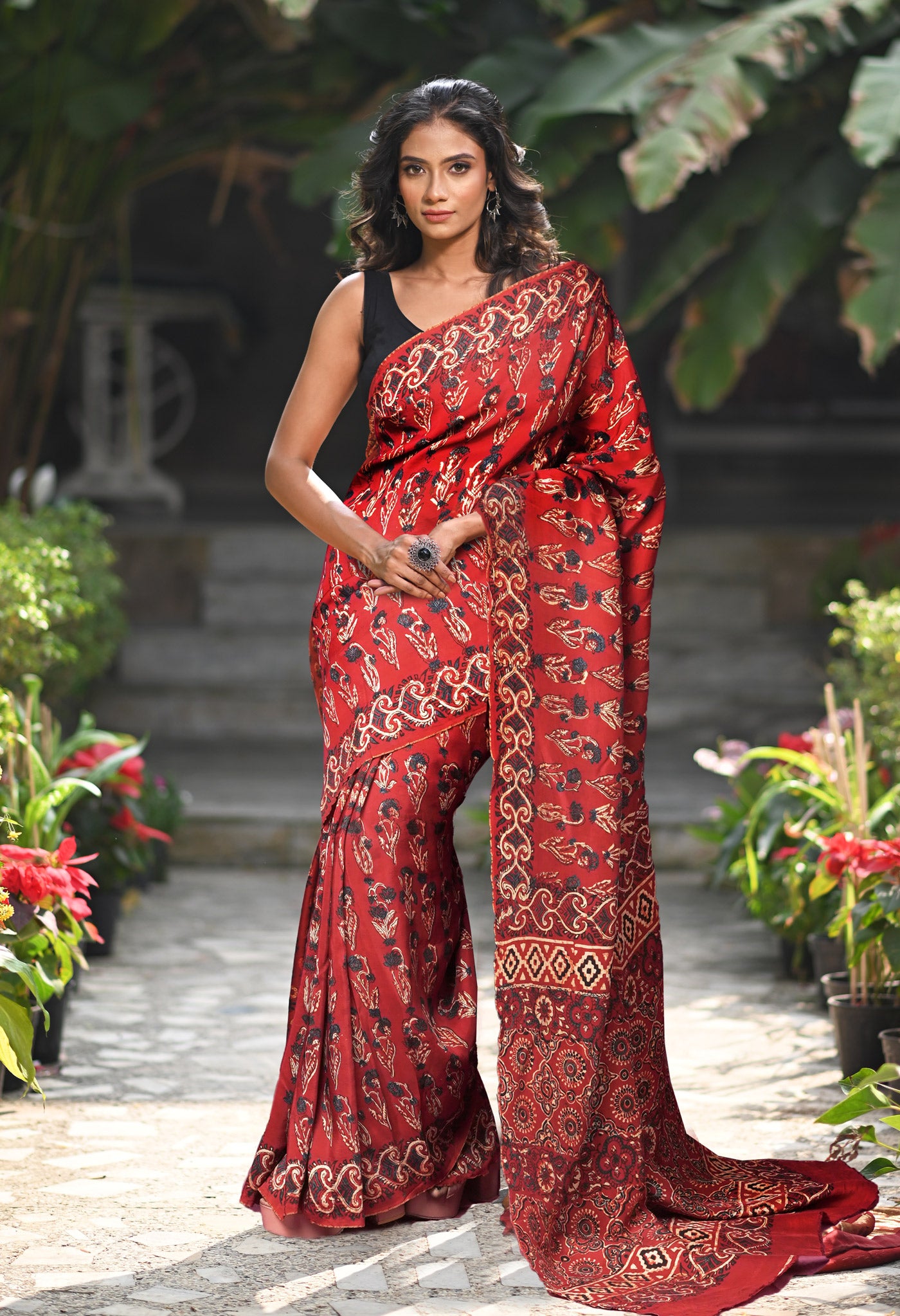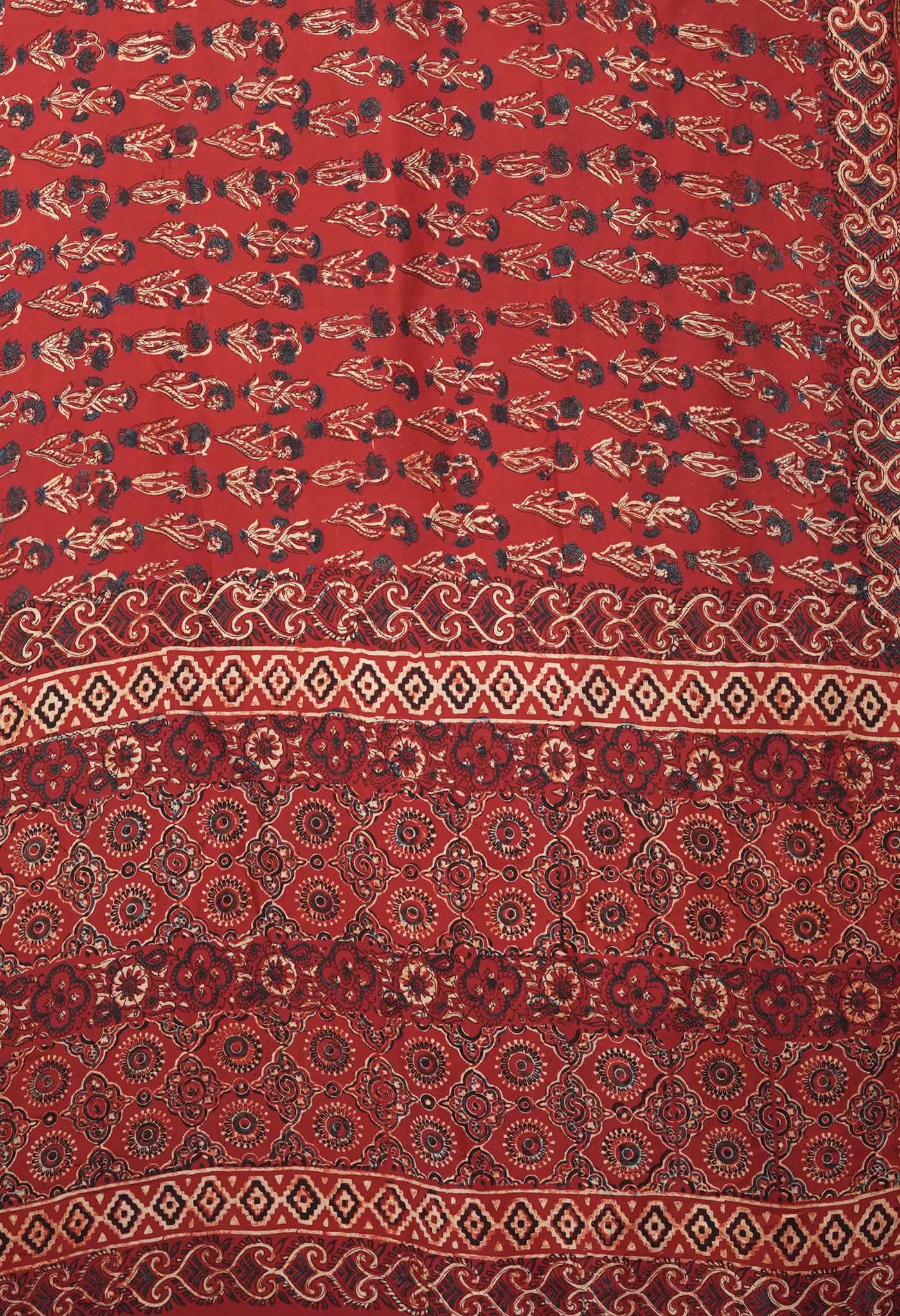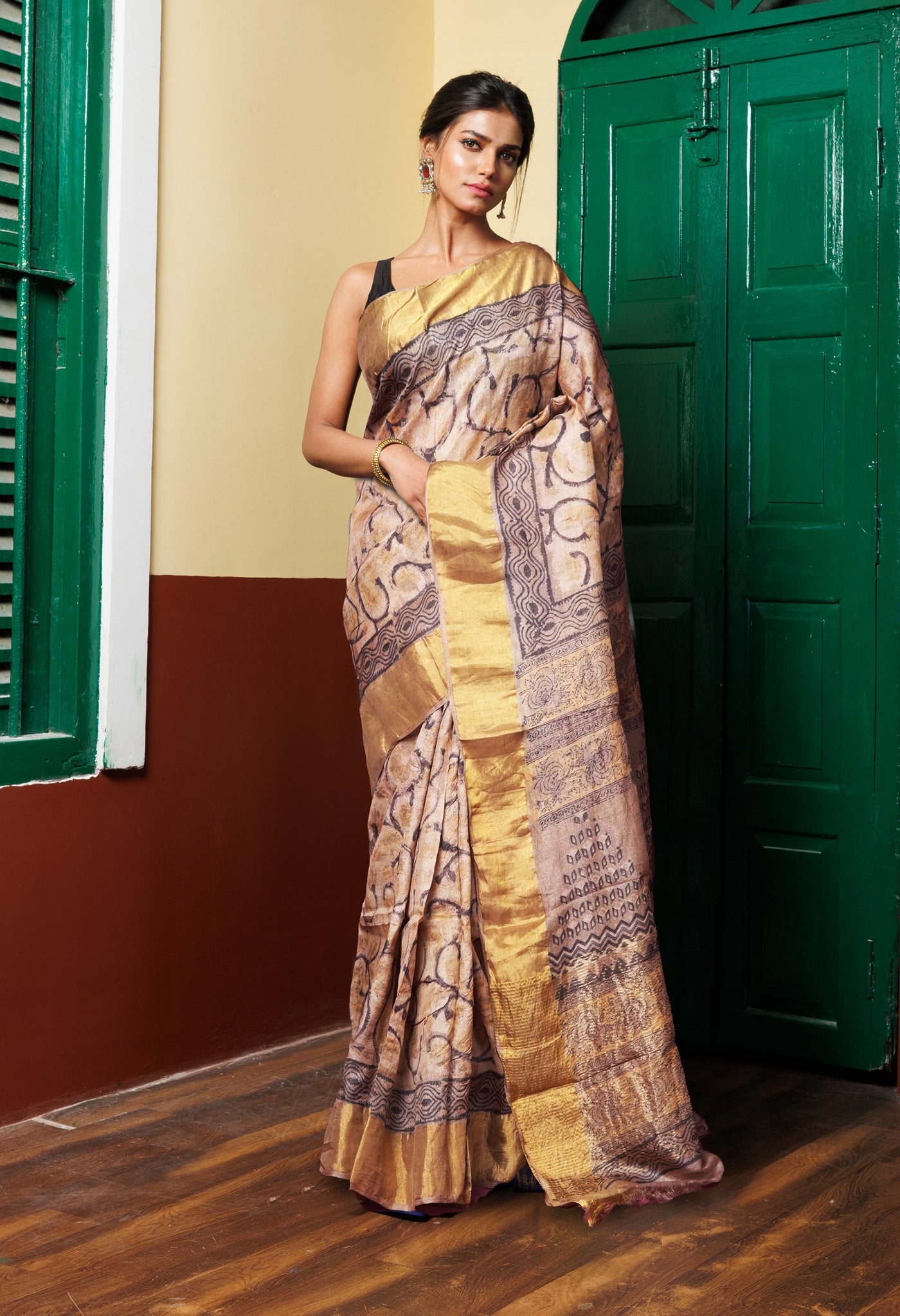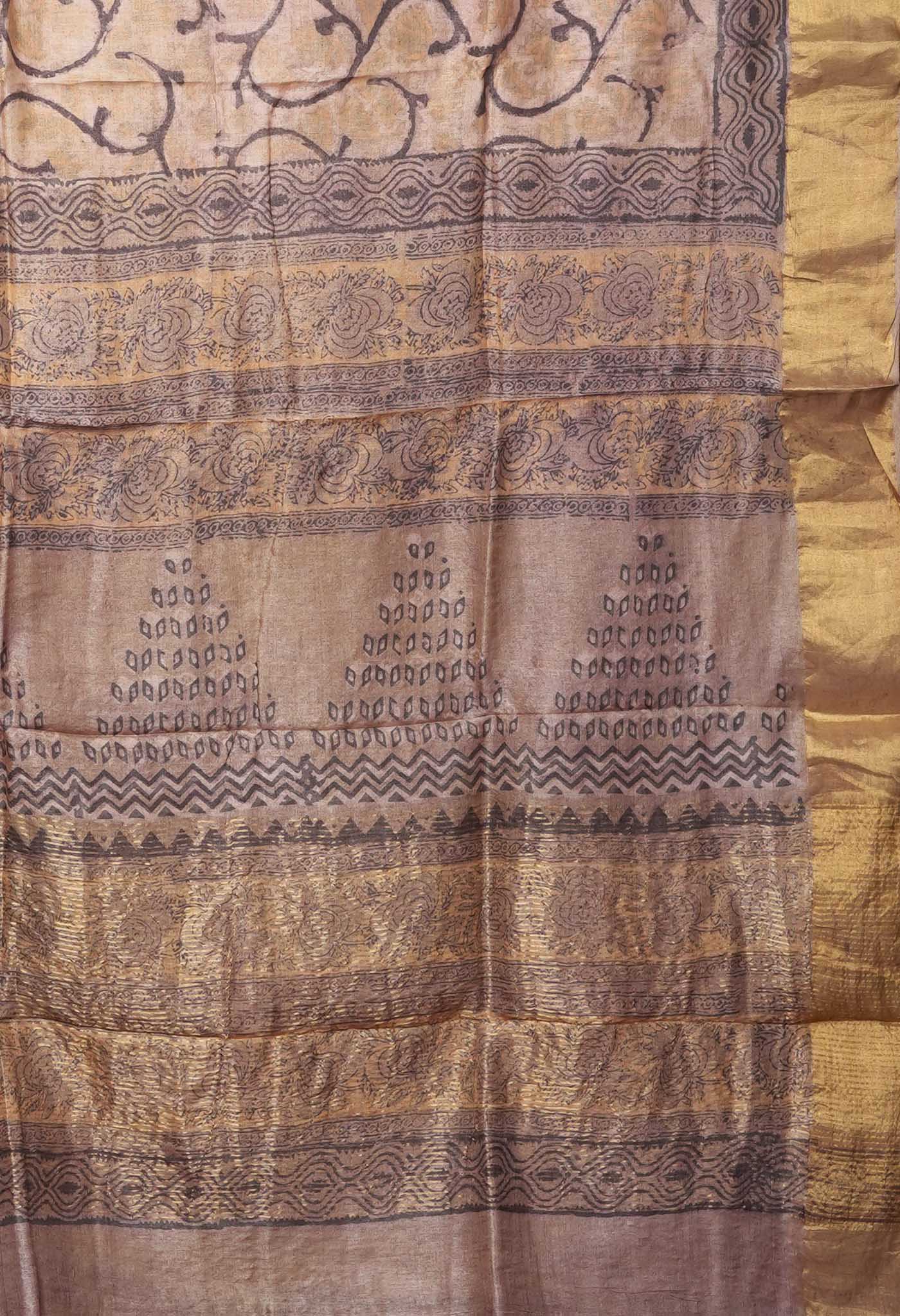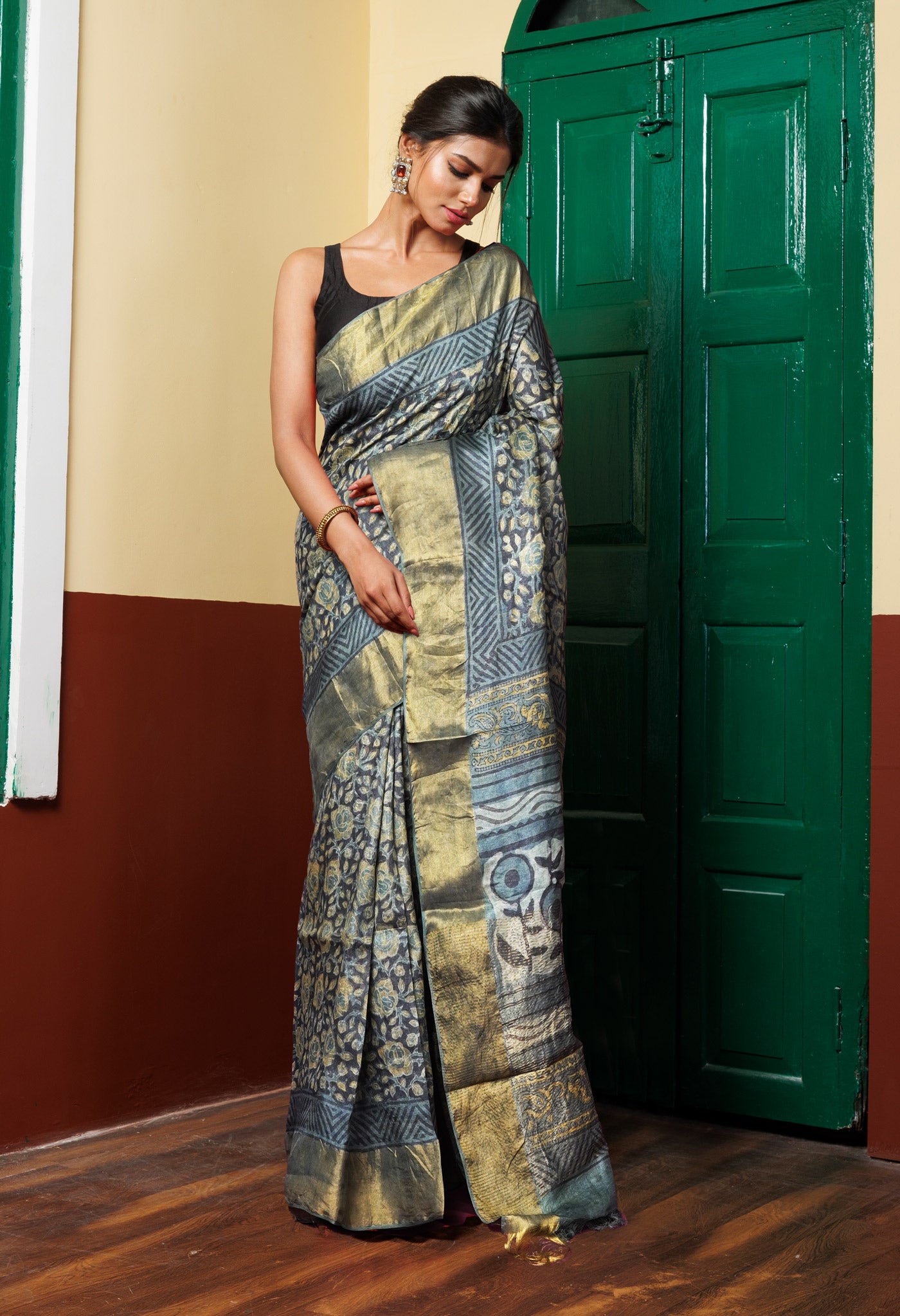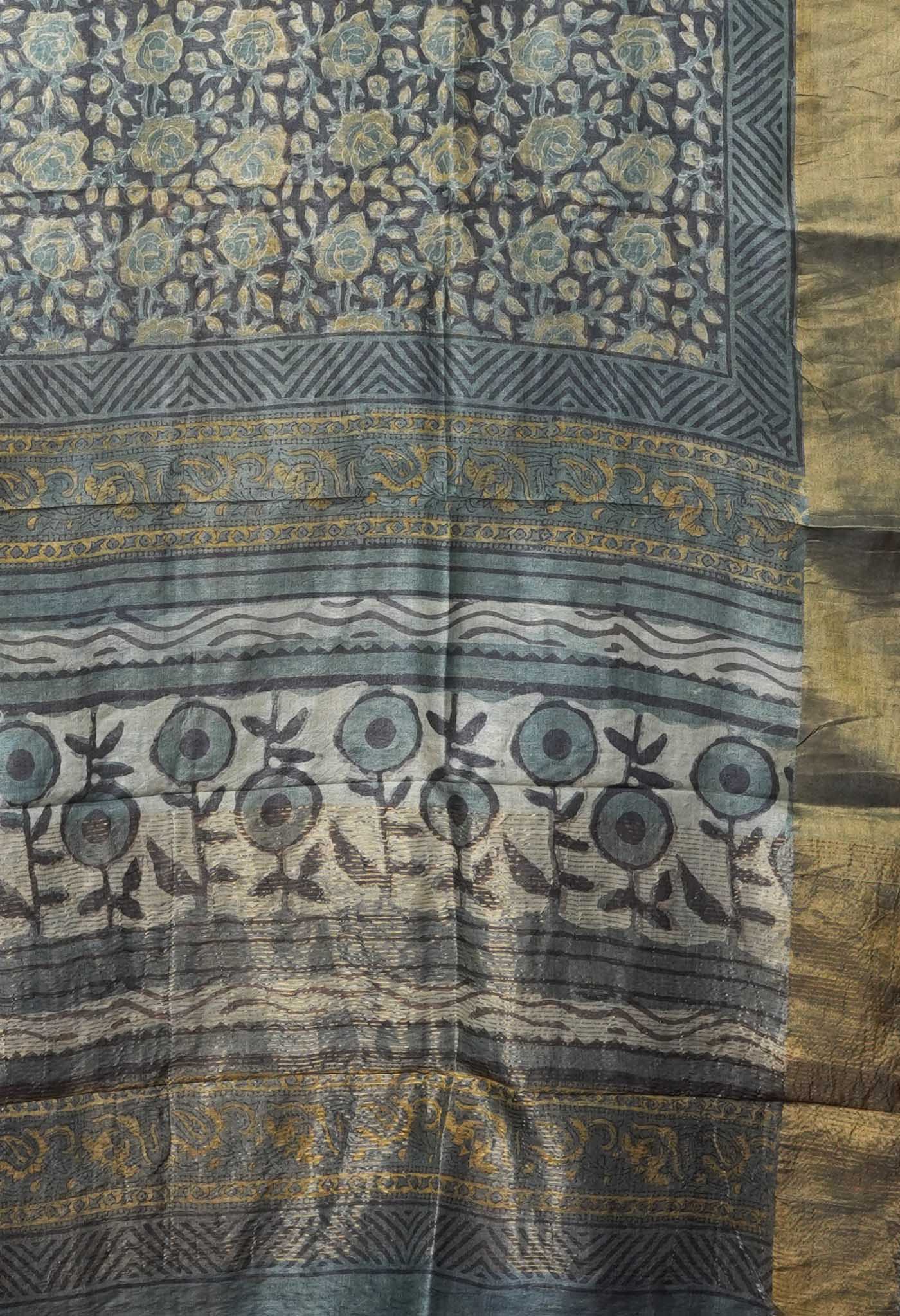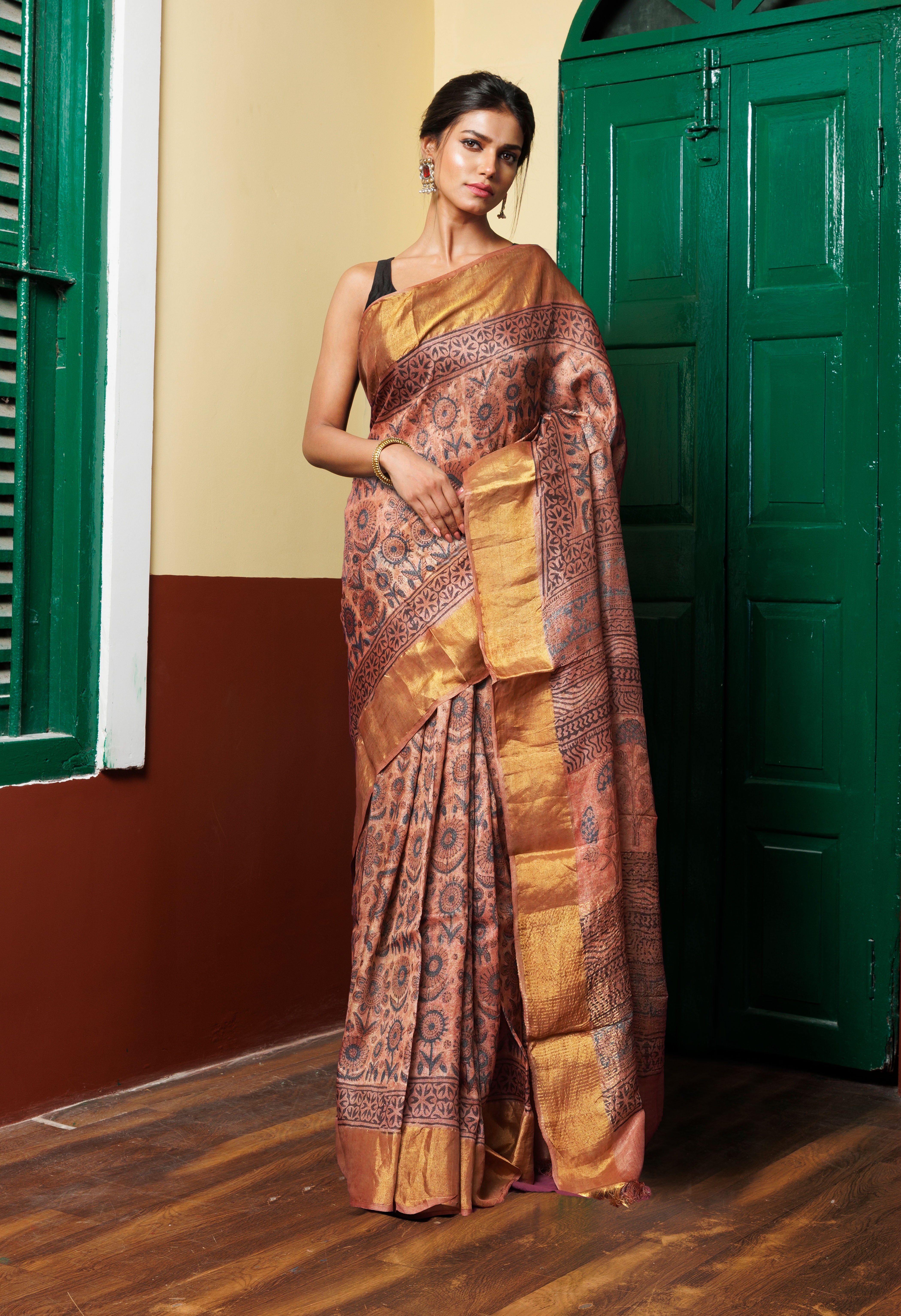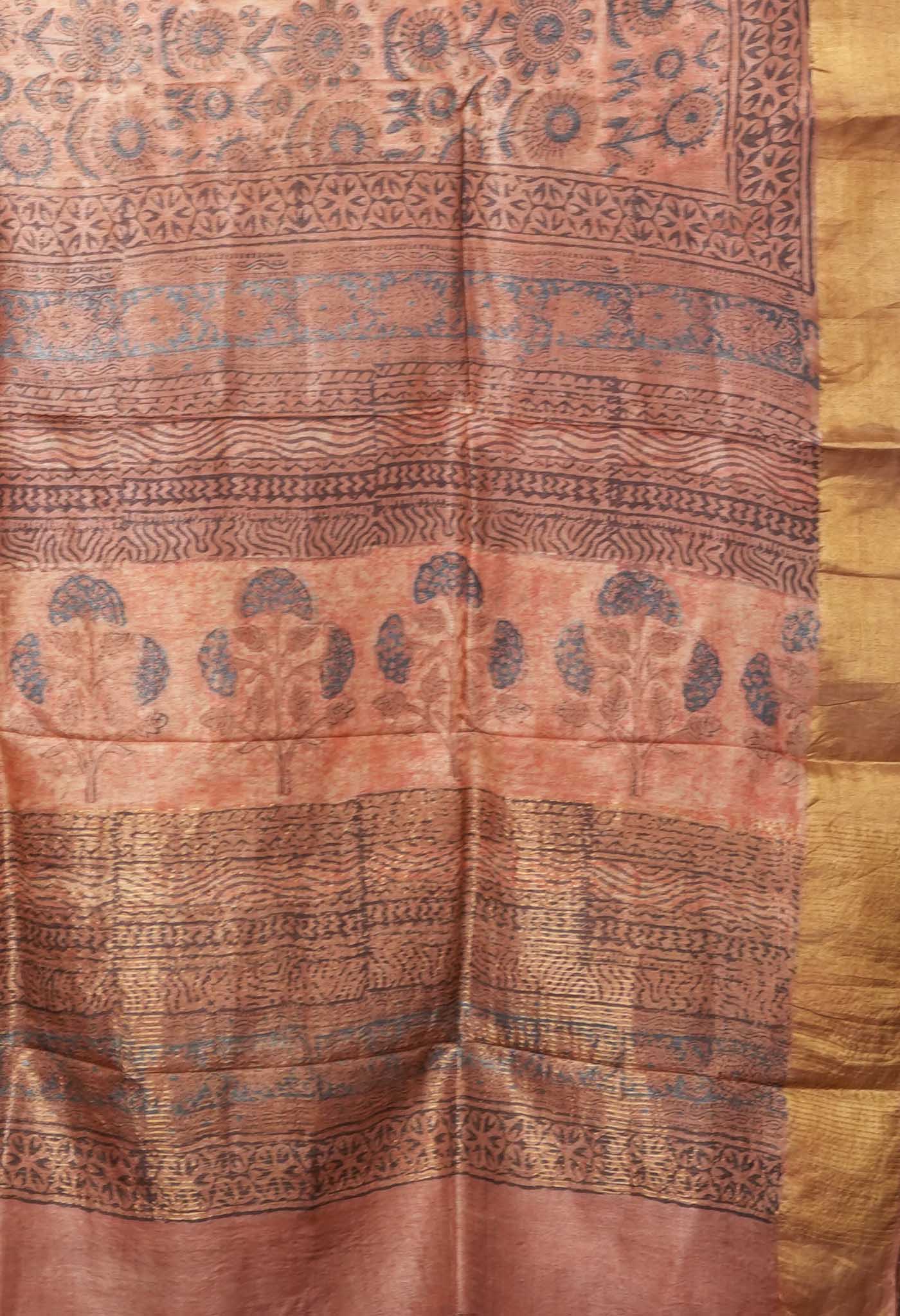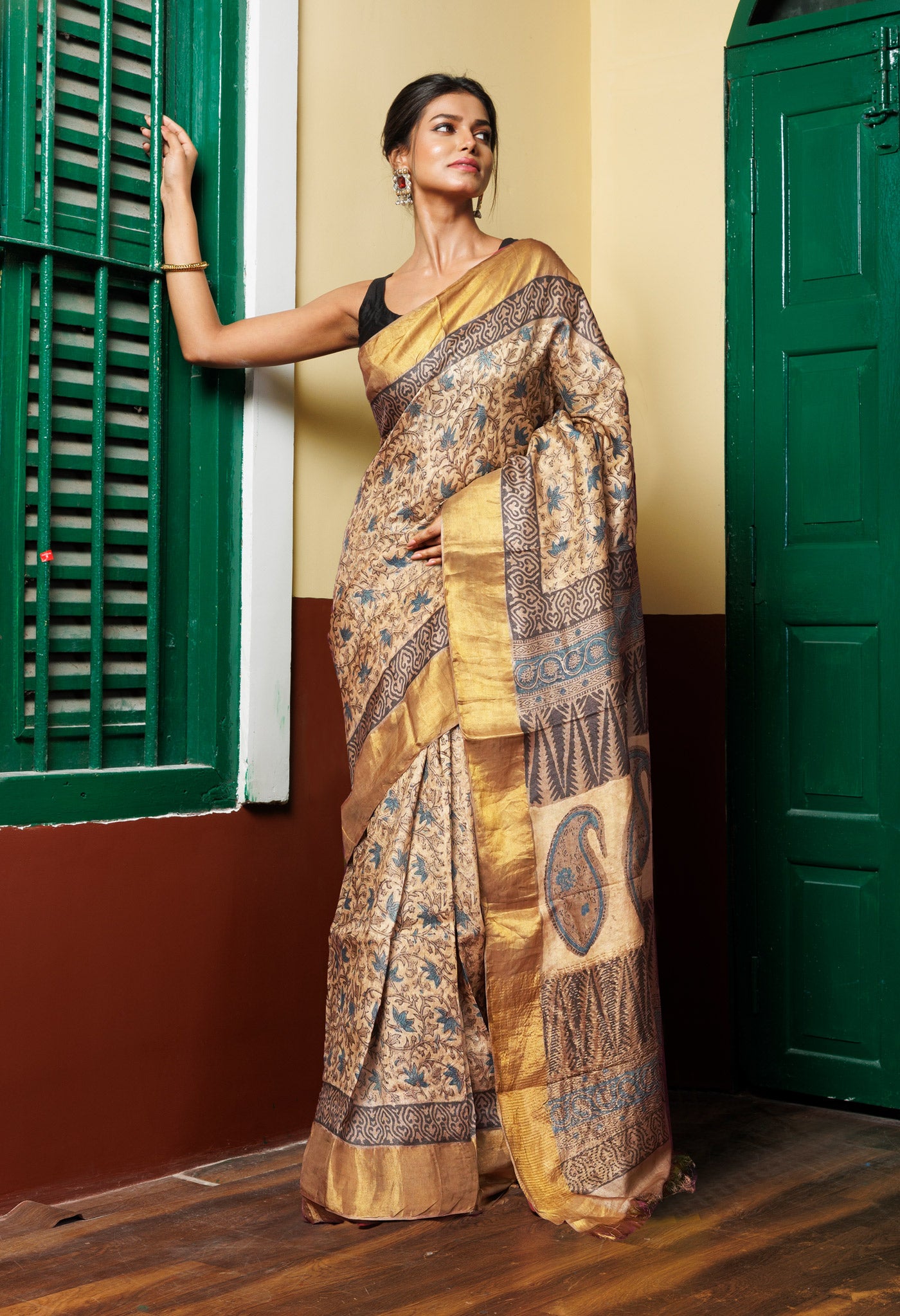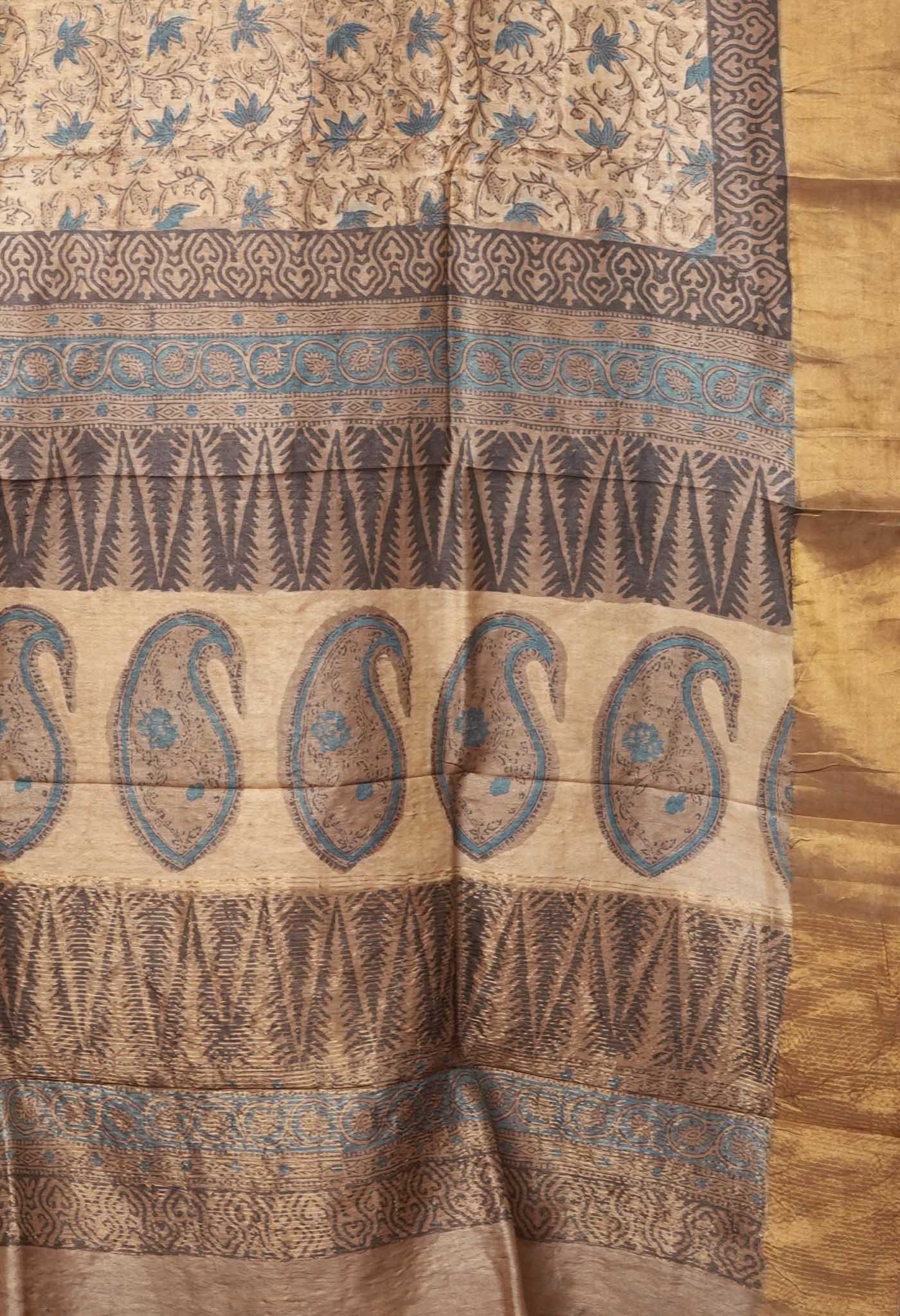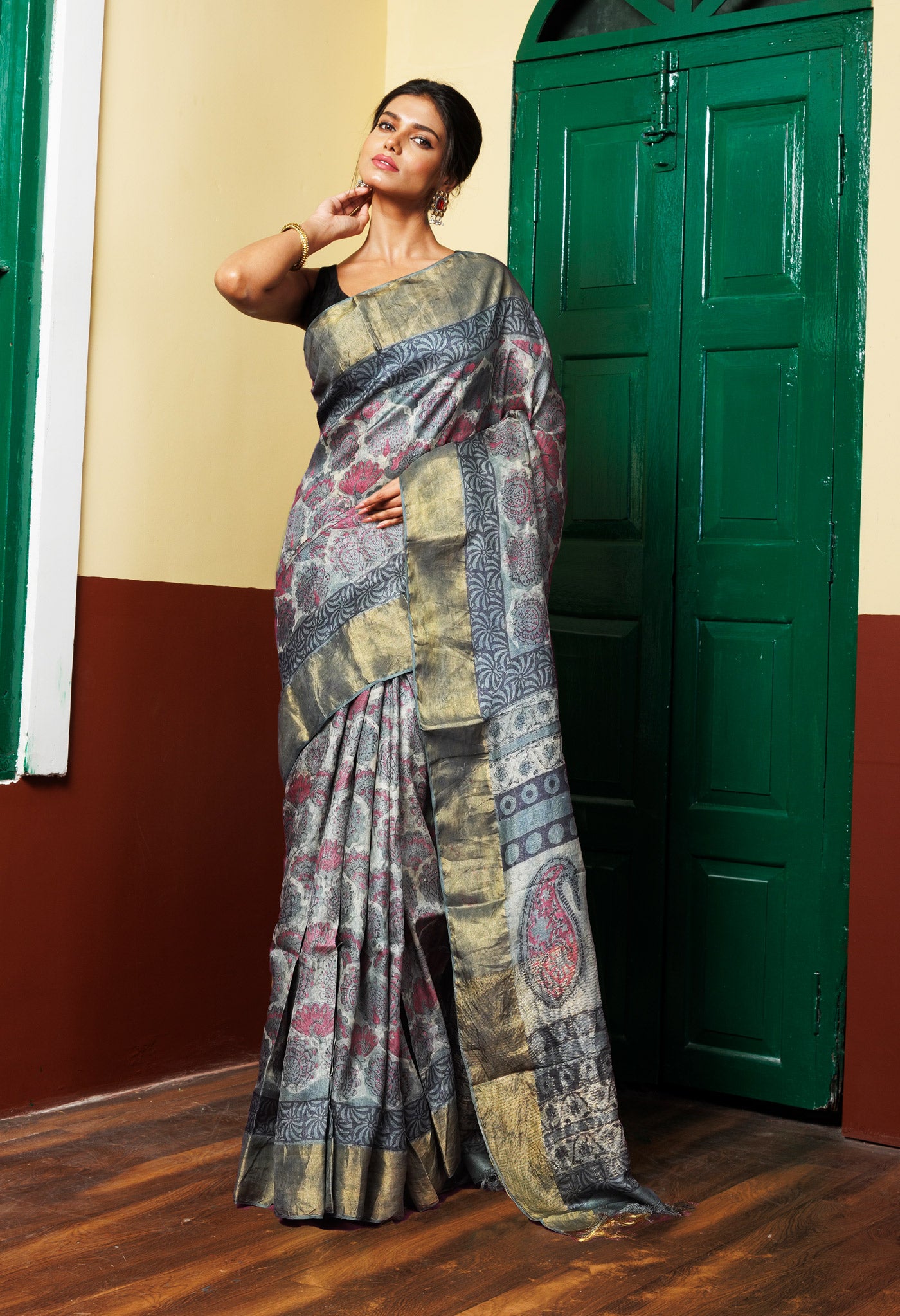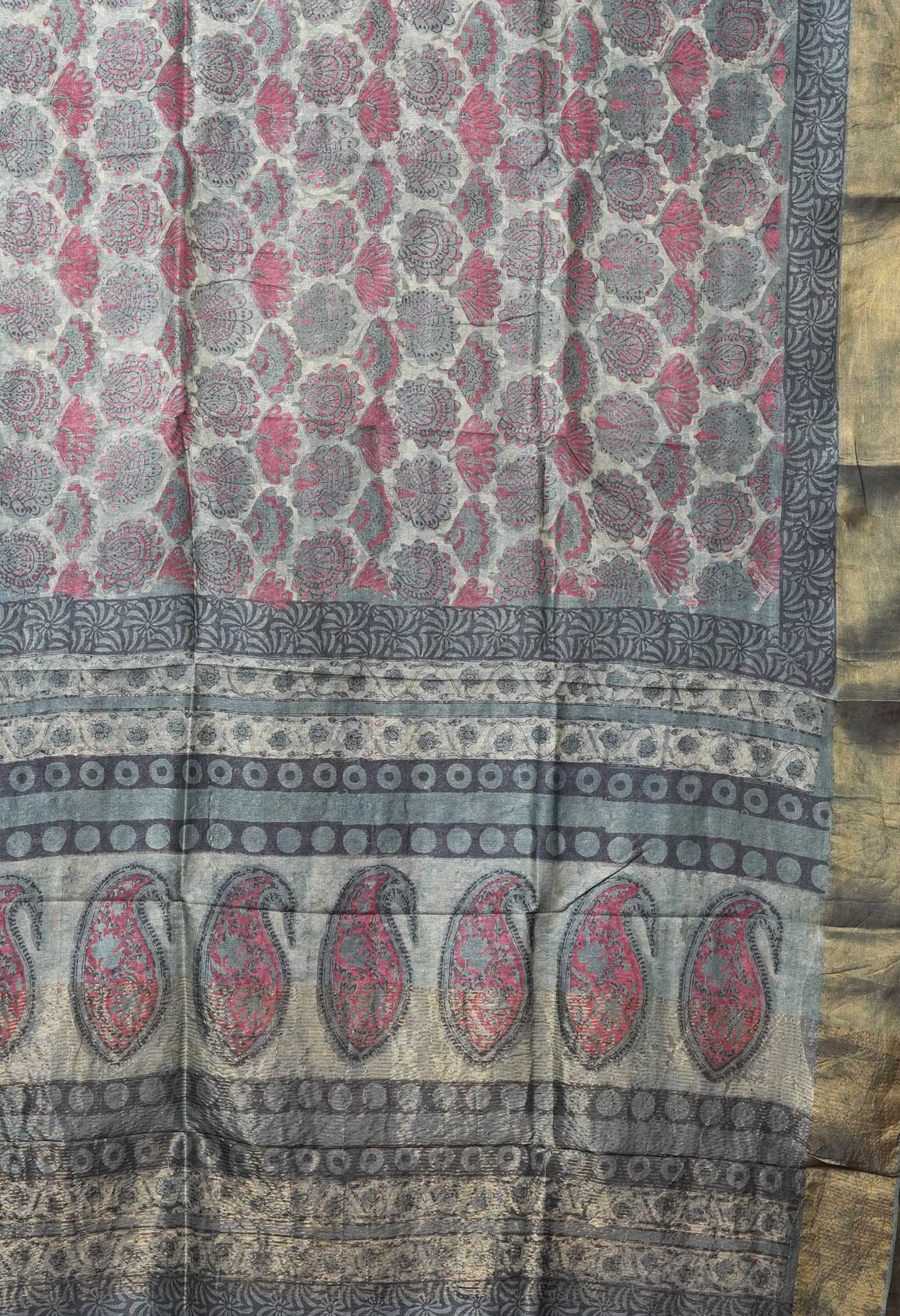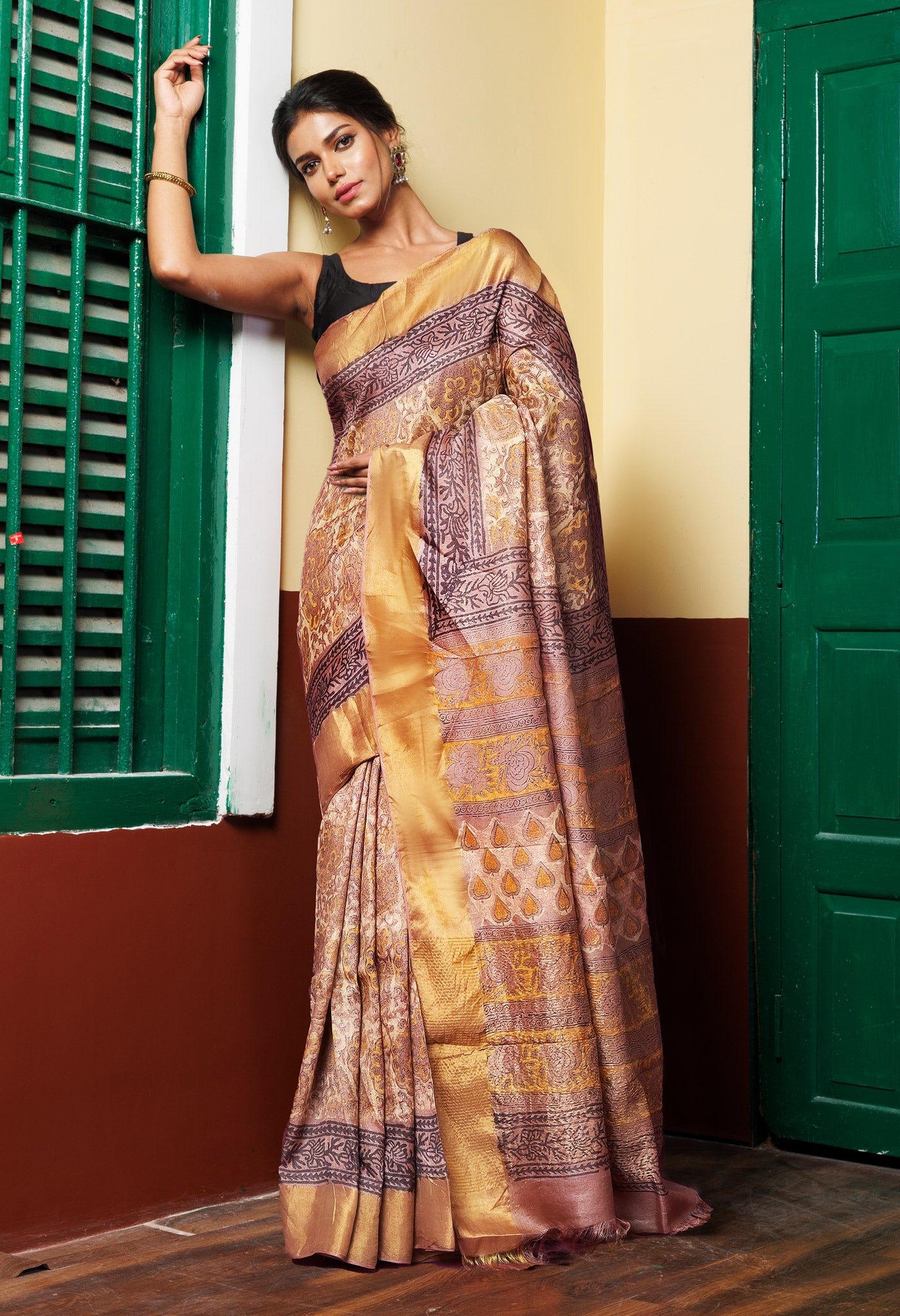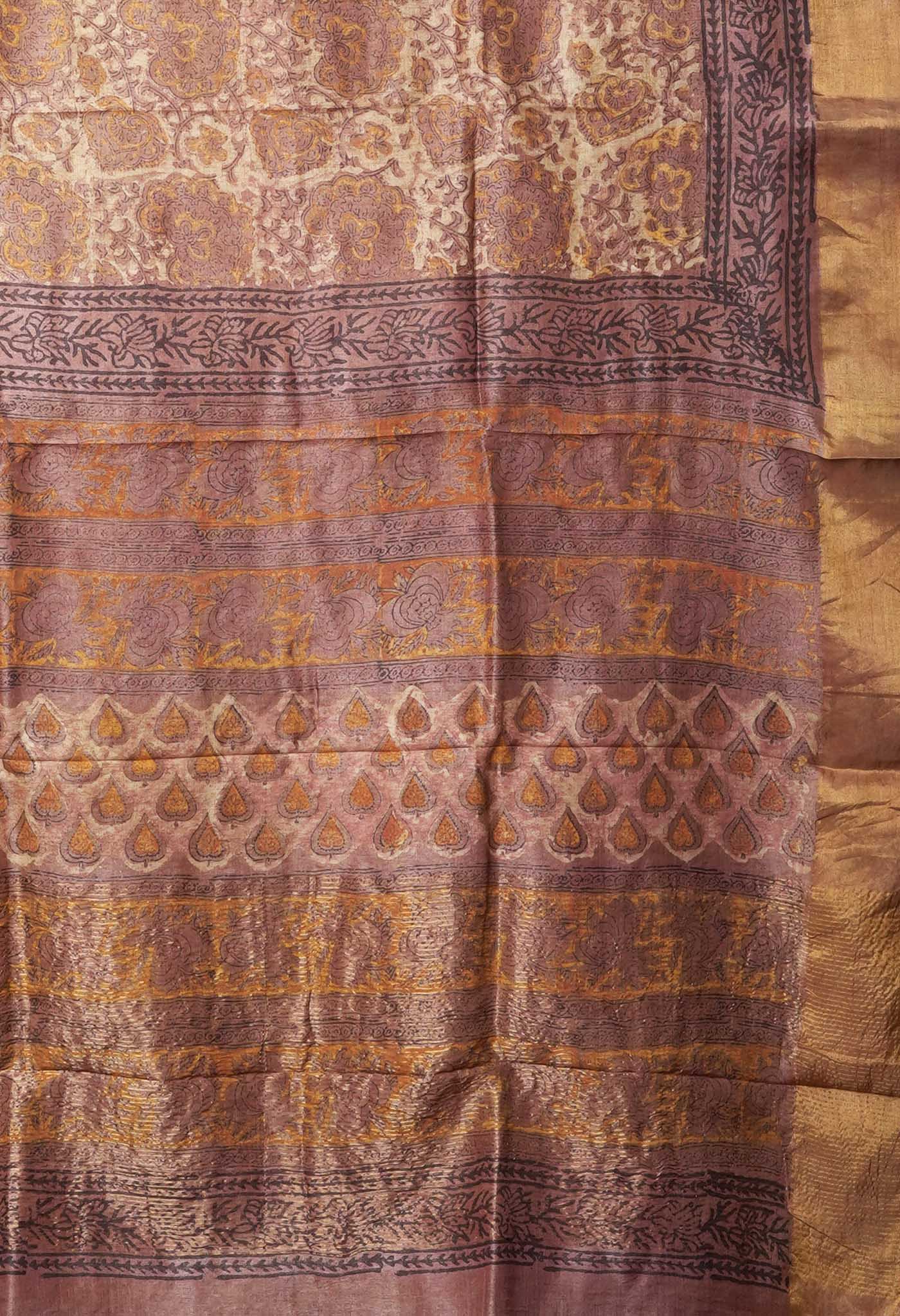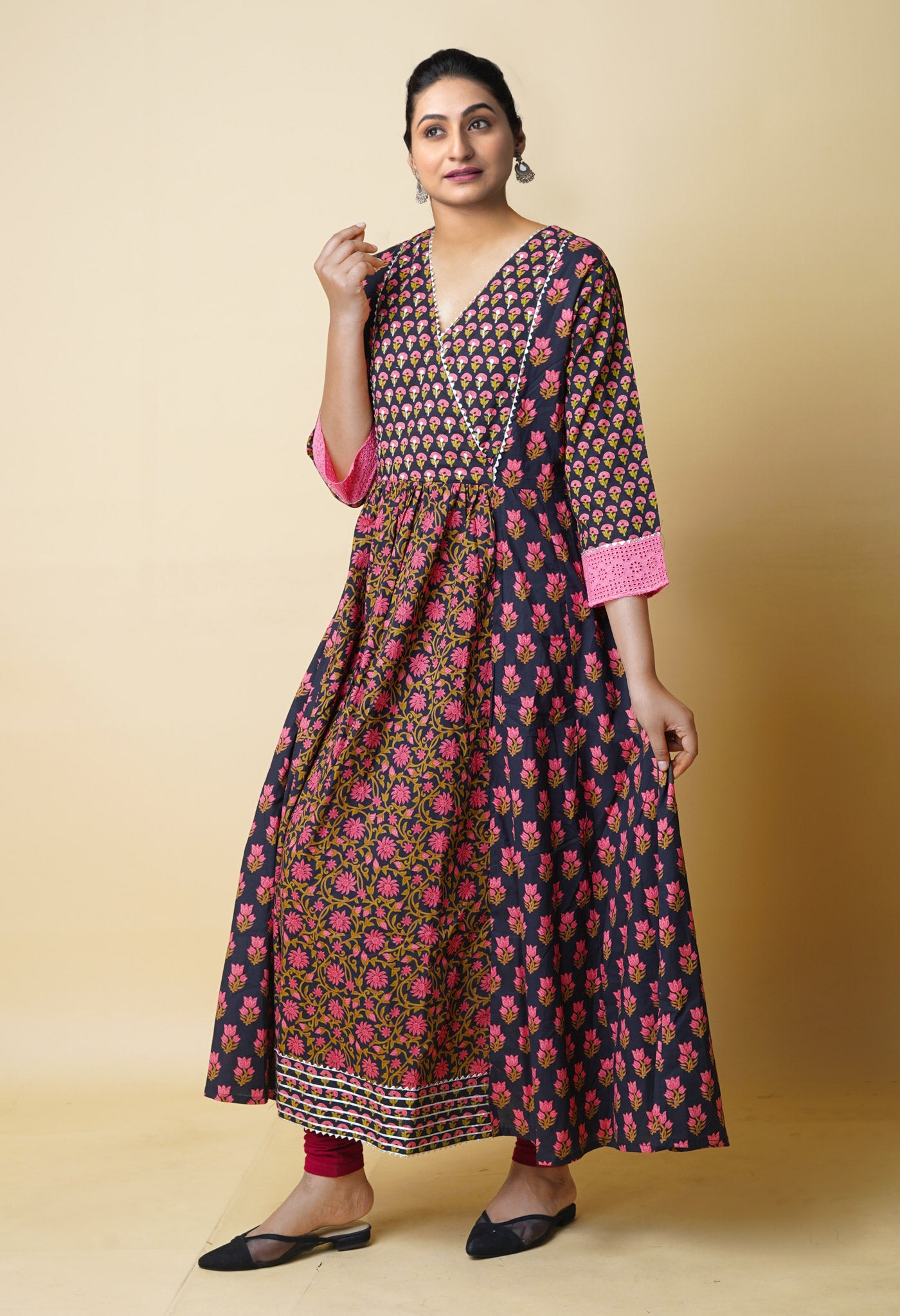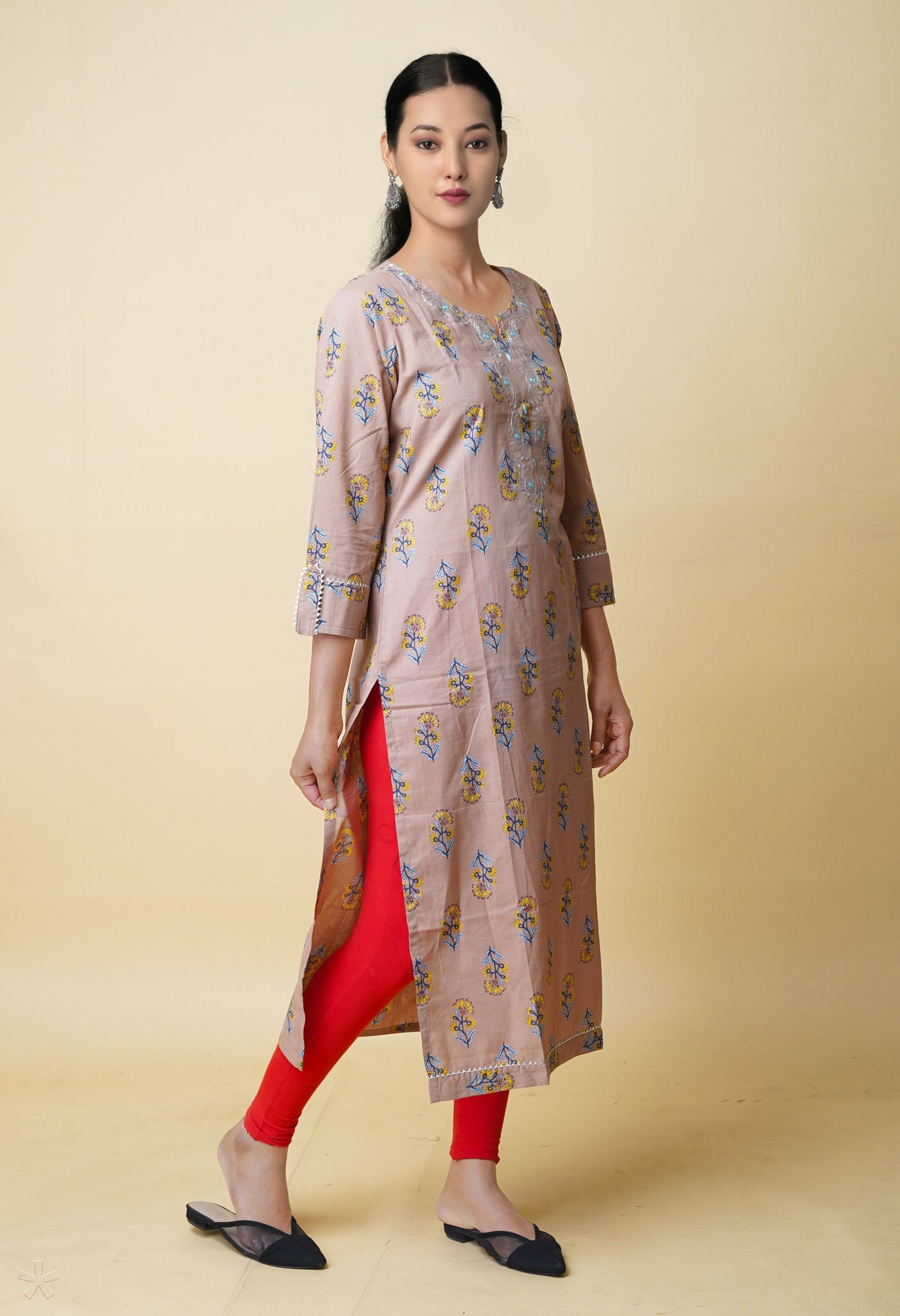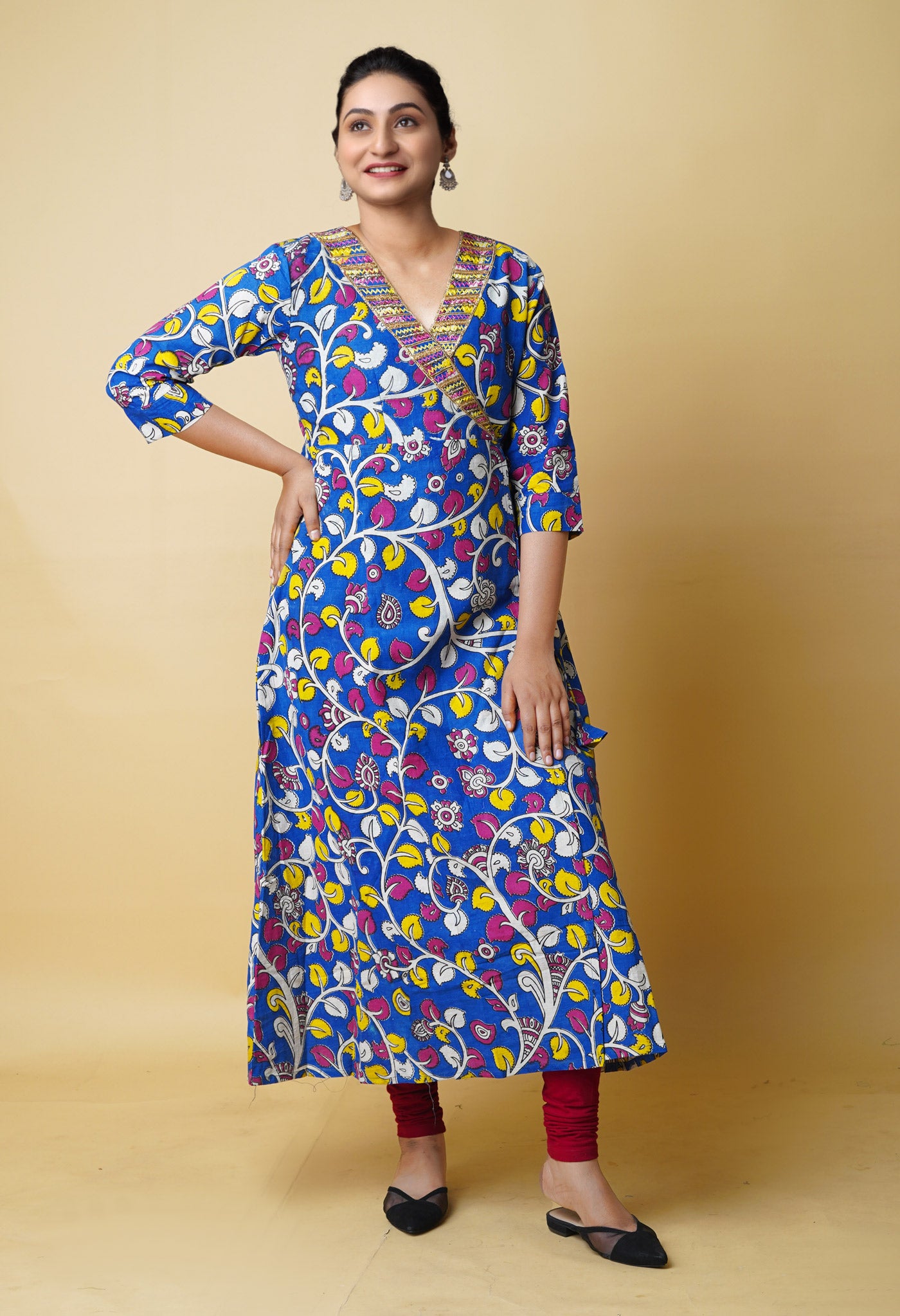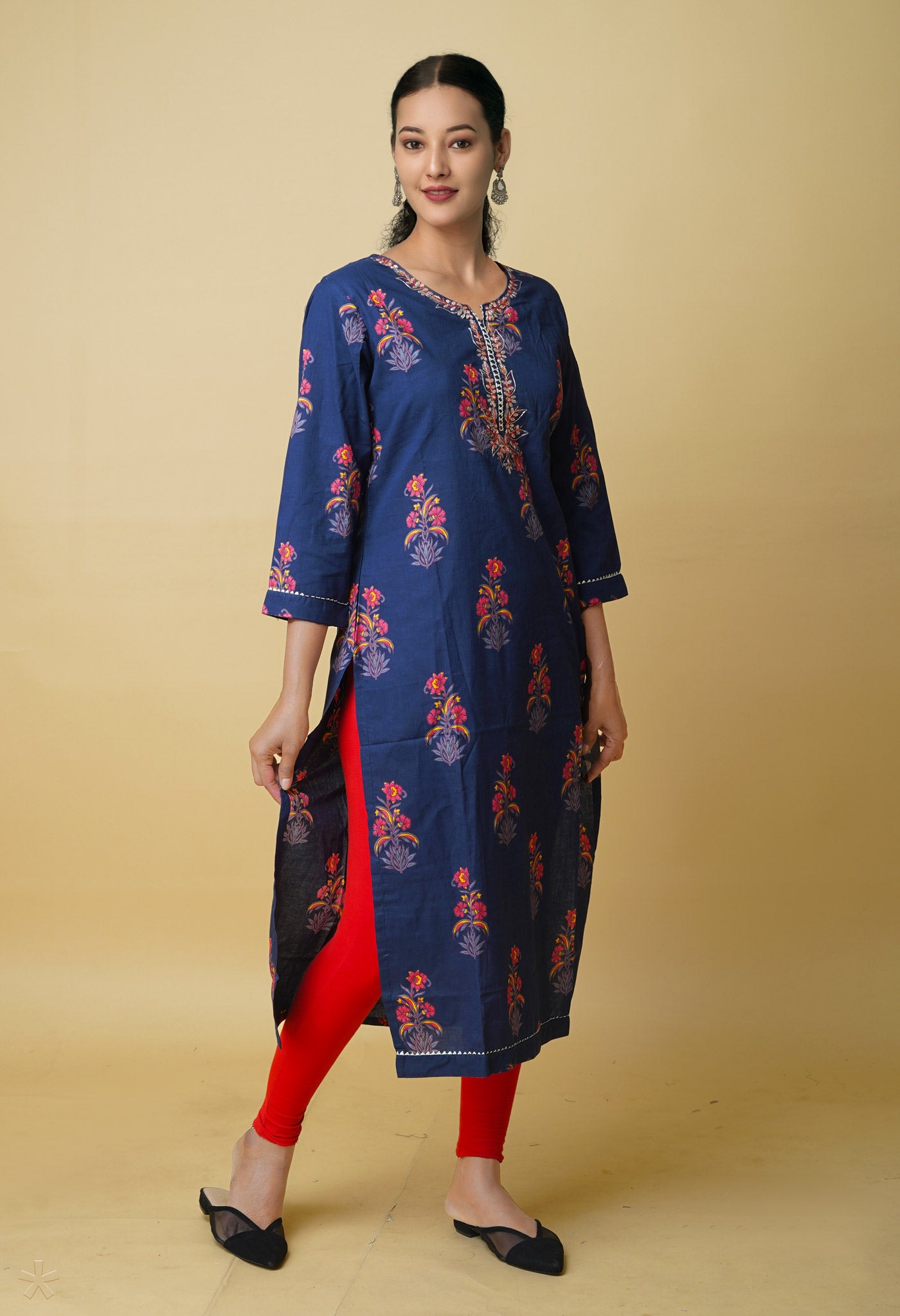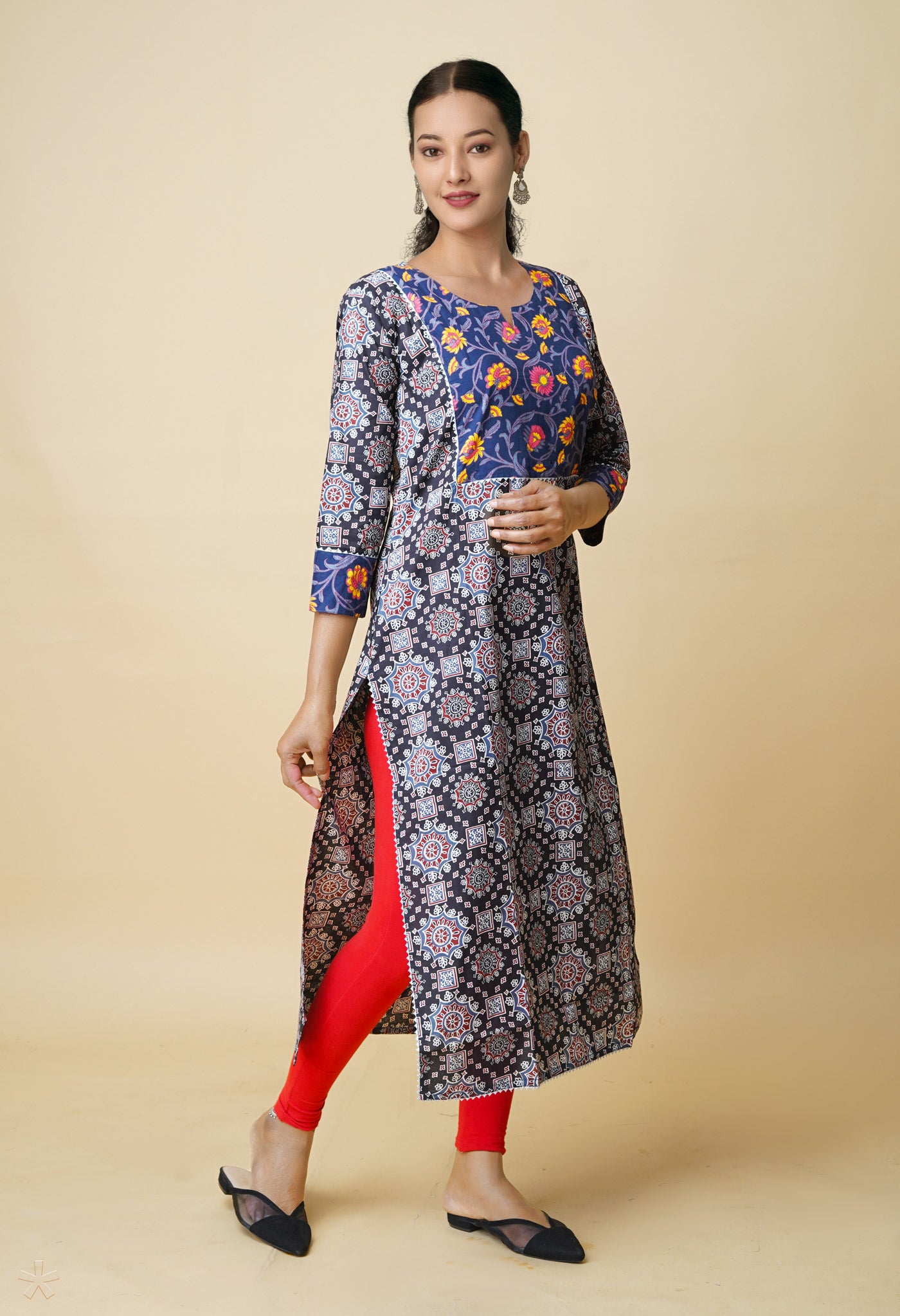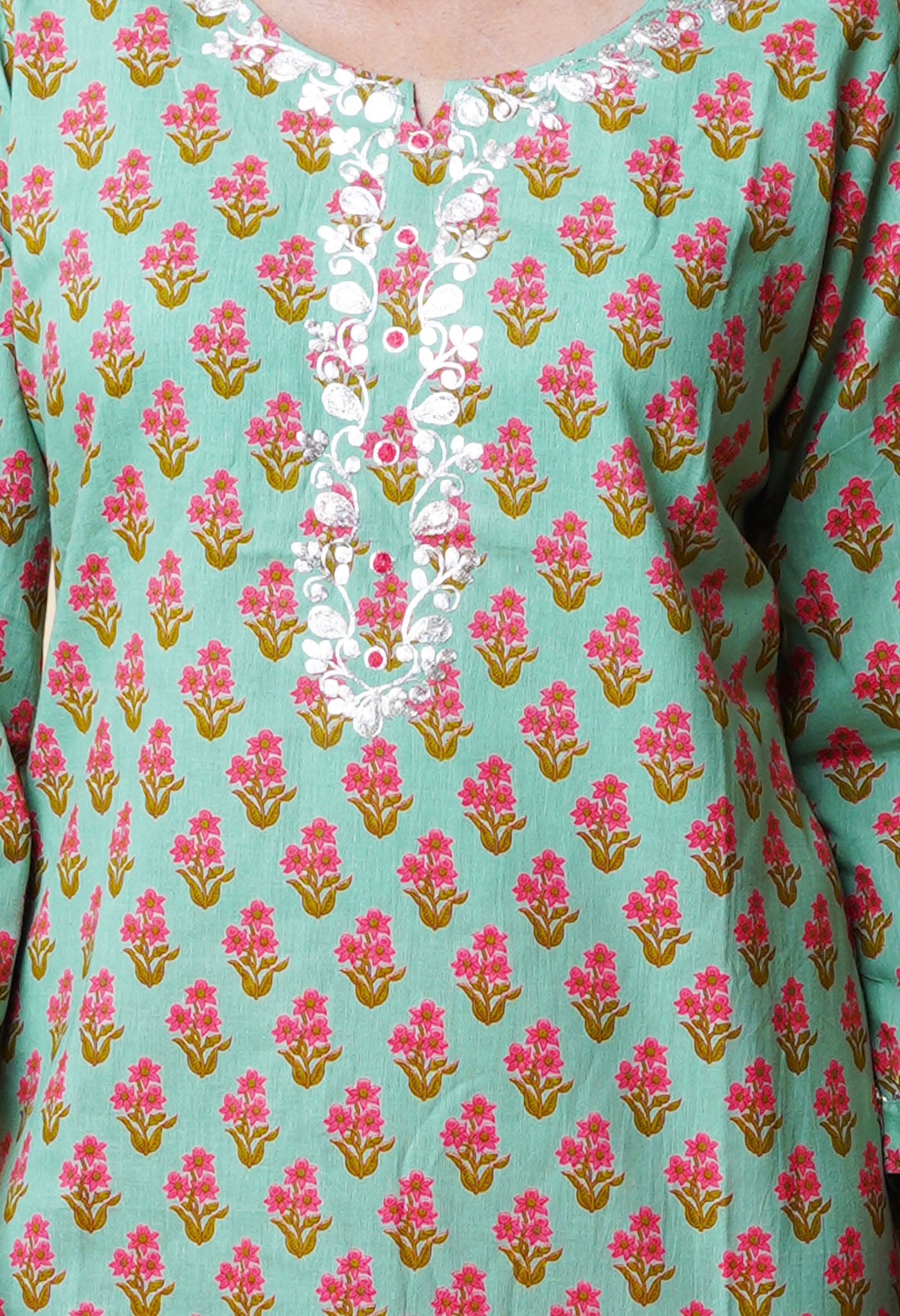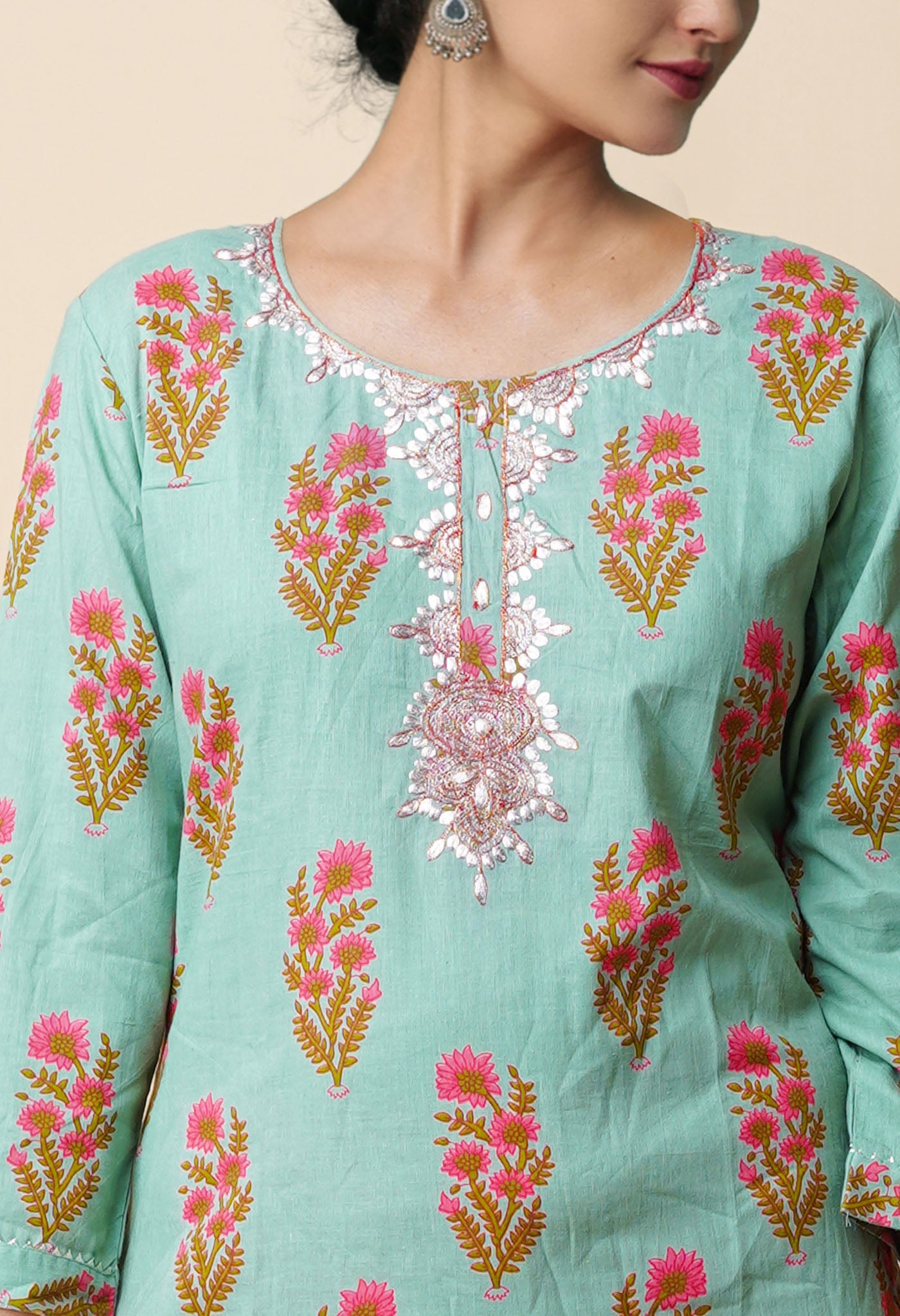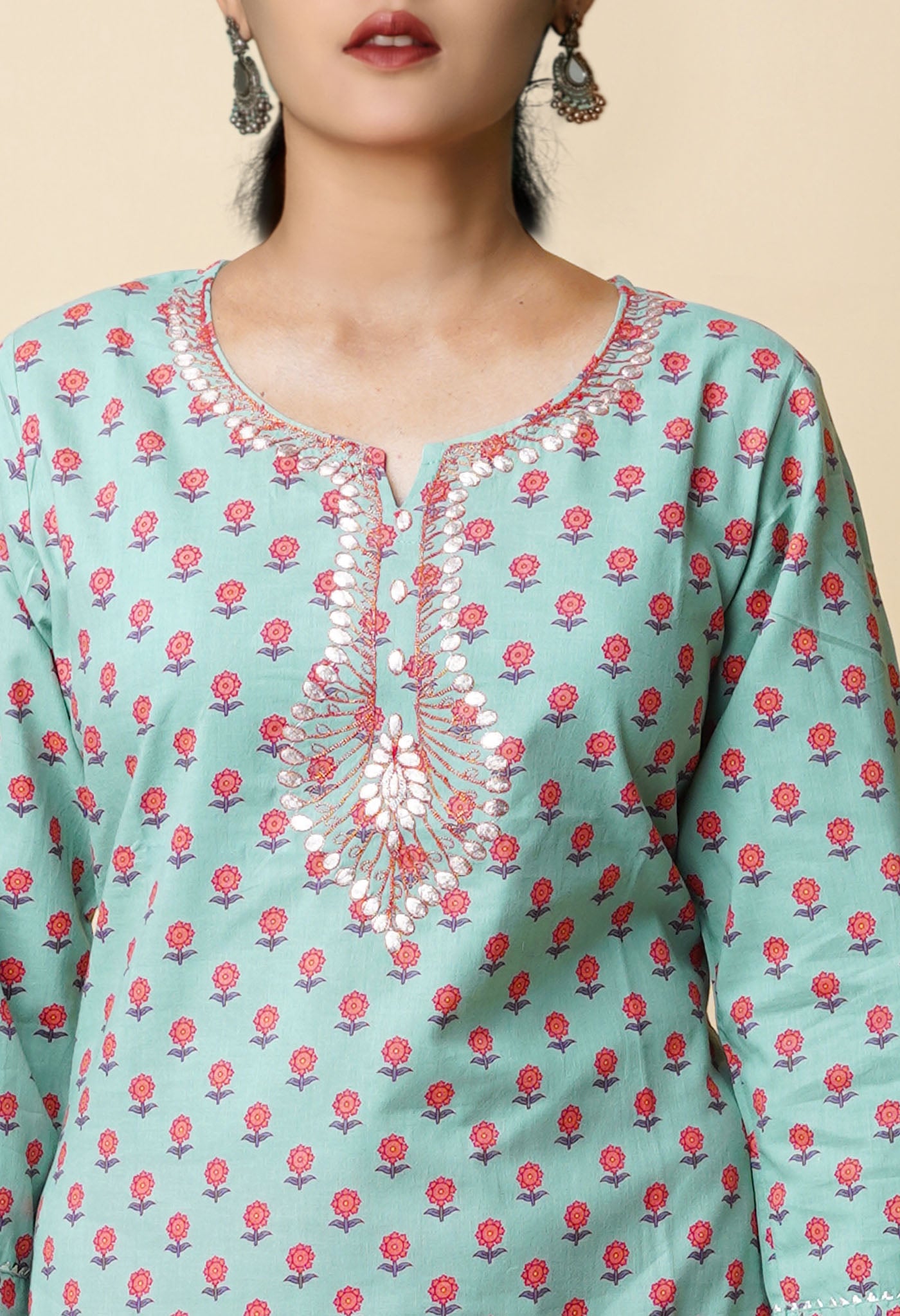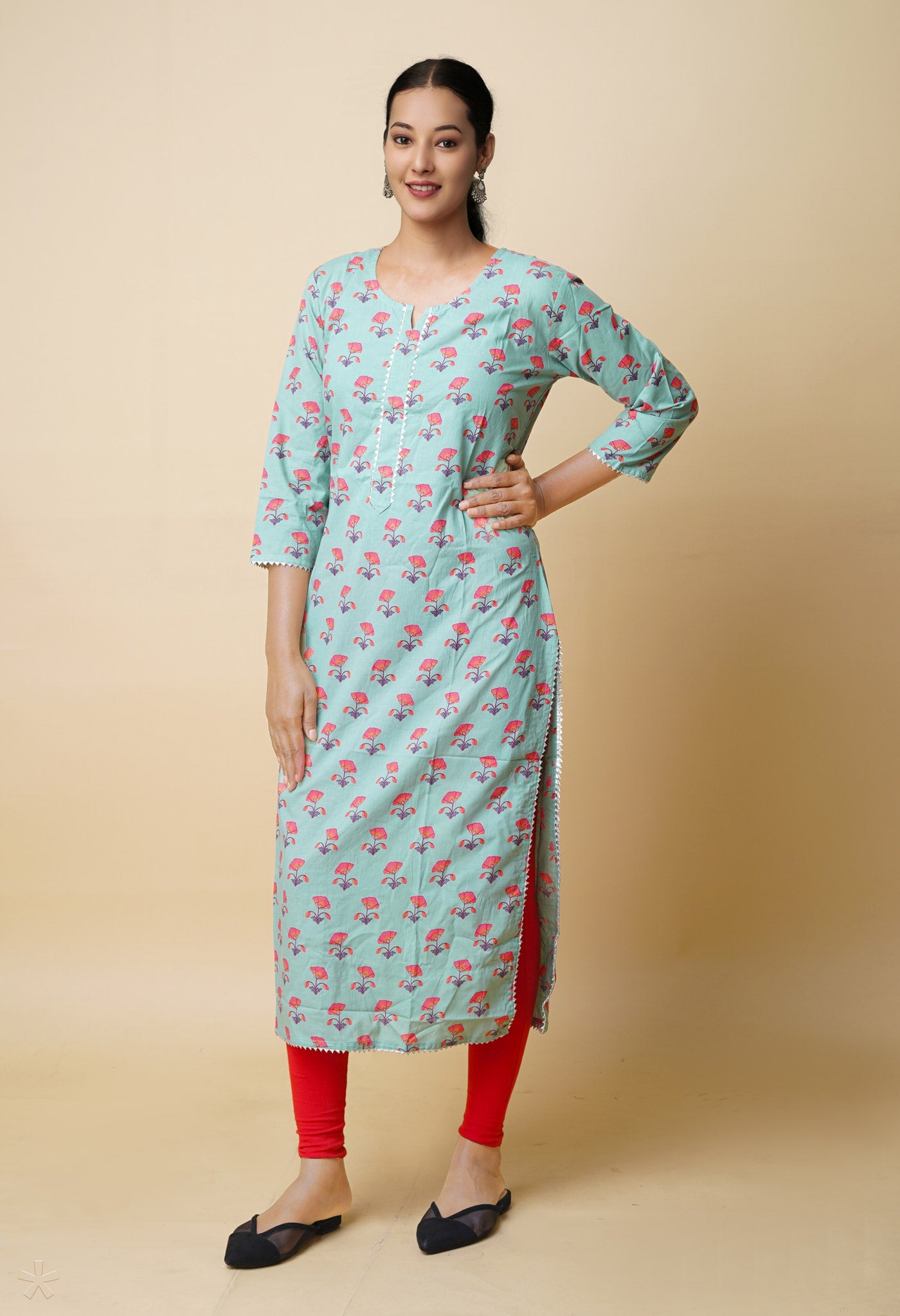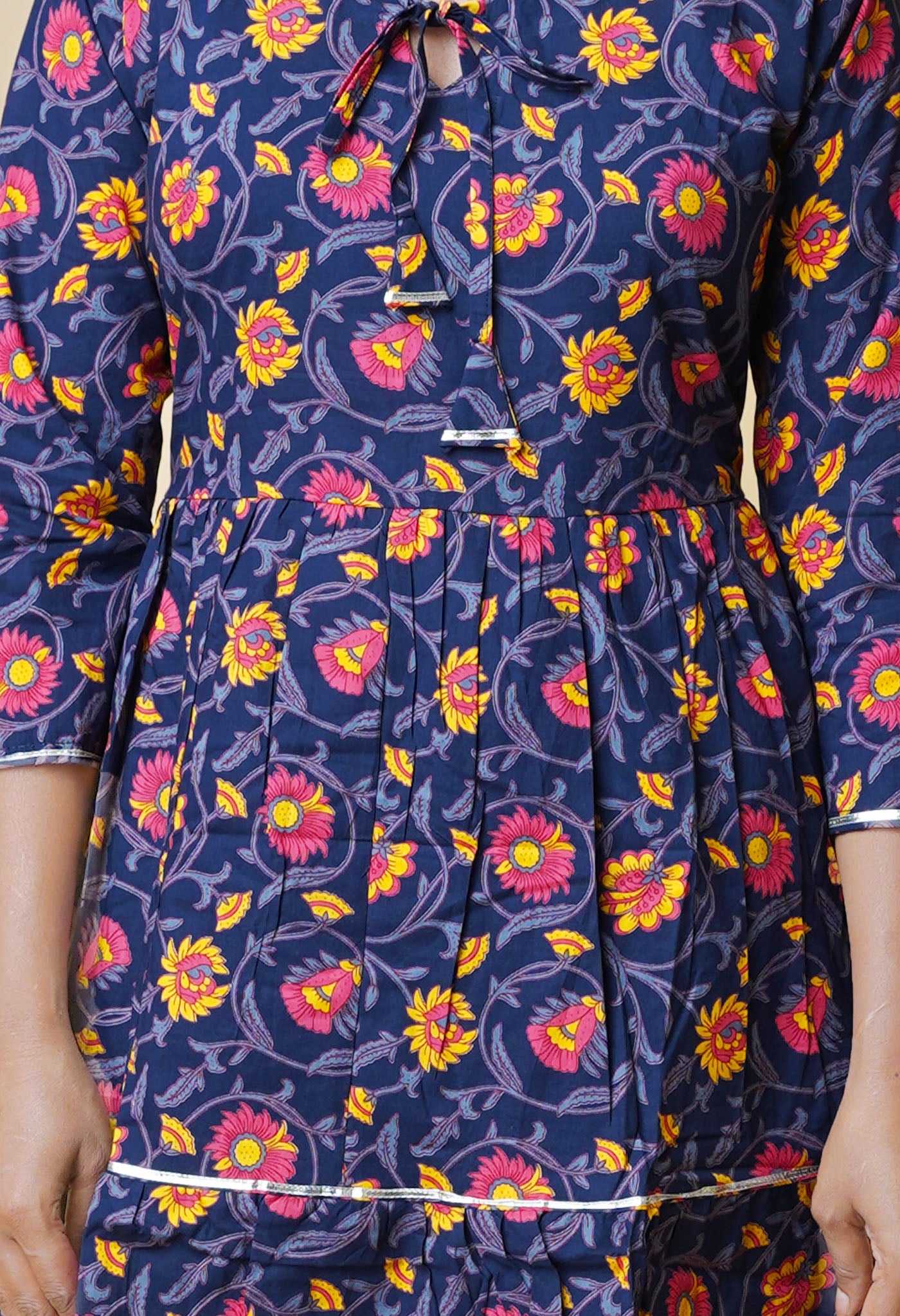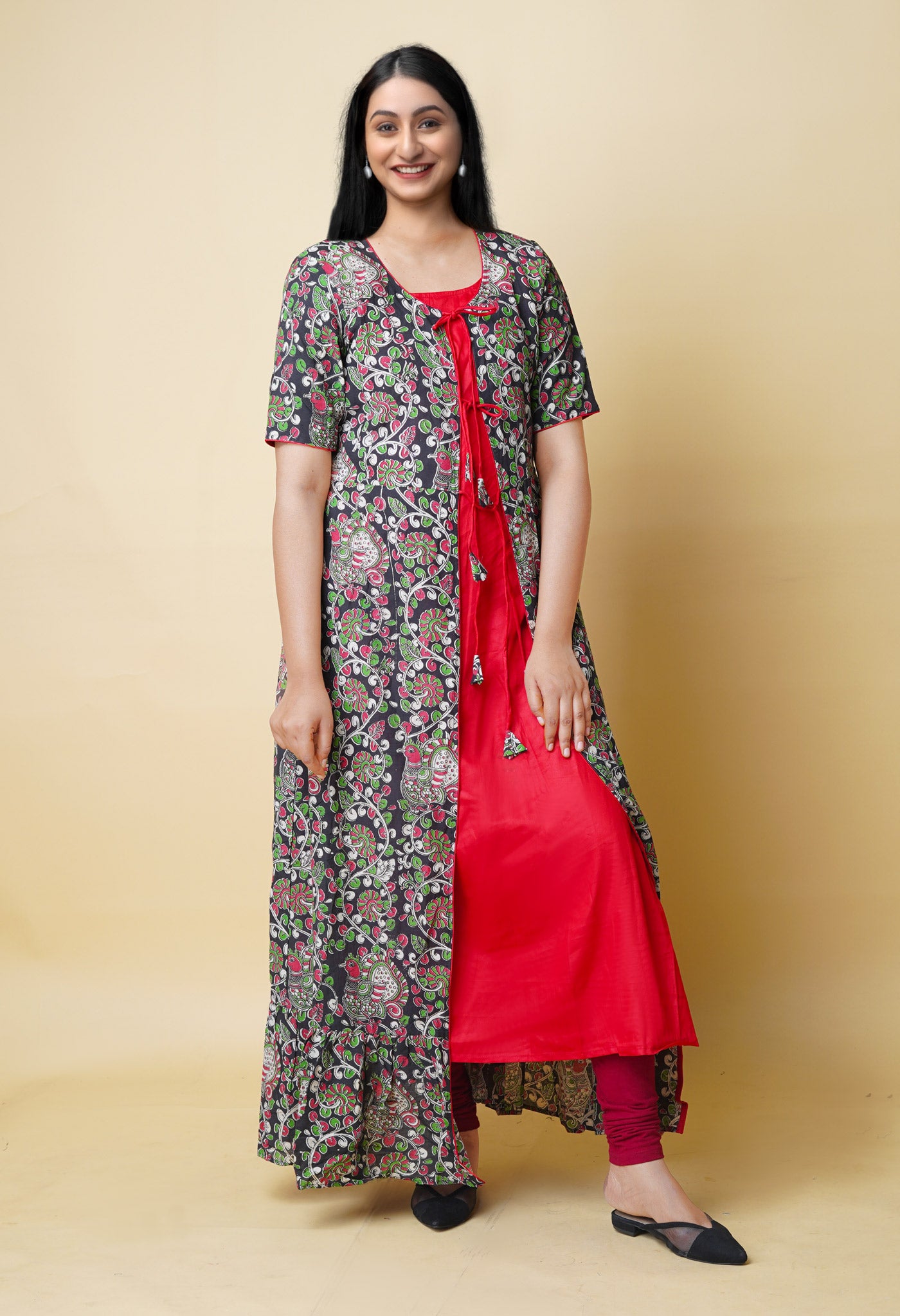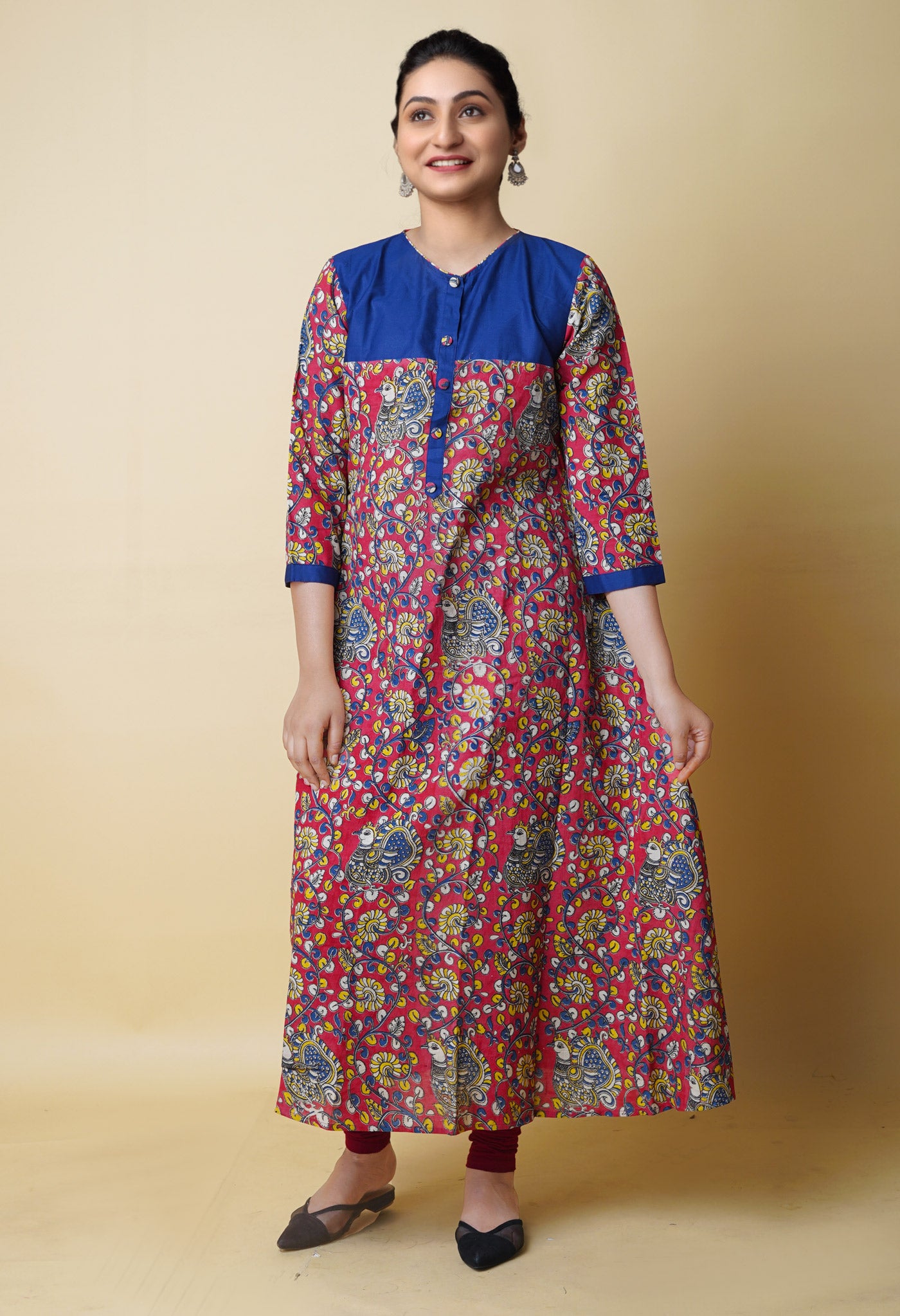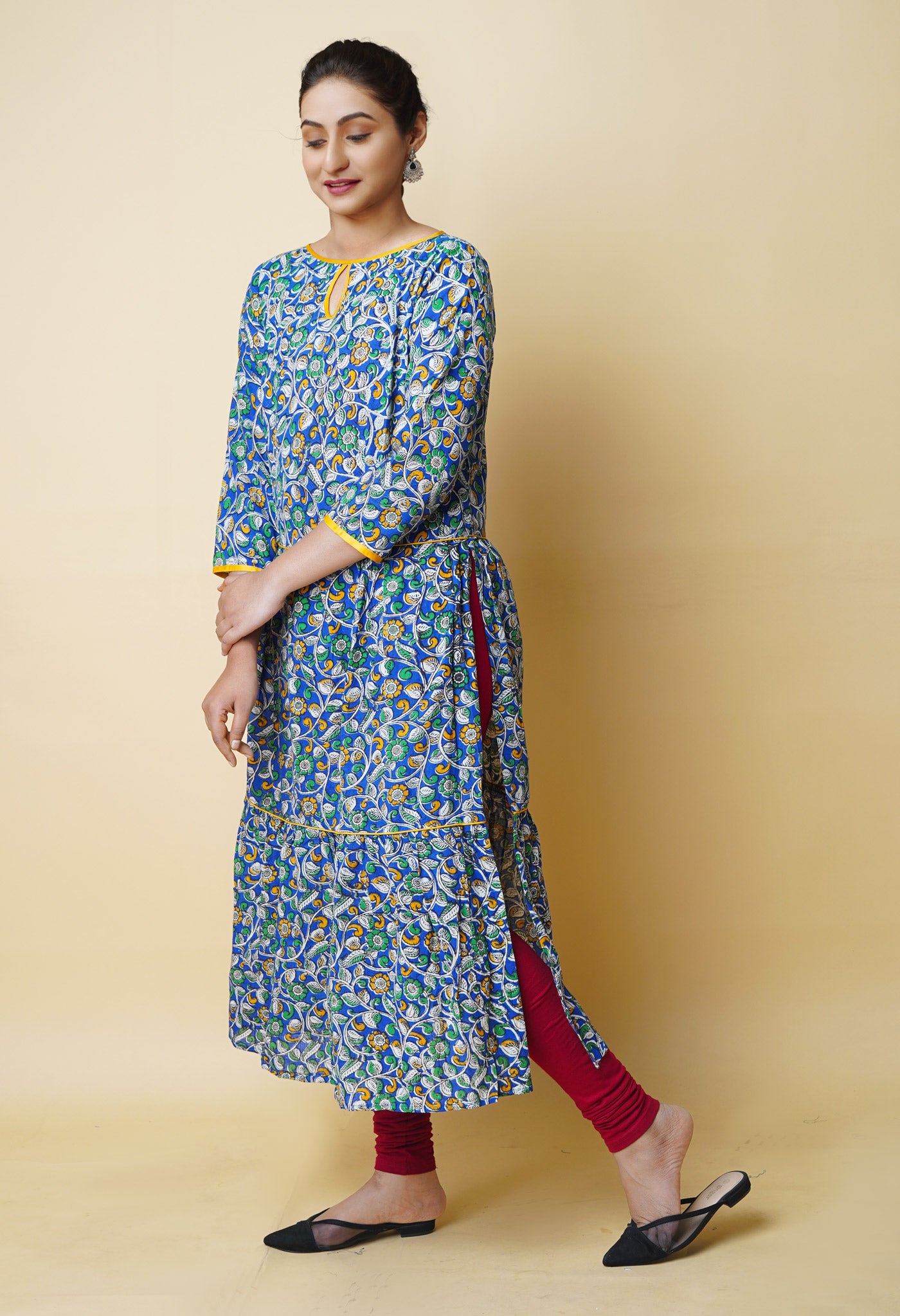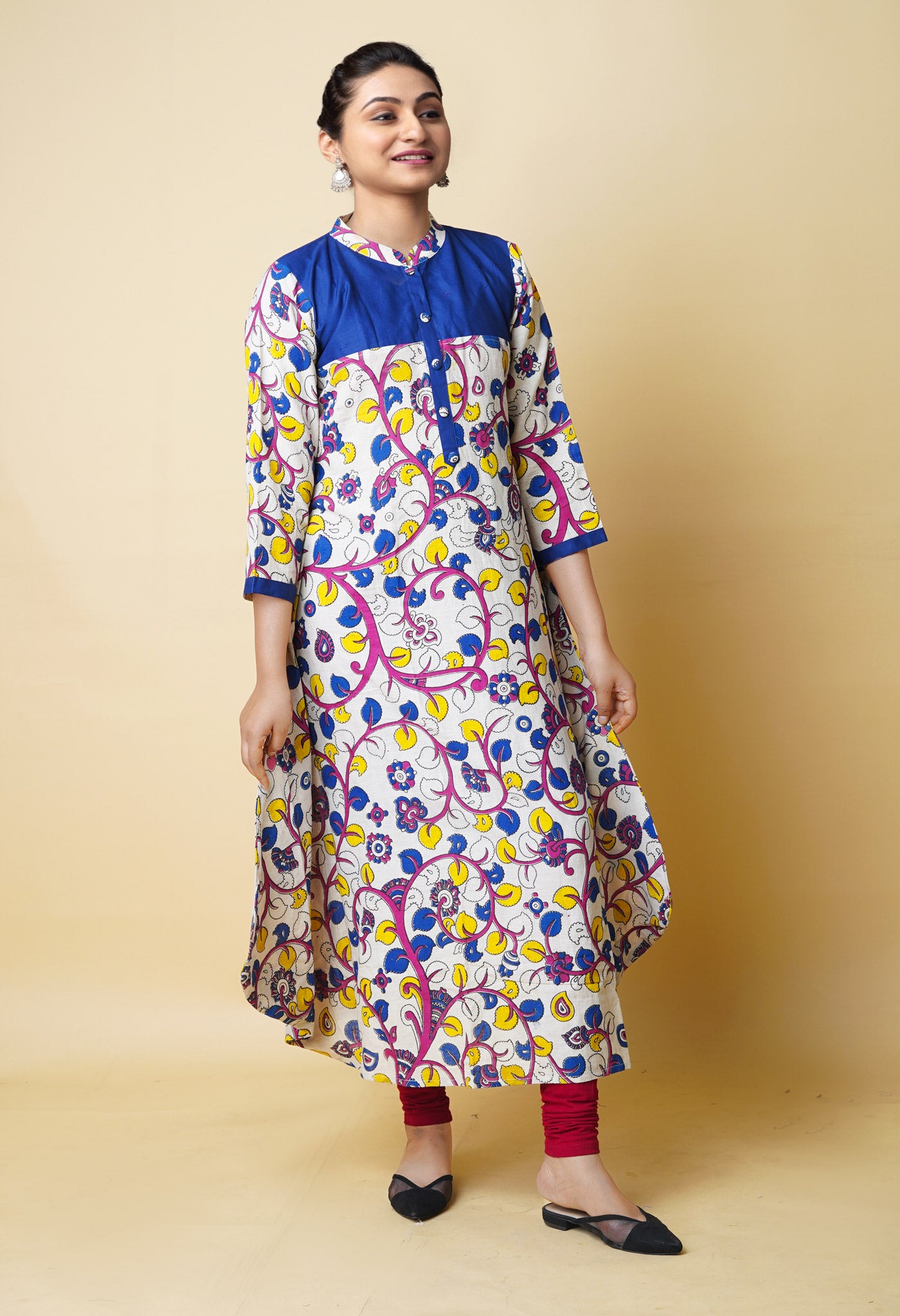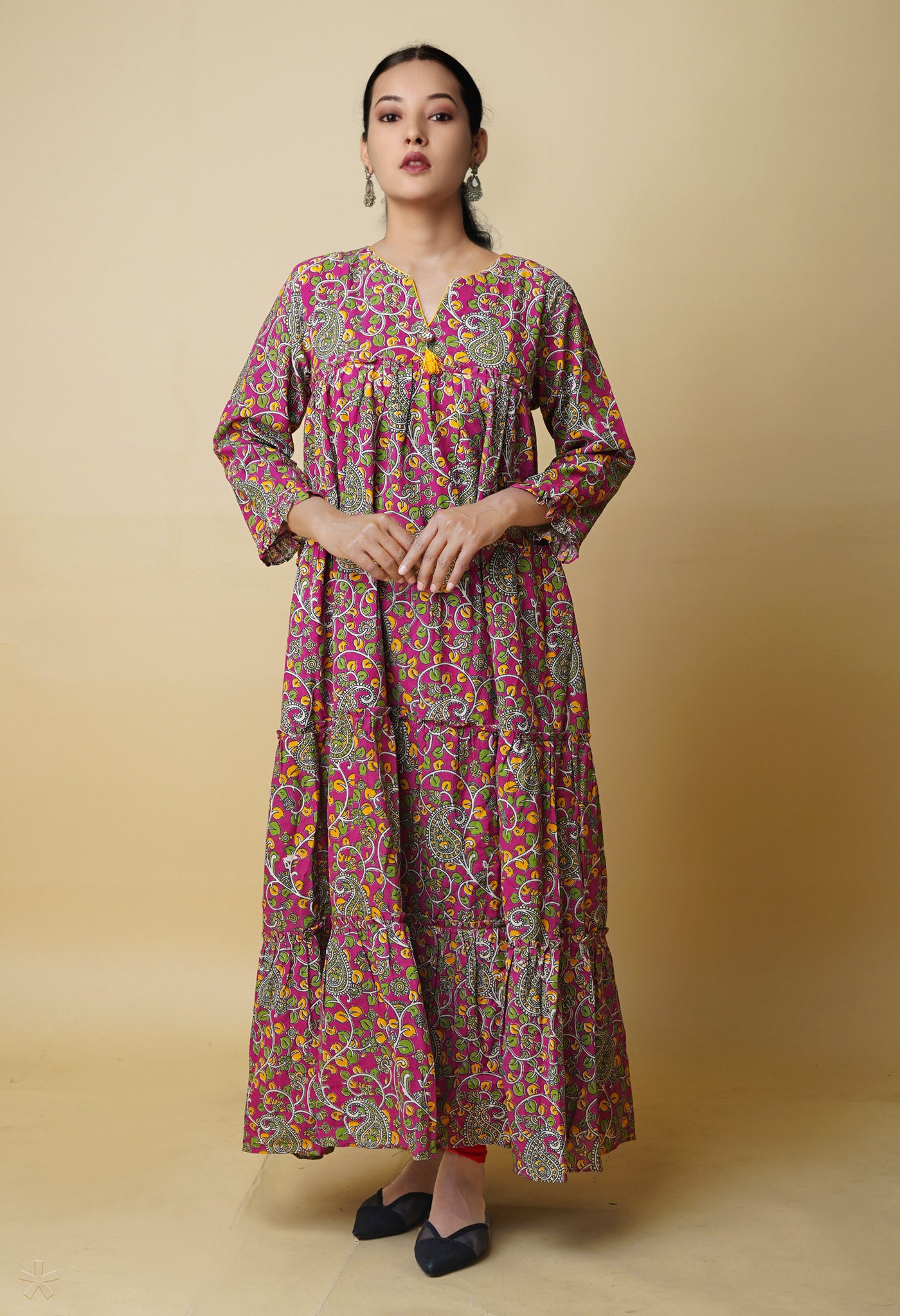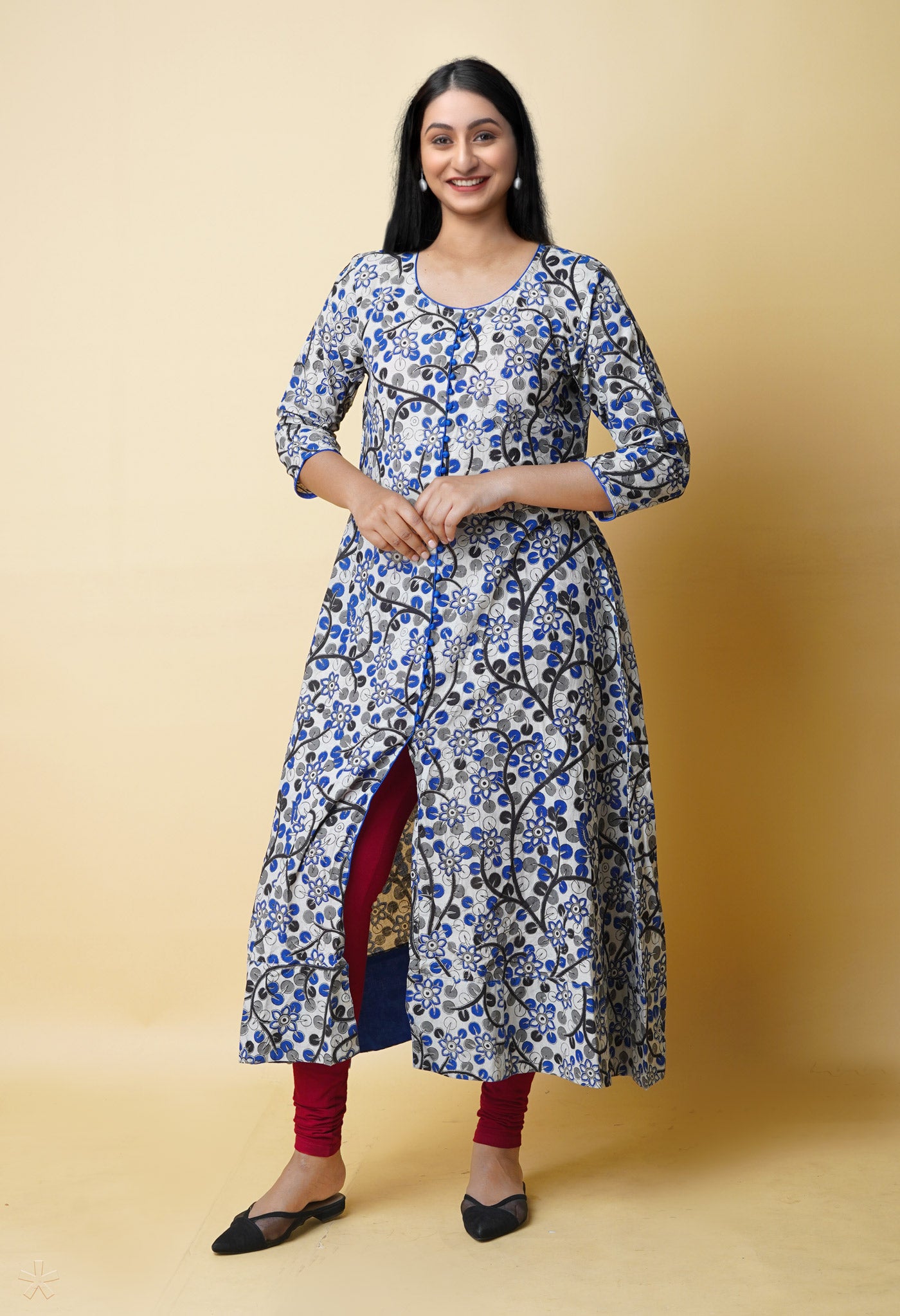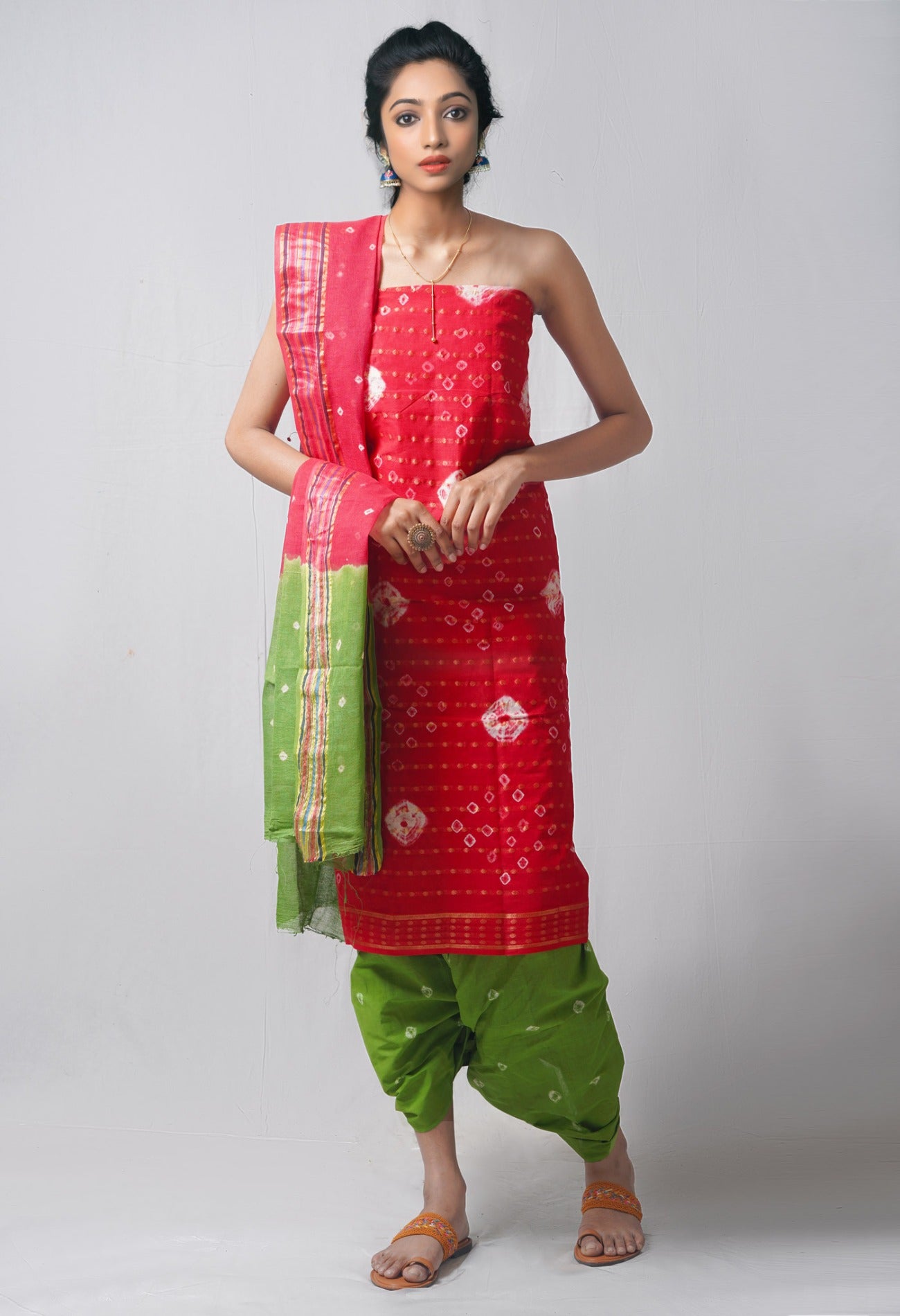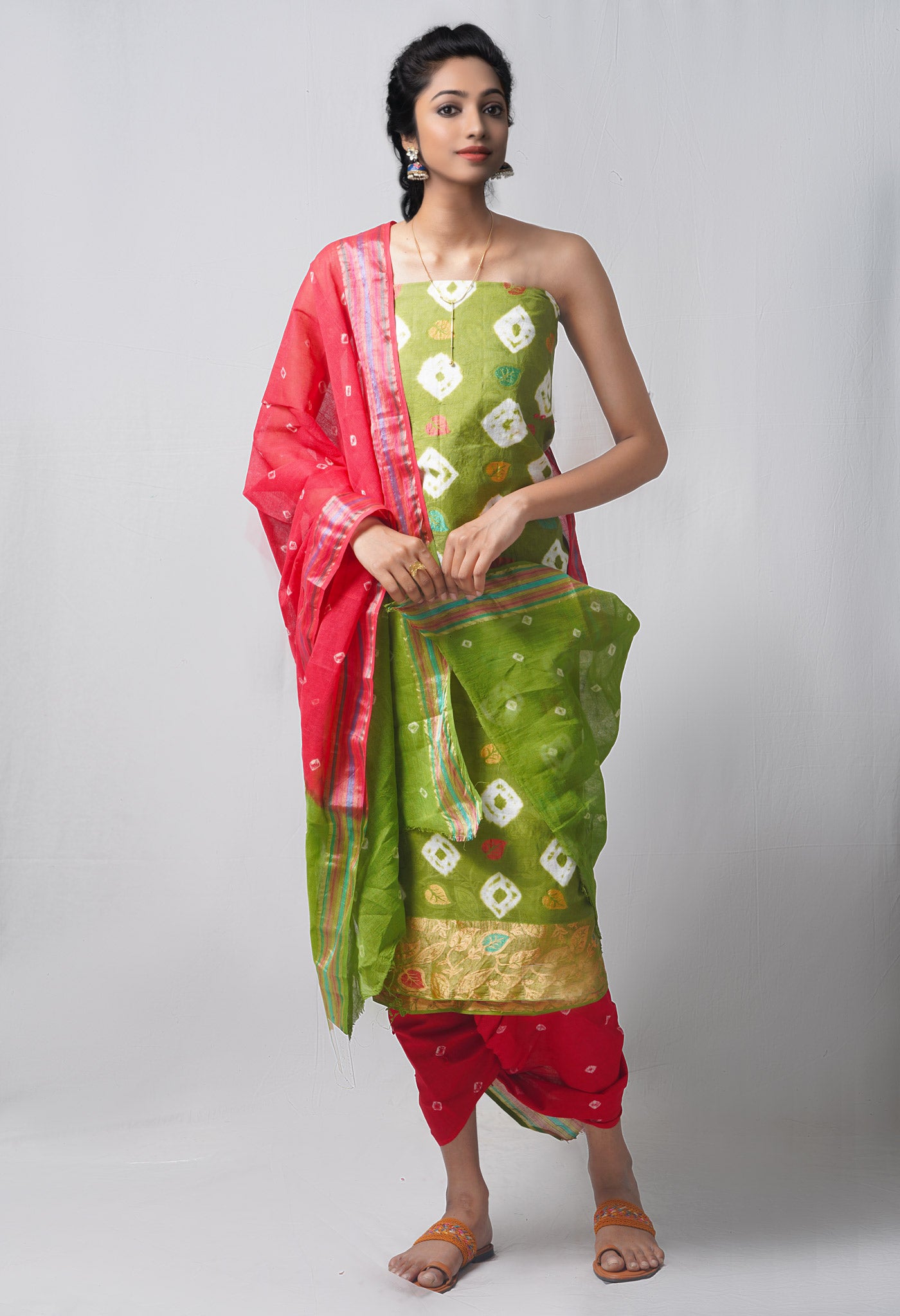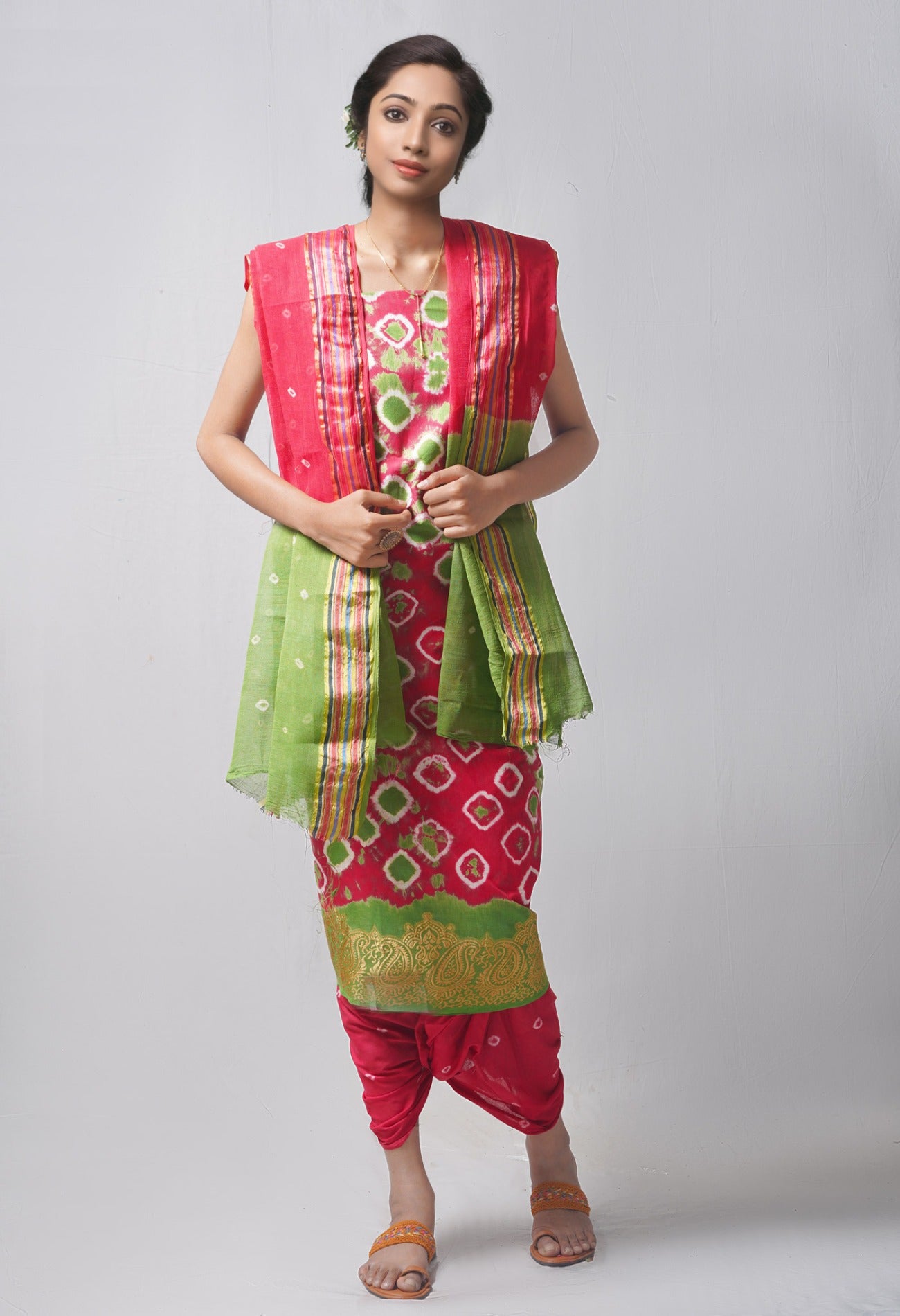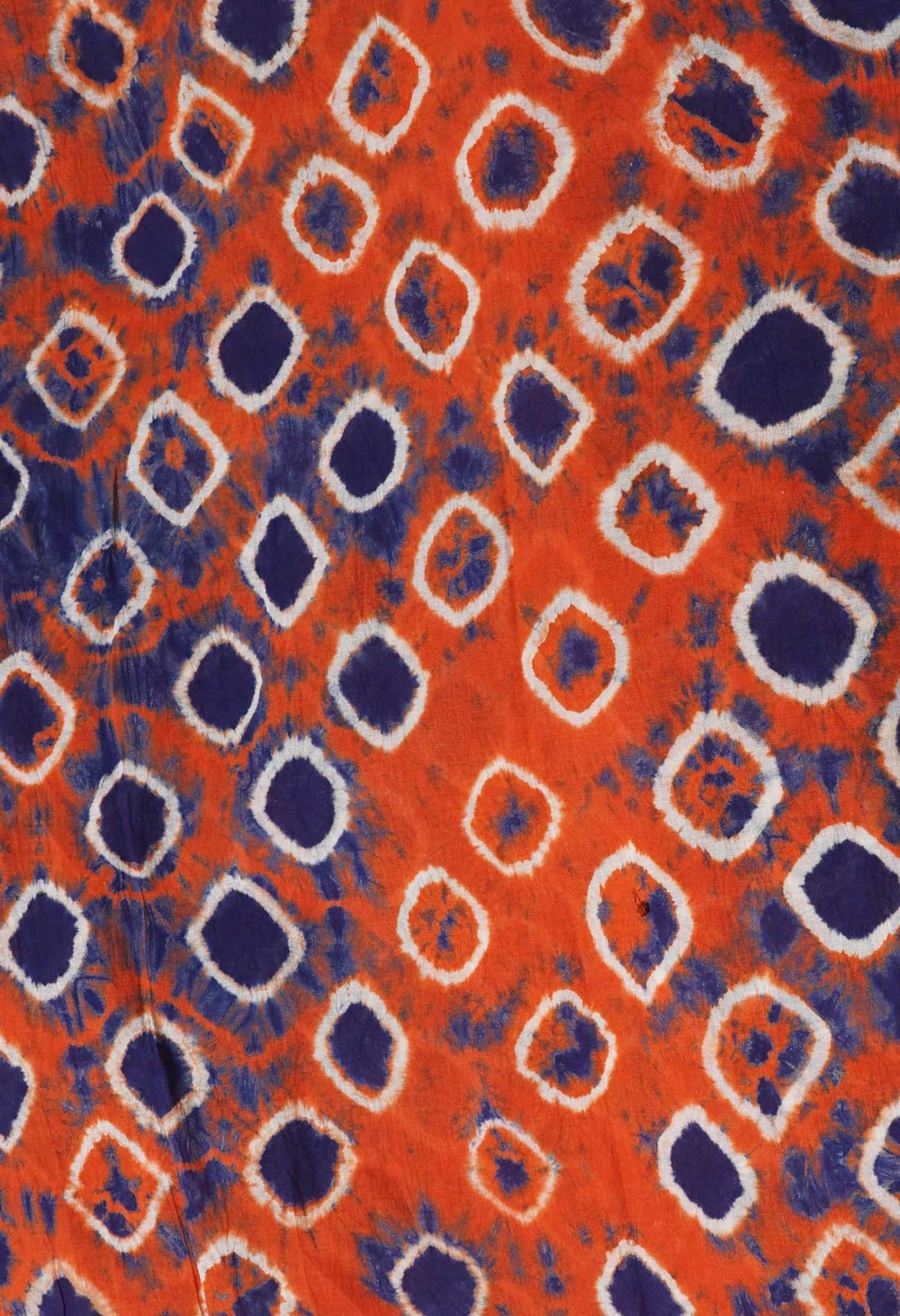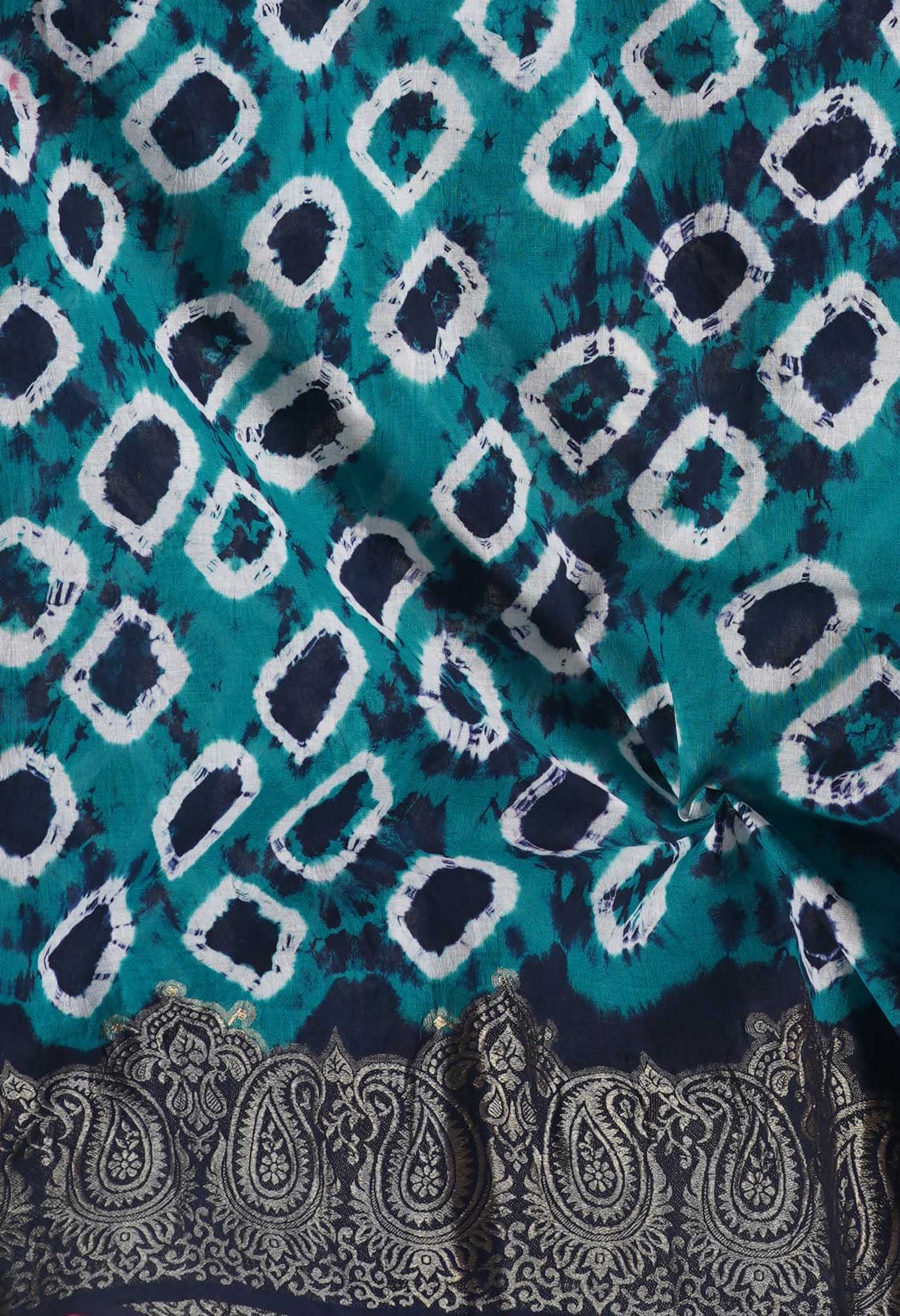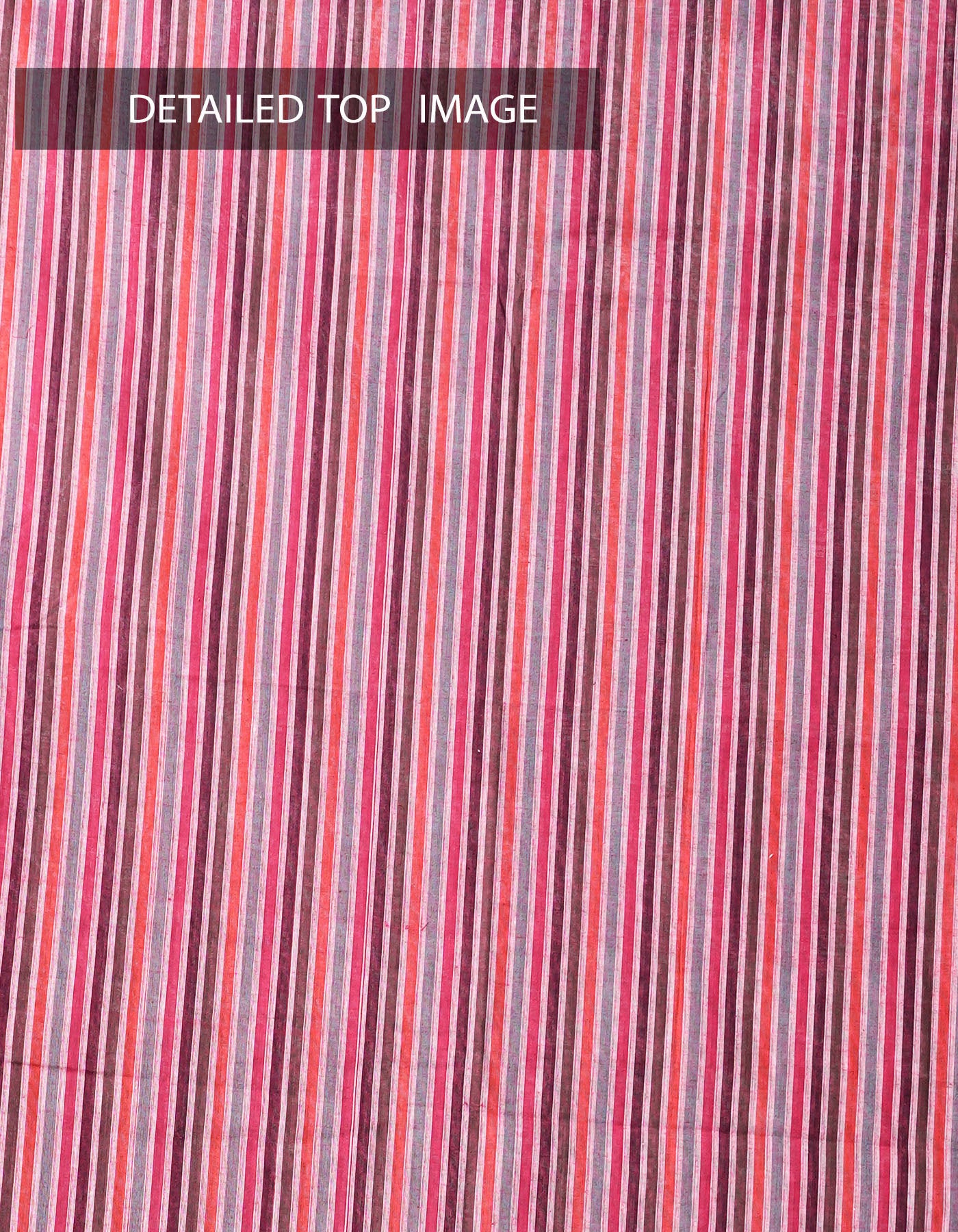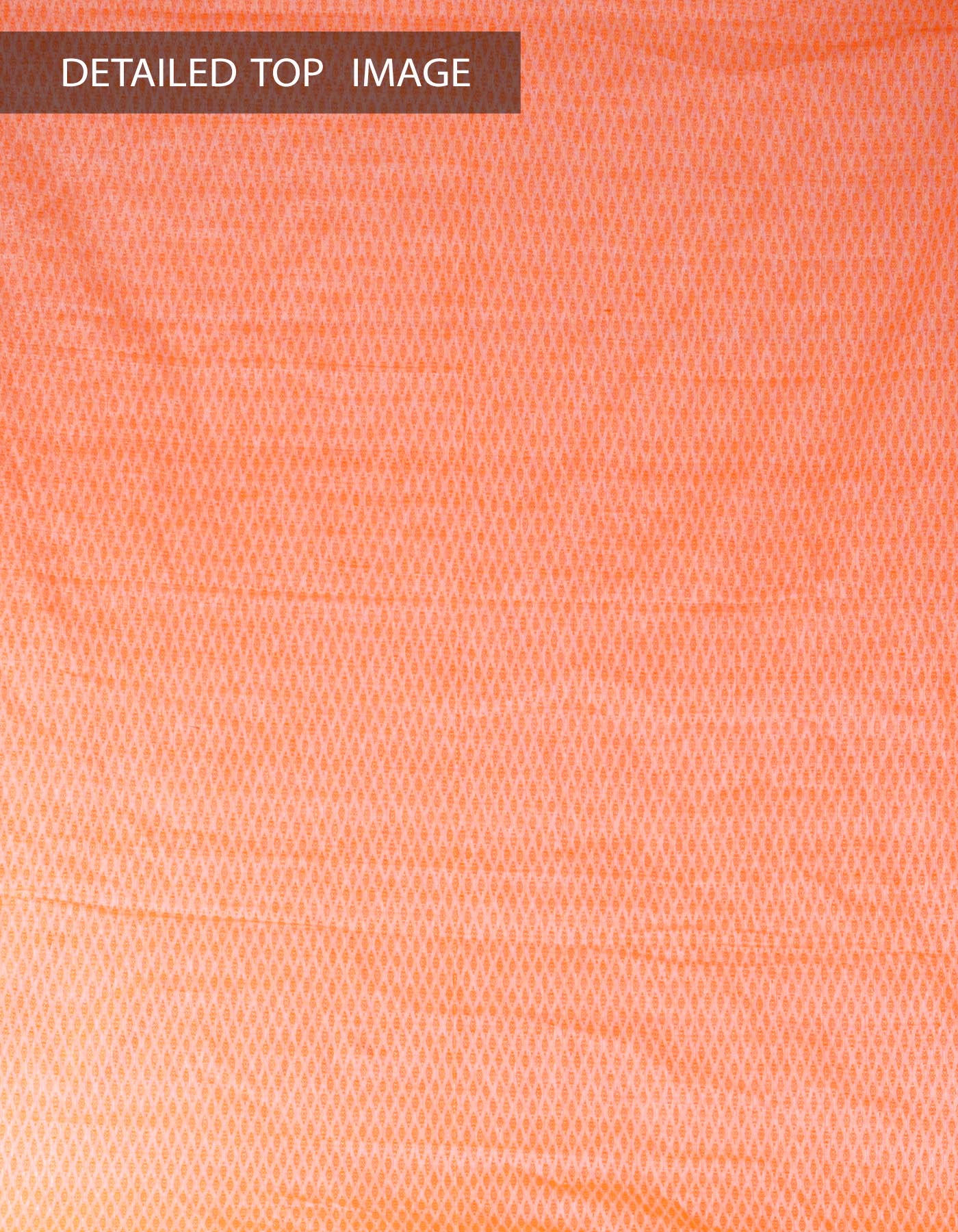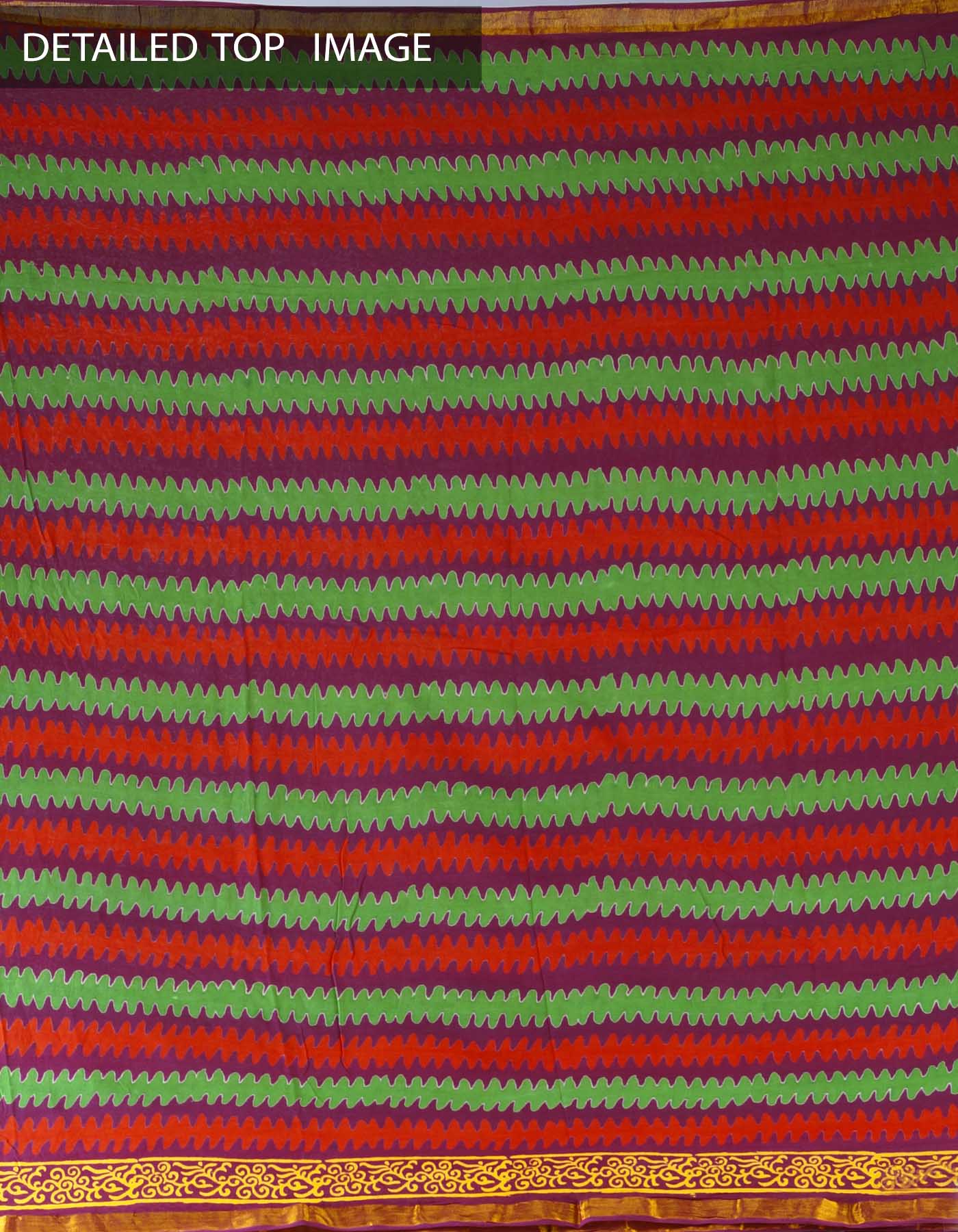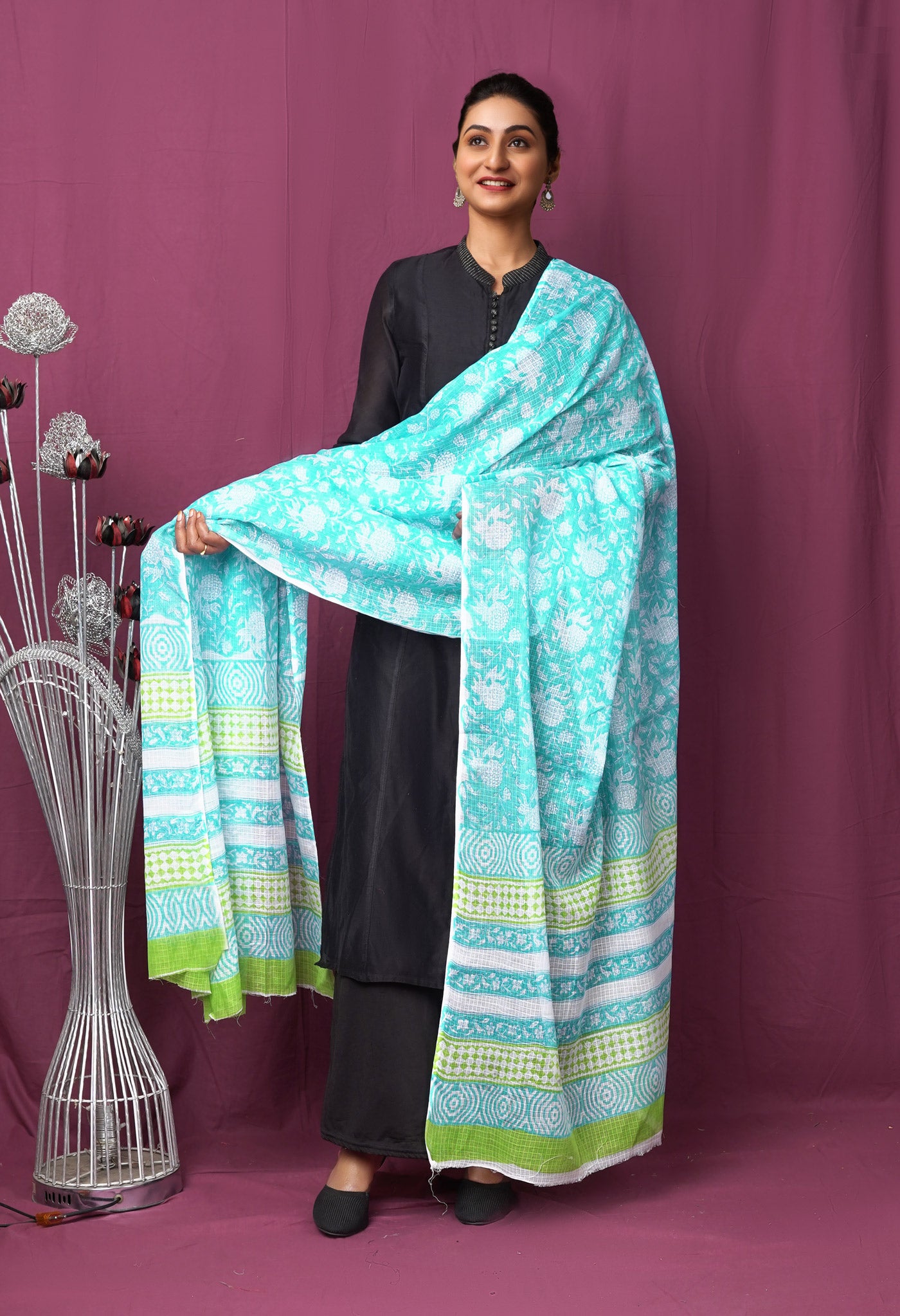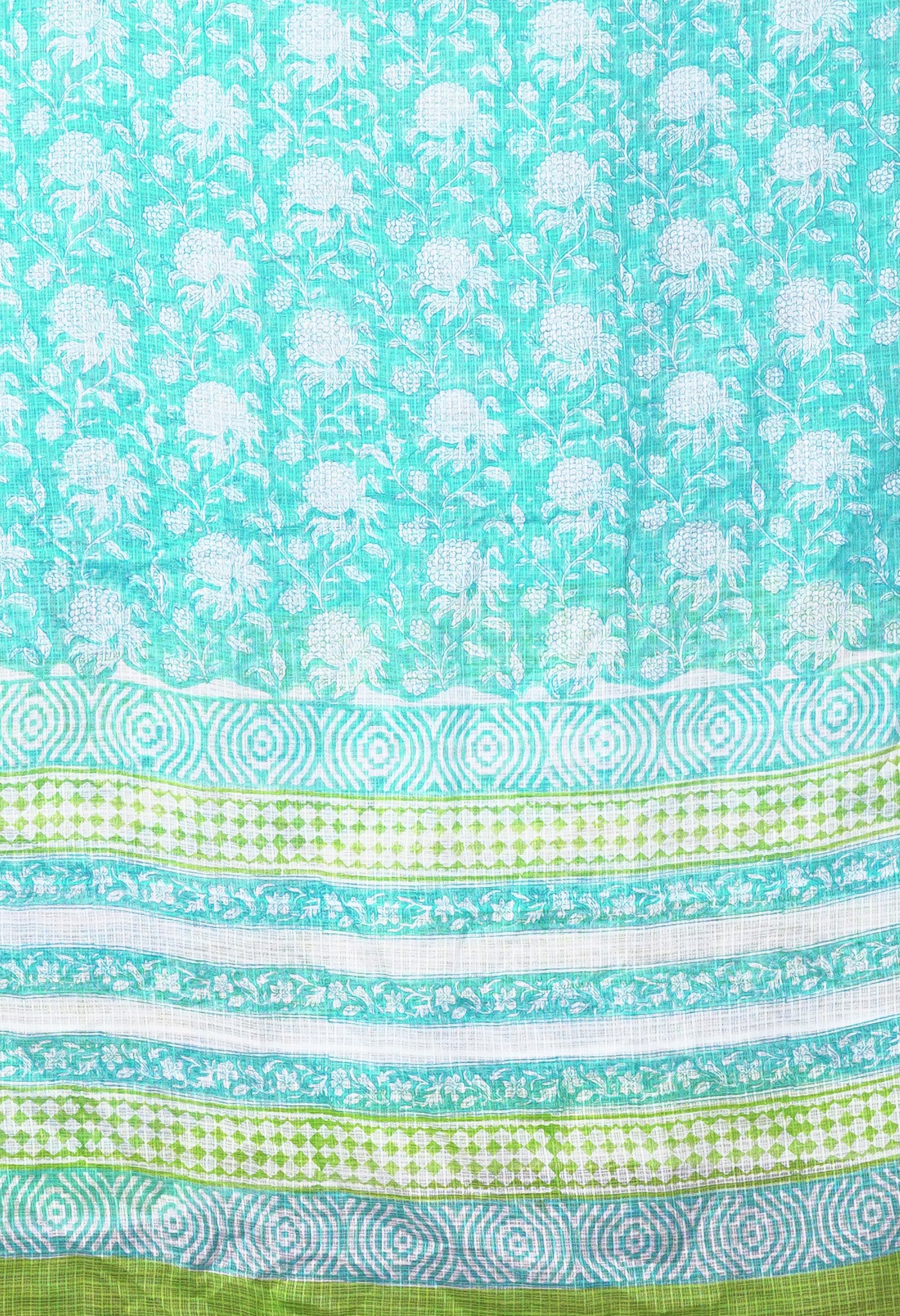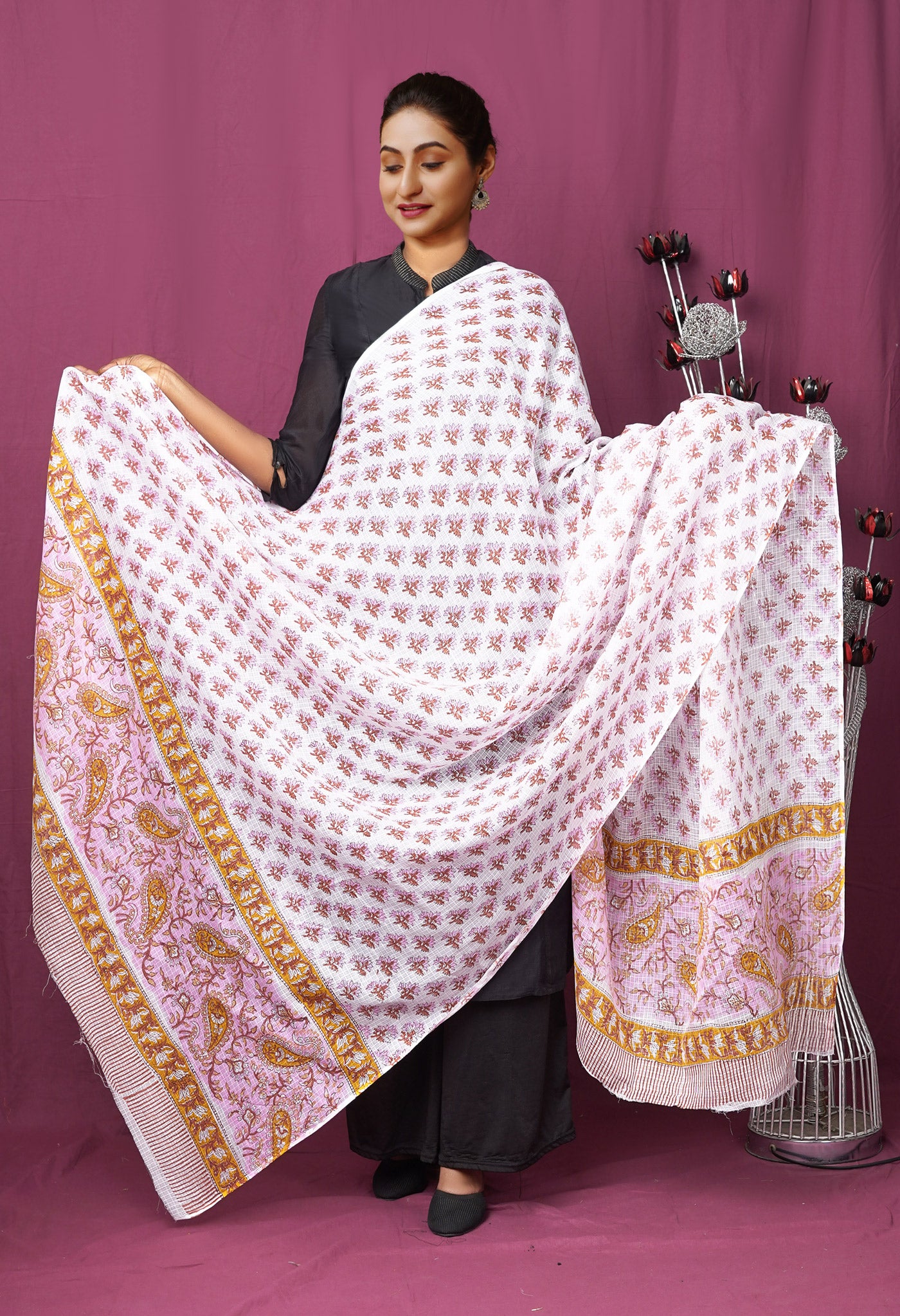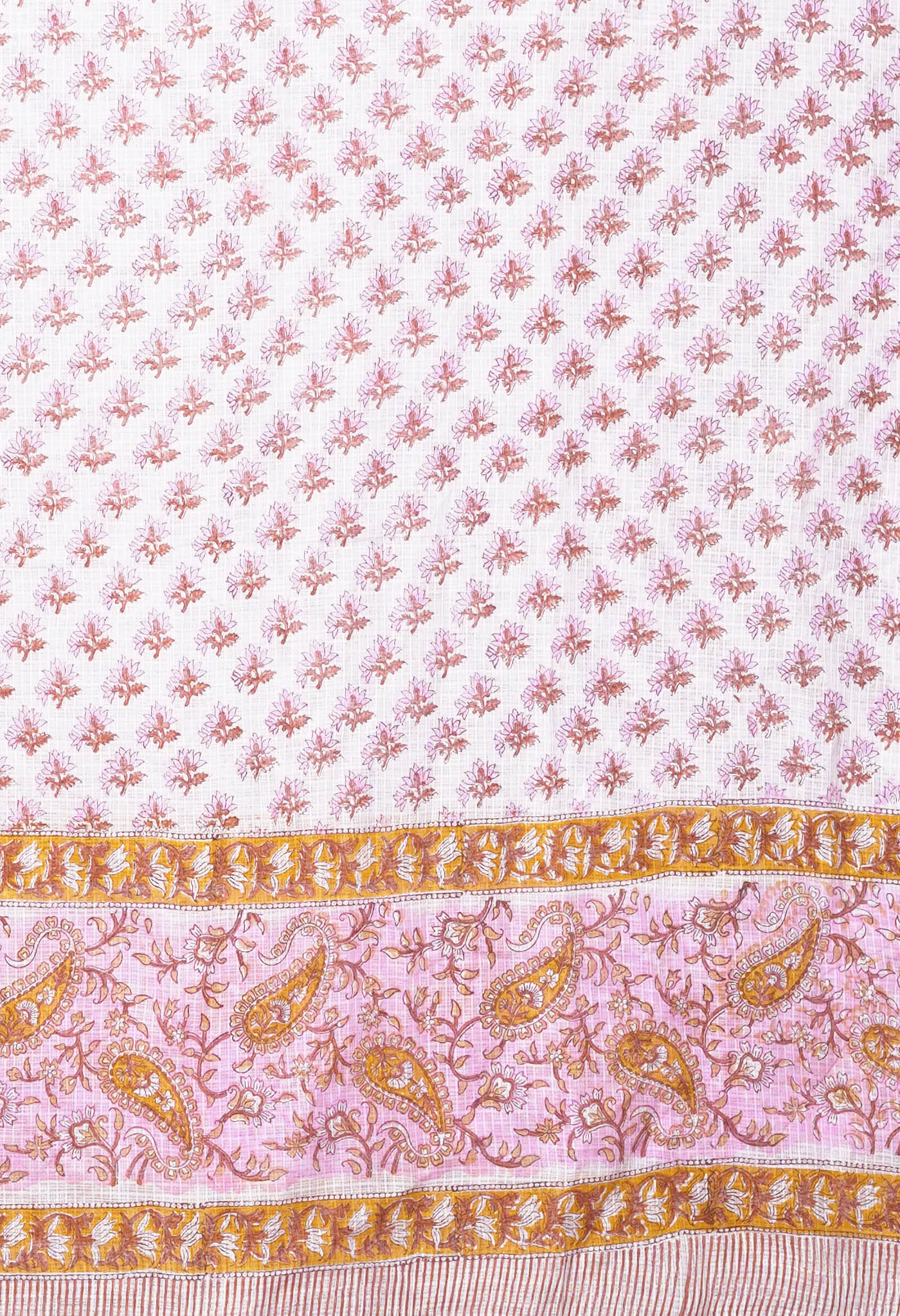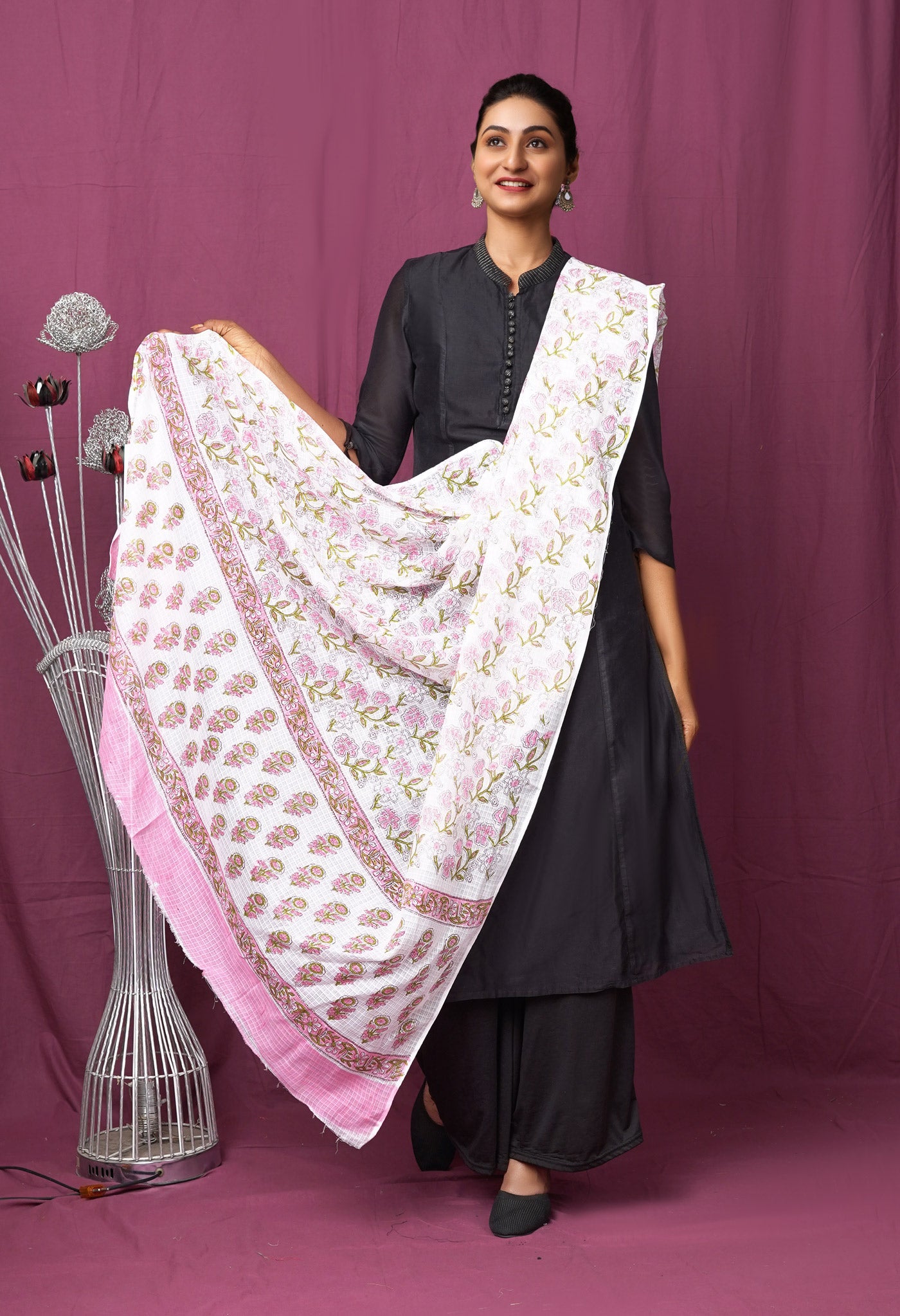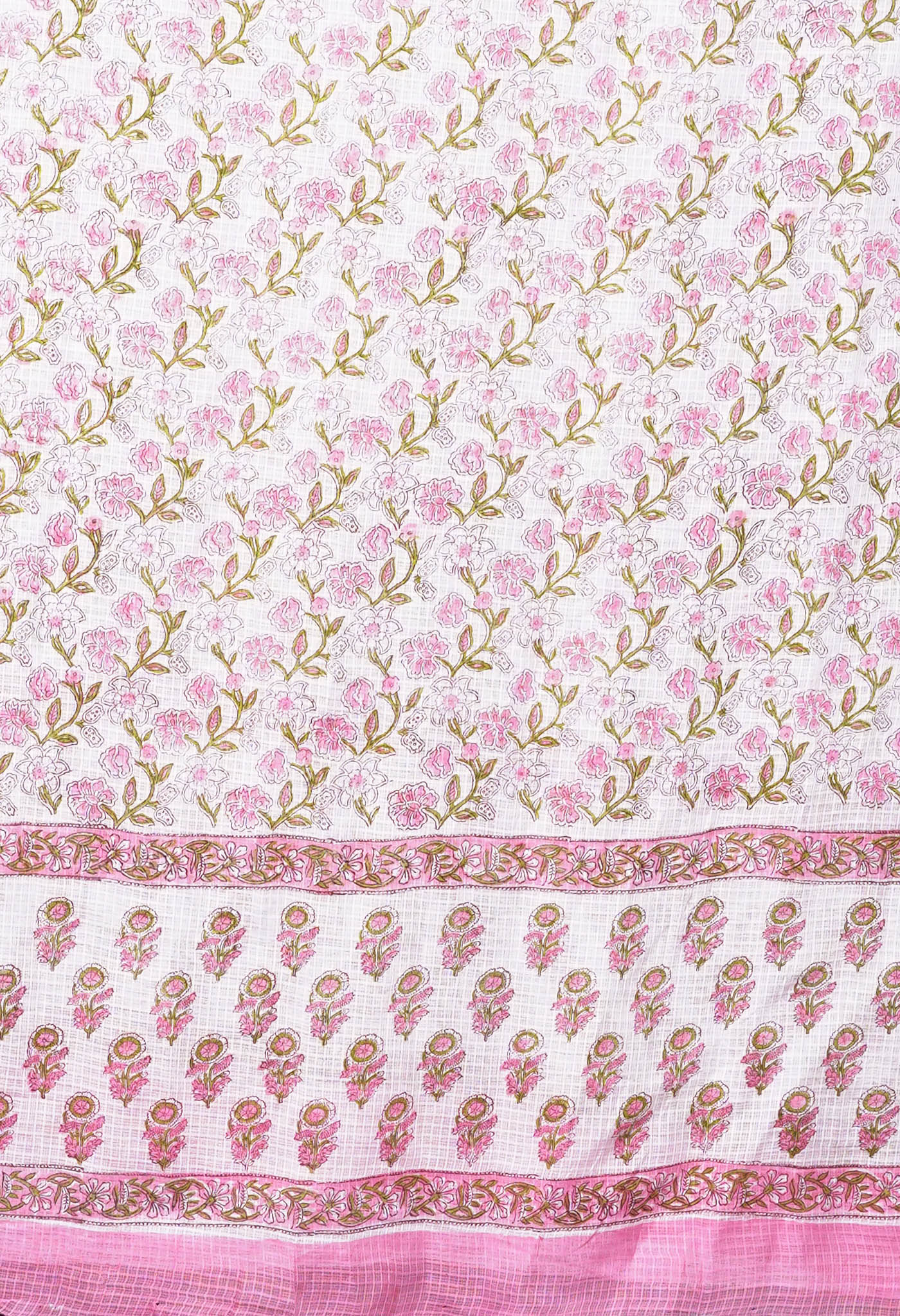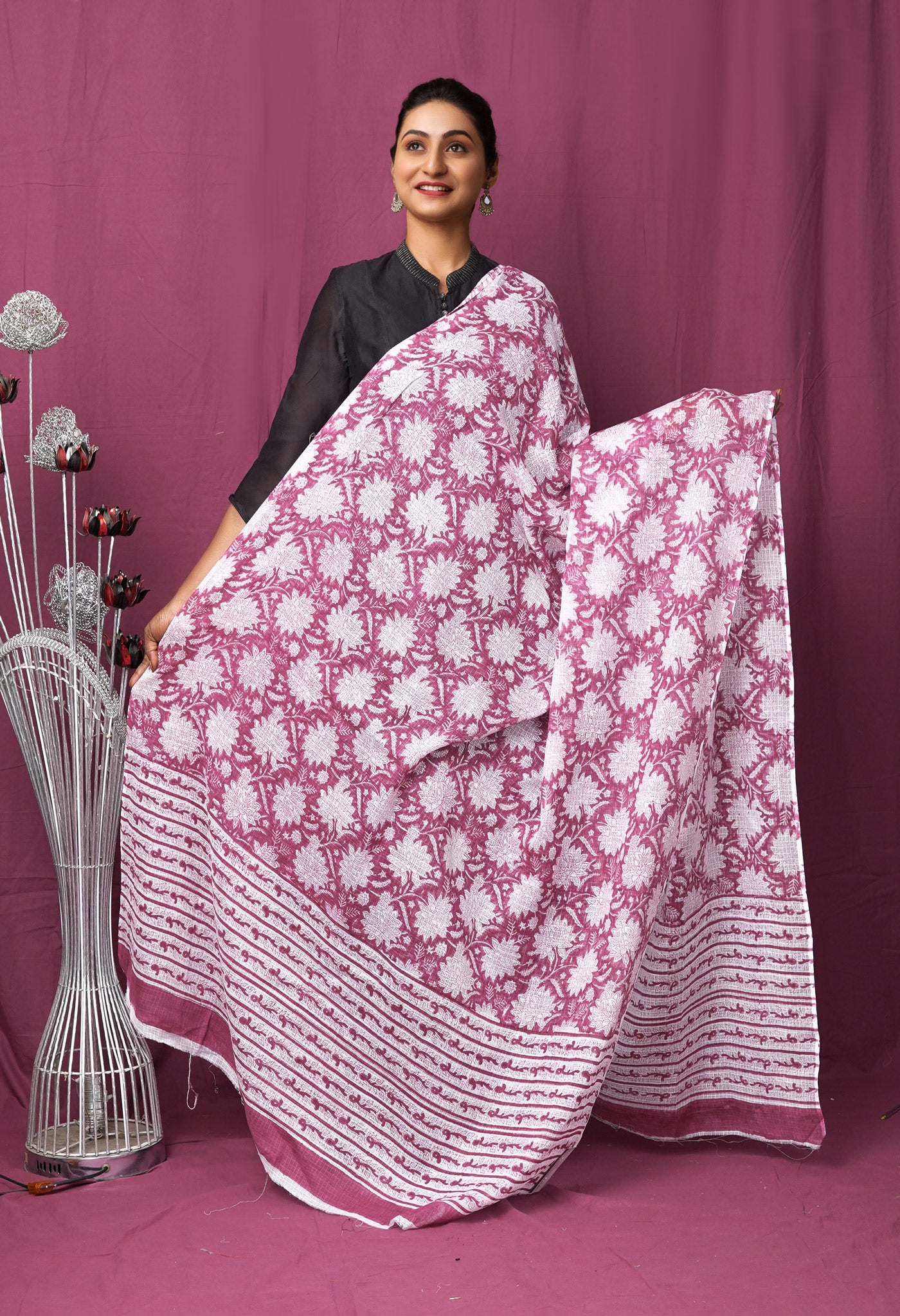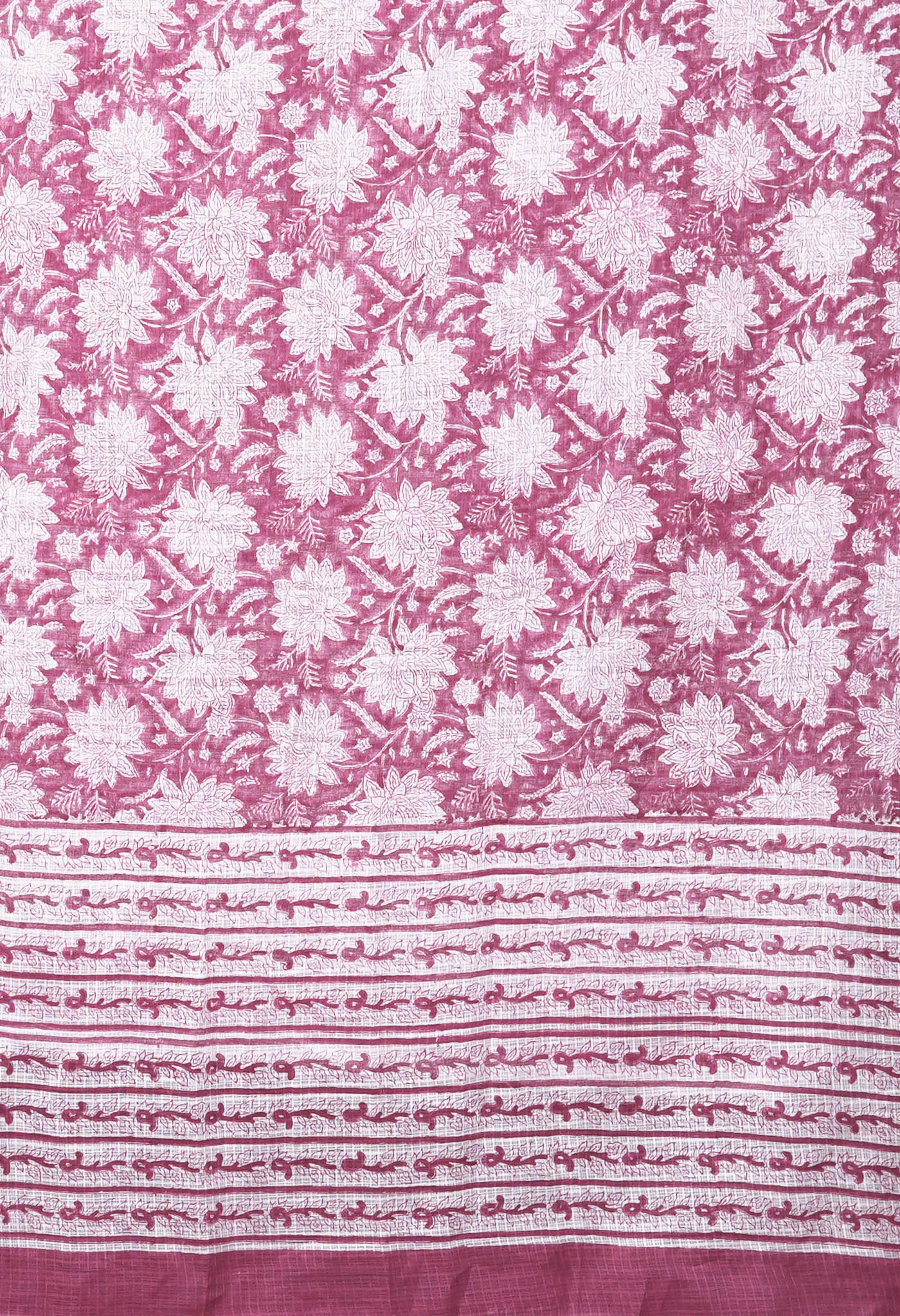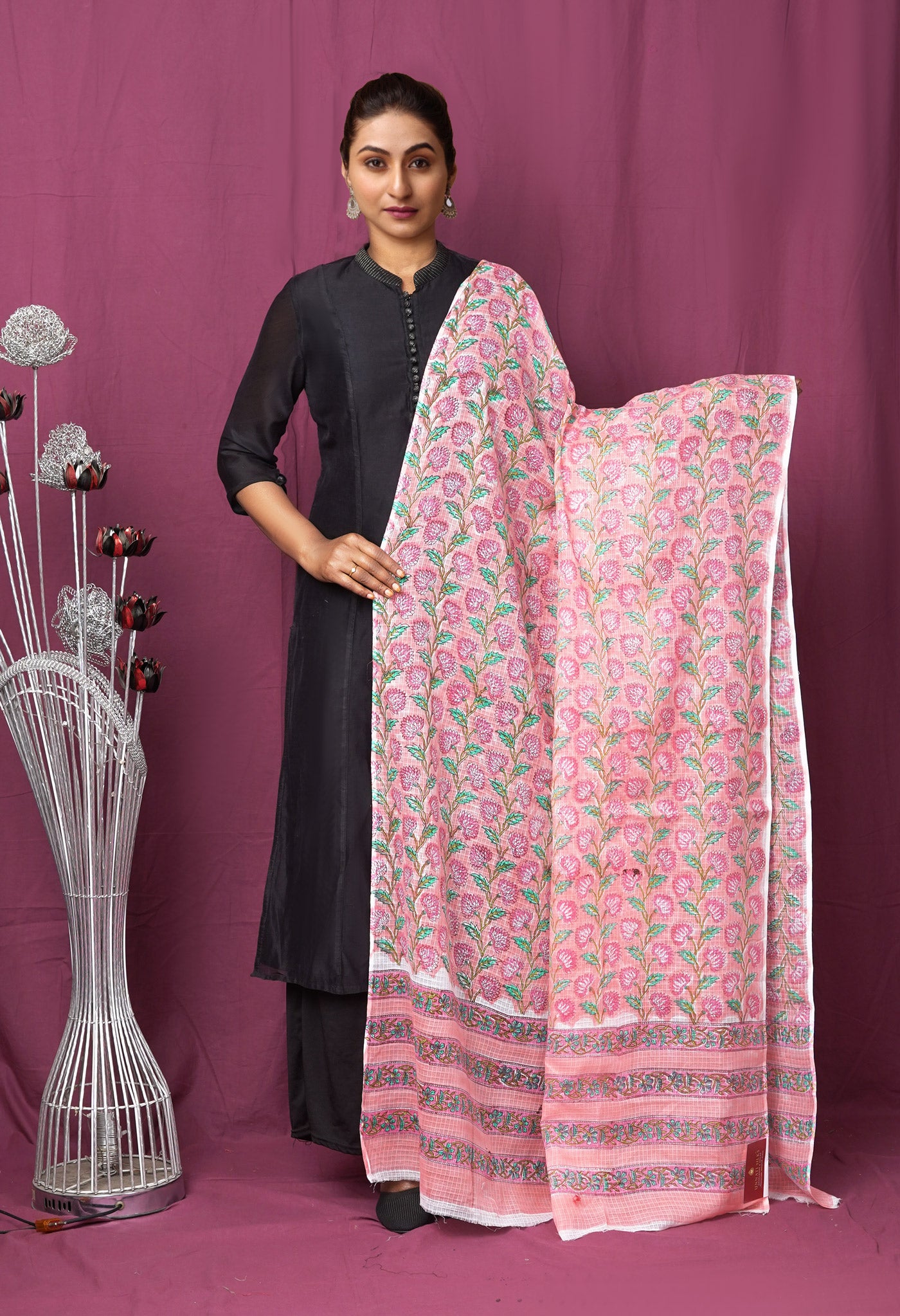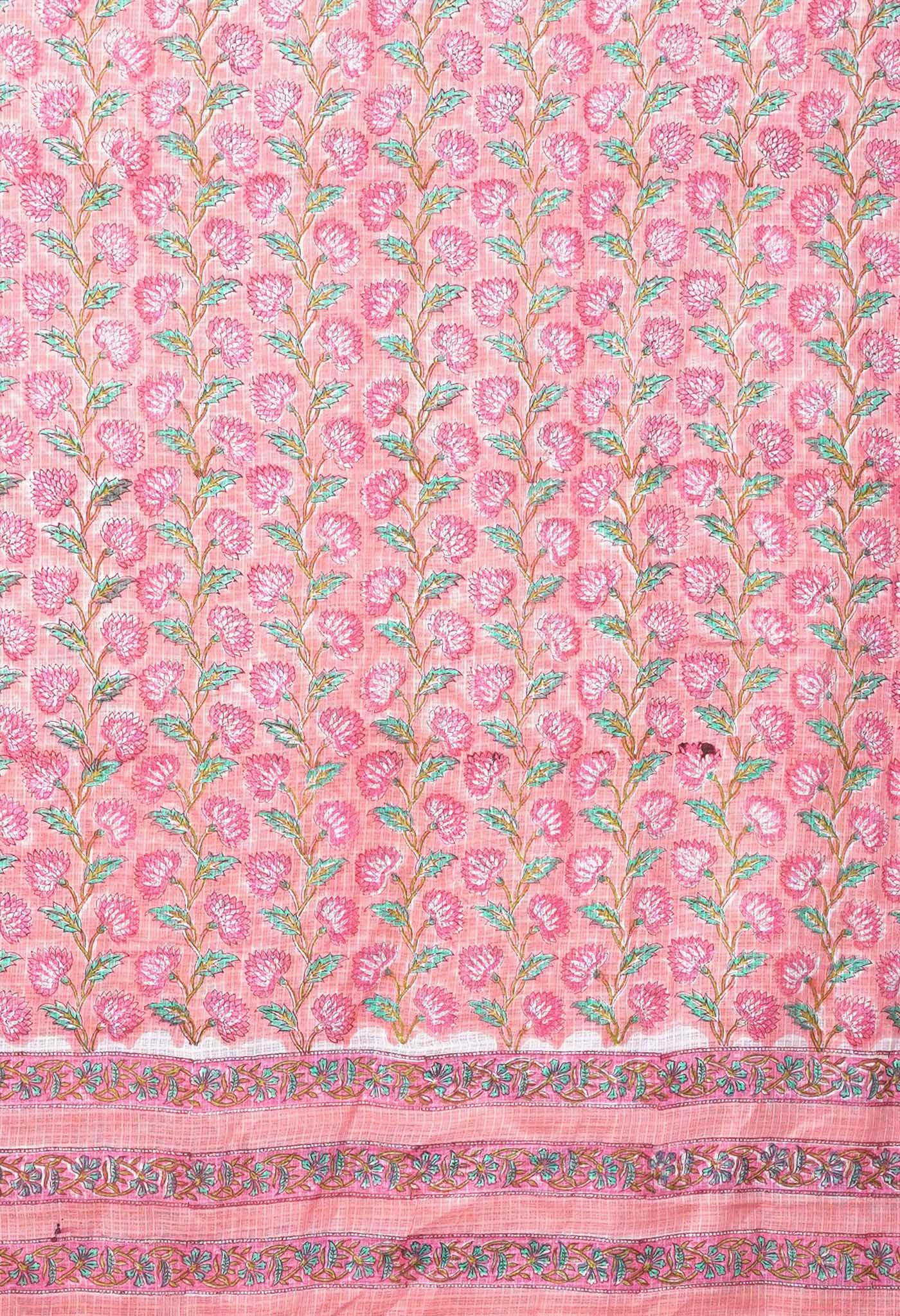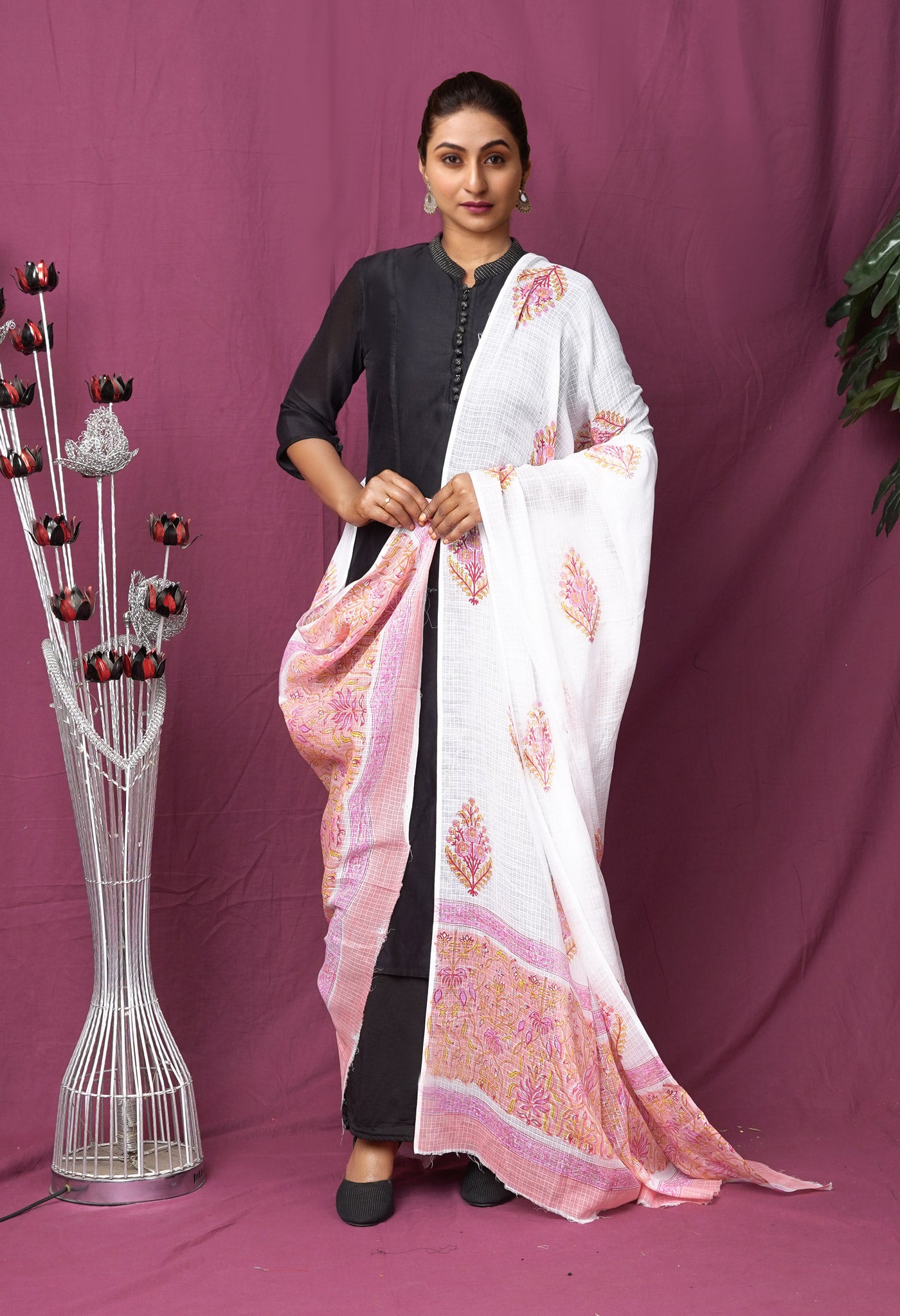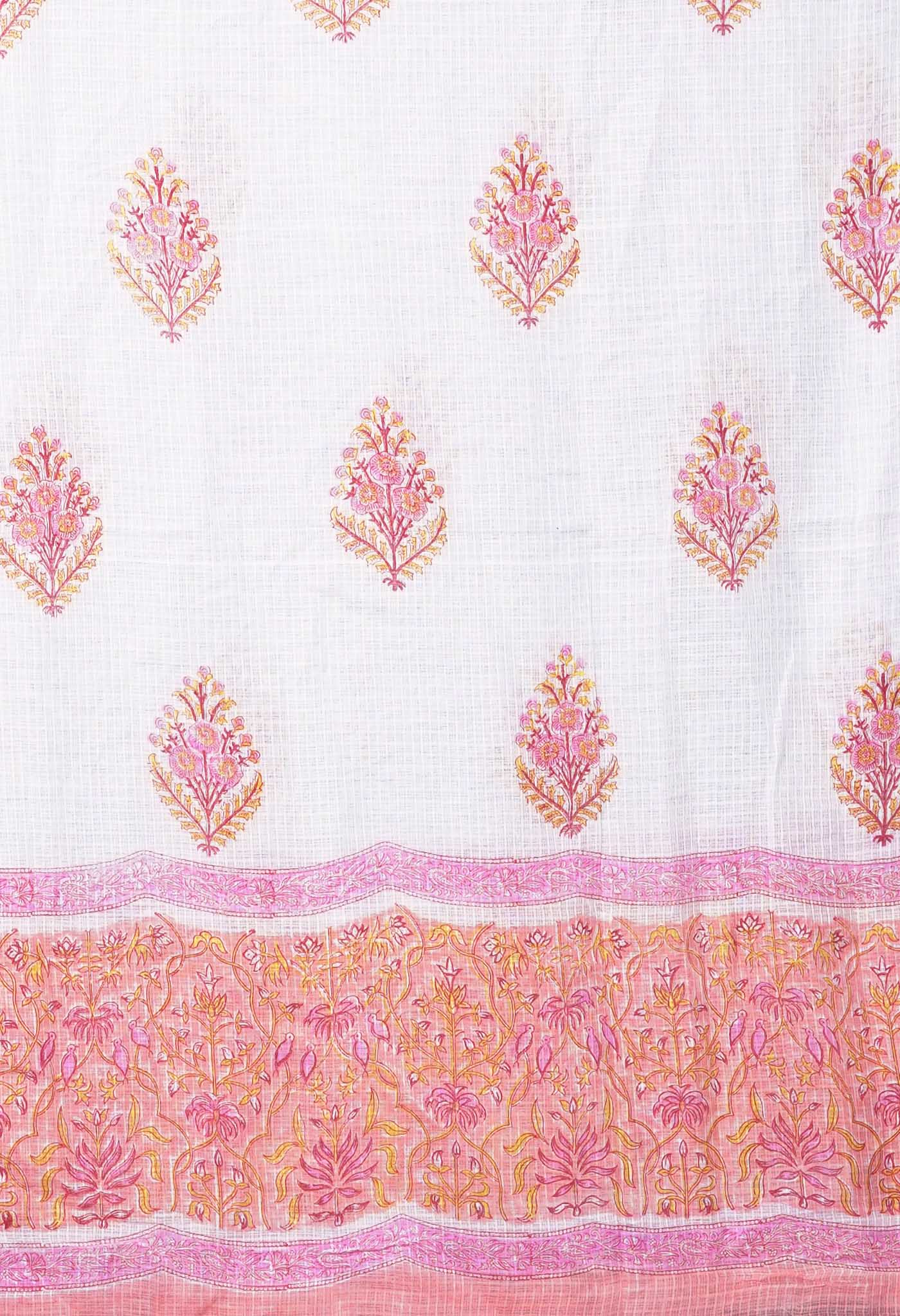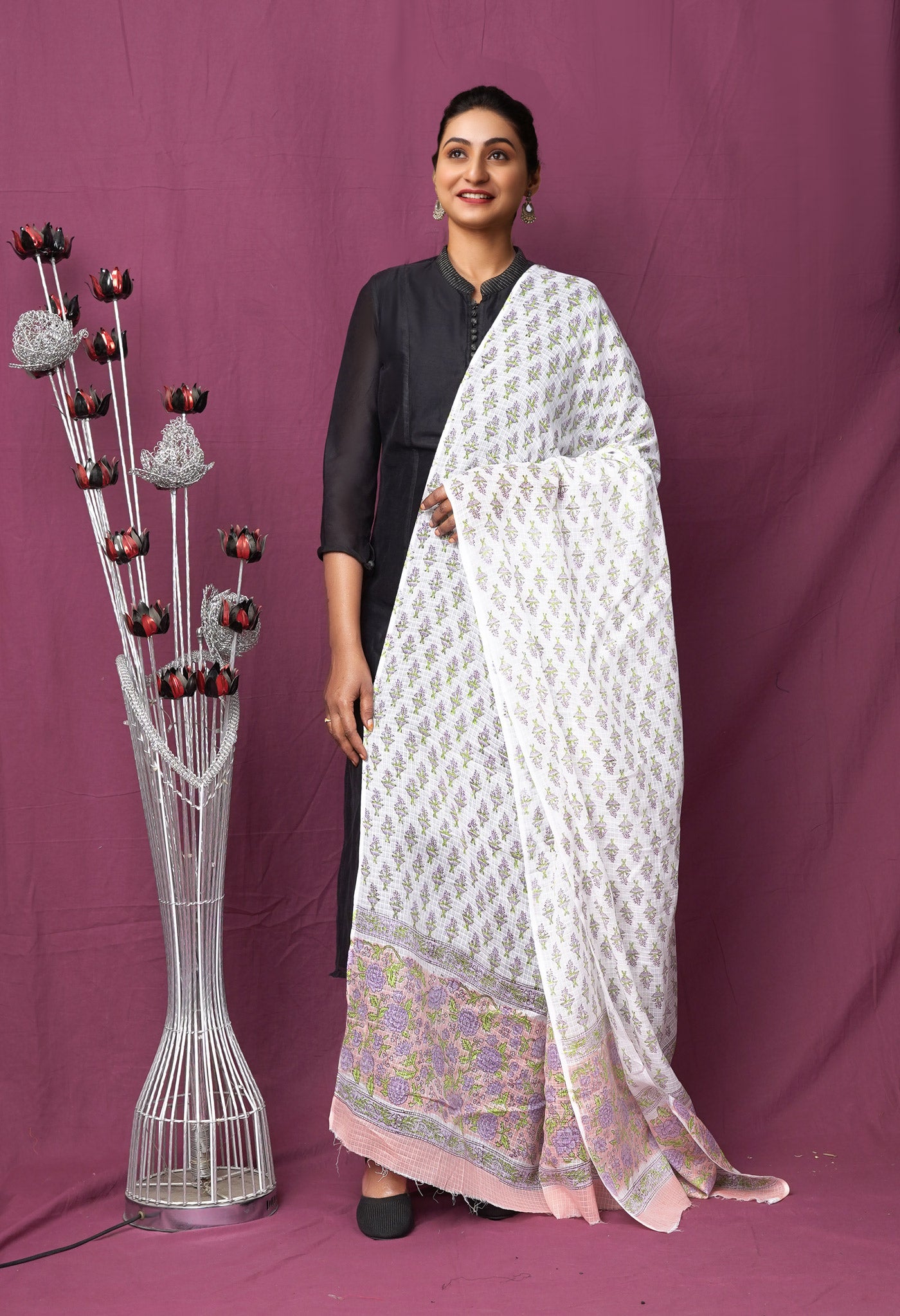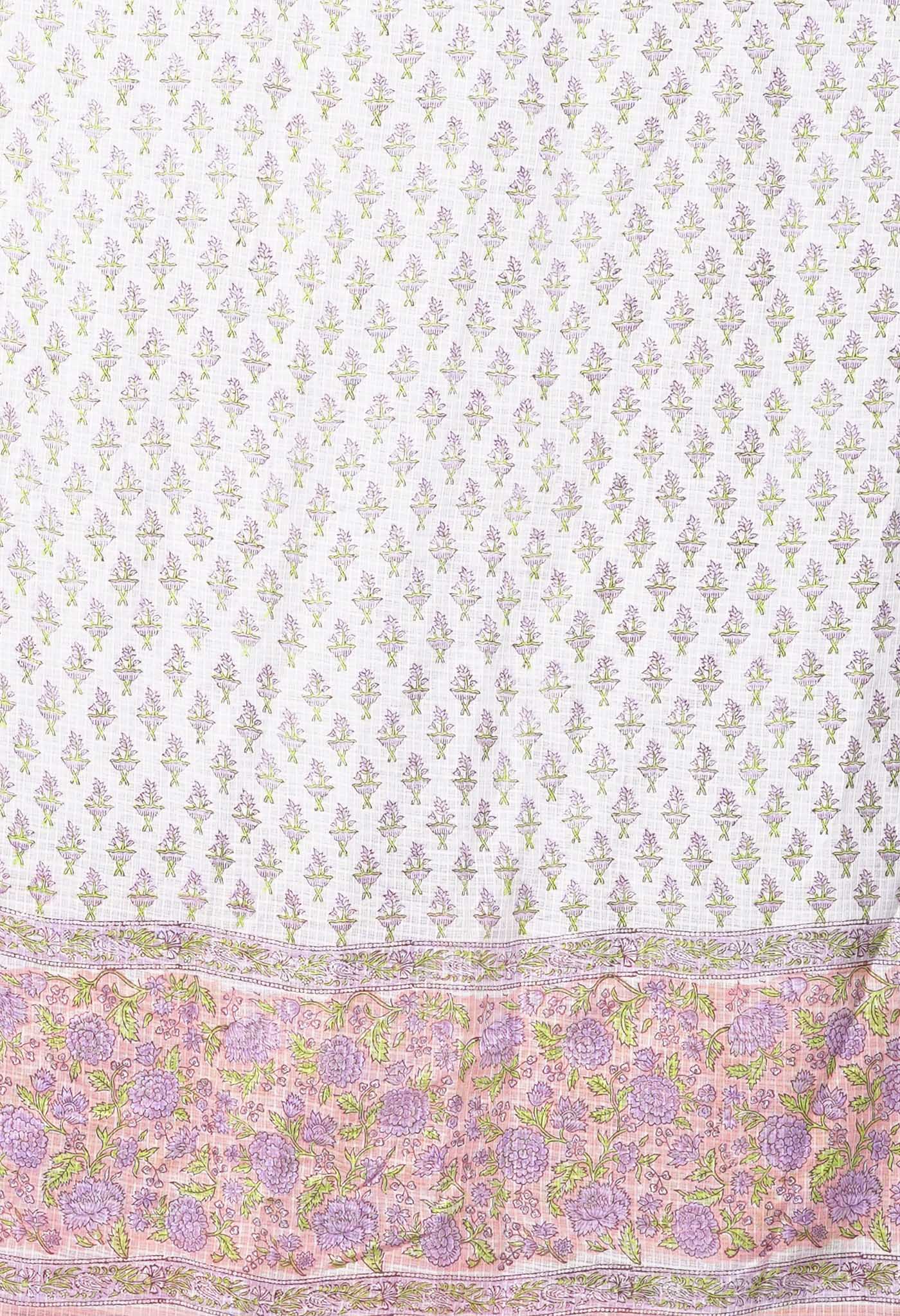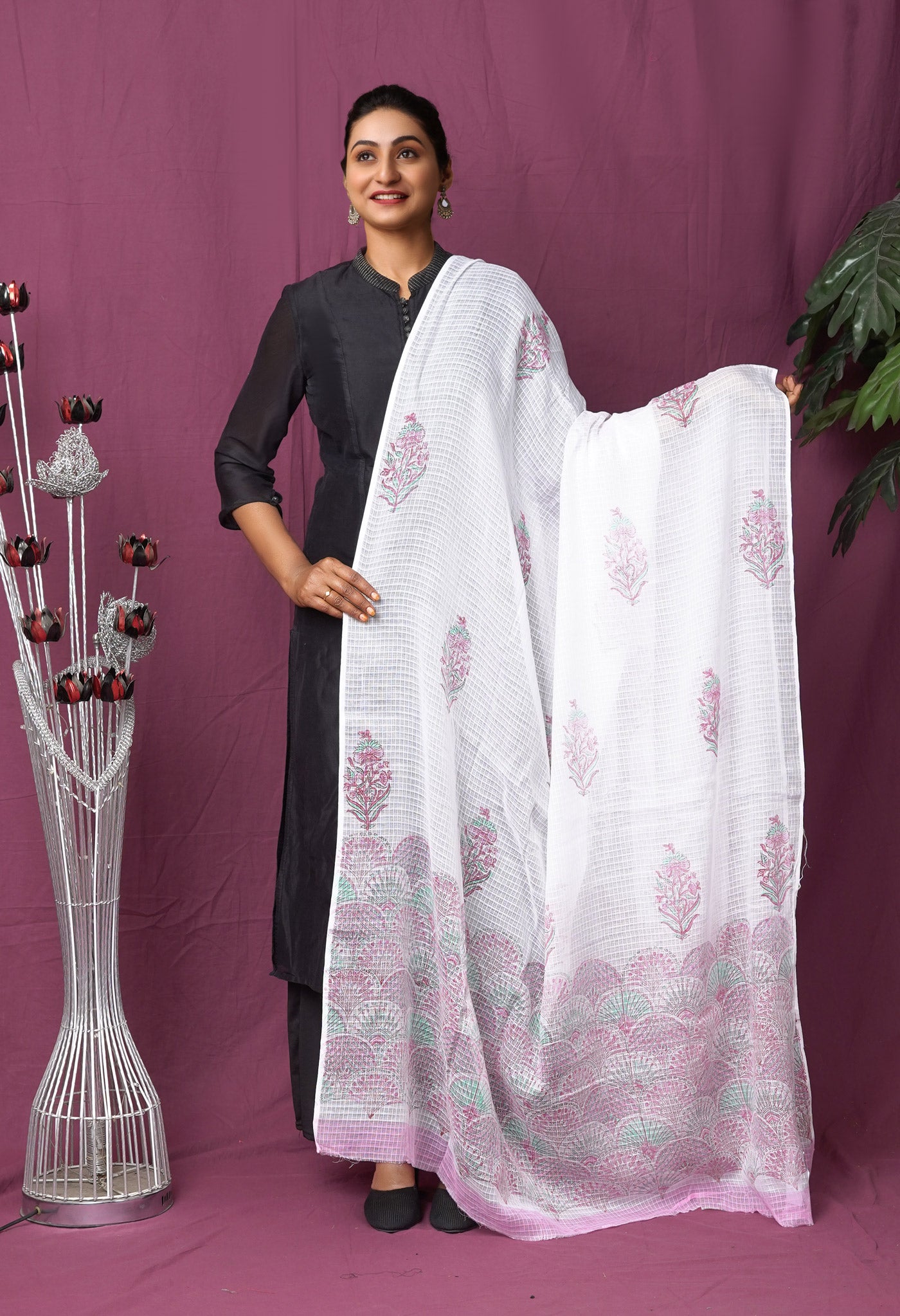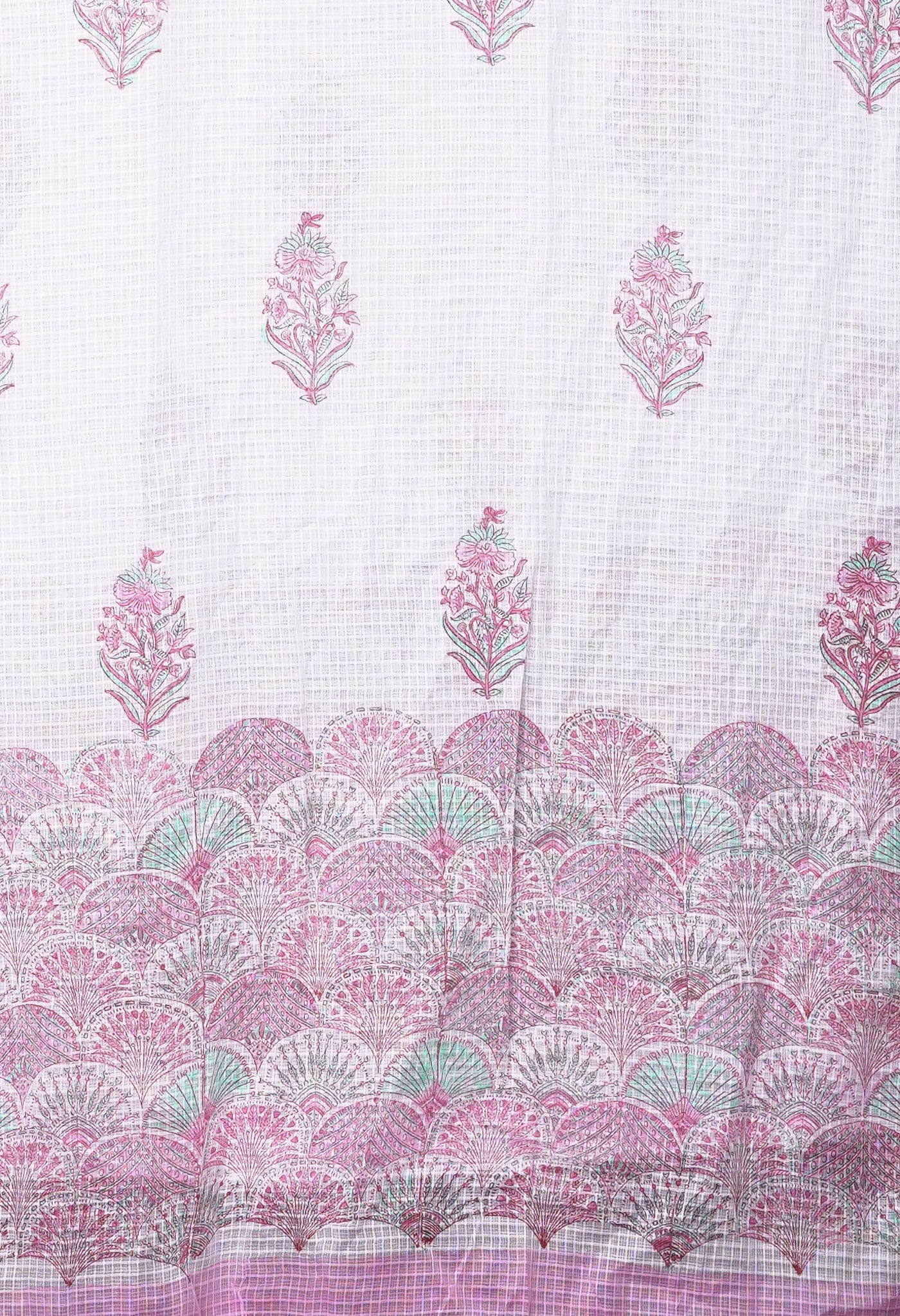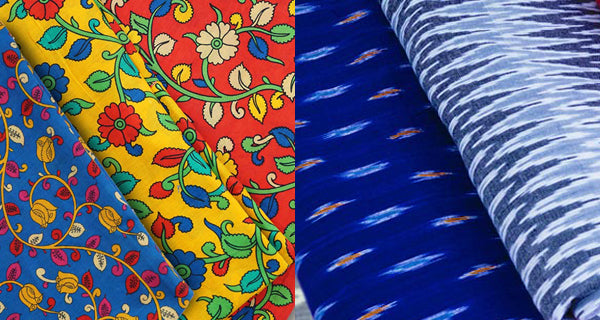
Types of Woven Fabrics – universally used fabric names
Woven fabric is any textile formed by weaving. Woven fabrics are often created on a loom, and made of many threads woven on a warp and a weft. Technically, a woven fabric is any fabric made by interlacing two or more threads at right angles to one another. Woven fabrics are generally more durable.
The woven fabric only stretches diagonally on the bias directions (between the warp and weft directions), unless the threads used are elastic. The woven cloth usually frays at the edges, unless techniques are used to counter it, such as the use of pinking shears or hemming.

Fabrics that are woven do not stretch as easily as knitted fabrics, which can make them advantageous for many uses.
Much variety is produced by weaving. They can be easily cut into different shapes and are excellent for producing styles in garments. Fabrics having more fabric count (number of wrap and weft yearns present) keep the shape well. Low count fabrics are less durable and may snag or stretch.
Woven fabrics are manufactured in different widths depending on the end use.
Types of Woven Fabrics – universally used fabric names
1. Buckram Fabric
A stiff coated fabric made from a lightweight loosely woven fabric, impregnated with adhesives and fillers, this fabric is used as interfacing so as to provide support and shape retention to necklines, collars, belts, cuffs, waistbands, button closures etc in garments. They are also used as reinforcements for handbags and other articles.
Buckram is a stiff cotton (occasionally linen or horse hair) cloth with a loose weave, often muslin. The fabric is soaked in wheat starch paste, glue (such as PVA glue), or pyroxylin (gelatinized nitrocellulose, developed around 1910), as sizing and then dried. When rewetted or warmed, it can be shaped to create durable firm fabric for book covers, hats, and elements of clothing. In bookbinding, pyroxylin impregnated fabrics are considered superior to starch-filled fabrics because their surfaces are more water resistant, they are more resistant to insects and fungi, and are generally stronger. They wear well and are particularly suitable for use in library binding where many people will be repeatedly handling the same books. Pyroxylin also allows for unique decorative effects on book covers. They, too, are water repellant and immune to insect attack and fungi, but they do not wear as well as starch impregnated cloths because of cracking at the joints and occasional peeling of the coating.
 2. Cambric Fabric
2. Cambric Fabric
Cambric a lightweight fabric woven in plain weave and produced with a stiff finish. It is suitable for women’s dresses and children’s dresses that require crispness.
Cambric or batiste, one of the finest and most dense kinds of cloth, is a lightweight plain-weave cloth, originally from the French commune of Cambrai, woven in greige, then bleached, piece-dyed and often glazed or calendered. Initially it was made of linen; later, the term came to be applied to cotton fabrics as well. Cambric is used as fabric for linens, shirts, hand kerchieves, ruffs, lace and needlework. The term "cambric cloth" also applies to a stiff, usually black, open-weave cloth typically used for a dust cover on the bottom of upholstered furniture.
Chambray, though the same type of fabric, had a coloured warp and a white weft, though it could be "made from any colour as you may wish, in the warp, and also in the filling; only have them differ from each other. "Chambray differs from denim in that "chambray’s warp and weft threads will alternate one over the other, while denim’s warp thread will go over two threads in the weft before going under one." As a result, the color of chambray cloth is similar front and back, while the reverse side of denim is lighter in color.
3. Casement Fabric
Casement is a medium weight cotton fabric made of closely packed thick warp yarns. Generally, it is used for curtains, table linen, upholstery and rarely used for dresses.

4. Cheese Cloth
It is a popular lightweight sheer fabric having an open weave. It has a low count fabric consisting of carded yarns. Originally it was used for wrapping cheese or meat and hence the name. It is neither strong nor durable. It is finished in a variety of ways that attract the consumer. It is used not only for women’s and children’s dresses but also for drapery fabrics. Due to its open structure, it does not require much ironing.

5. Chiffon Fabric
Chiffon fabrics are sheer, lightweight fabrics made of hard twisted yarns. Originally these are made in silk fabrics but today they are made from rayon or polyester. They are used for sarees and women’s evening wear. The fabrics encounter the problem of shrinkage.
 [/vc_column_text][vc_btn title="Buy Online Beautiful Chiffon Sarees " color="warning" align="center" link="url:https%3A%2F%2Fwww.unnatisilks.com%2Fsarees-online%2Fby-popular-variety-name-sarees%2Fchiffon.html||target:%20_blank"][vc_column_text]
[/vc_column_text][vc_btn title="Buy Online Beautiful Chiffon Sarees " color="warning" align="center" link="url:https%3A%2F%2Fwww.unnatisilks.com%2Fsarees-online%2Fby-popular-variety-name-sarees%2Fchiffon.html||target:%20_blank"][vc_column_text]6. Chintz Fabric
Chintz is a medium weight, plain woven cotton yarn. It is often given a glazed finish which may be temporary or semi-permanent glazed chintz are available in solid colour as well as printed with floral prints. These are often made from blends of cotton and polyester or rayon. They are used for skits, dresses, blouses, pyjamas, aprons, and draperies.

7. Corduroy Fabric
It is a cut pile fabric available in solid colours. The cut pile fibres are seen in the form of ribs on the surface. It is mainly used for pants, jeans, and shirts.
8. Crepe Fabric
A silk fabric is originally characterized by a crinkle, puckered surface formed by highly twisted yarns in the warp or weft or both. By using ordinary yarns similar crepe effects can also be produced. Synthetic fabrics also impart crepe effect finish. It is used for sarees, shirts, women and children’s dresses.
 [/vc_column_text][vc_btn title="Shop Online Exotic Crepe Silk Sarees" color="warning" align="center" link="url:https%3A%2F%2Fwww.unnatisilks.com%2Fsarees-online%2Fby-popular-variety-name-sarees%2Fcrepe-silk-sarees.html||target:%20_blank"][vc_column_text]
[/vc_column_text][vc_btn title="Shop Online Exotic Crepe Silk Sarees" color="warning" align="center" link="url:https%3A%2F%2Fwww.unnatisilks.com%2Fsarees-online%2Fby-popular-variety-name-sarees%2Fcrepe-silk-sarees.html||target:%20_blank"][vc_column_text]9. Denim Fabric
It was traditionally a yarn dyed, warp-faced cotton twill fabric. Warp is usually coloured (mostly blue, maroon, green and brown) and weft is white. This fabric is made of two weights for sportswear and overalls. Its use as jeans has made it very popular and so the nature of denim is also changed to suit the trend. It is often napped, printed and made with stretch yarn.

10. Drill Fabric
It is a warp-faced twill woven fabric. It has a stiff finish. Originally it was produced in white and now it is available in solid colours. It is mainly used for pants, knickers, and uniforms.
11. Flannel Fabric
Flannel is a woollen fabric woven in plain or twill weave having the characteristic soft handle. It looks like a bulky fabric due to the milling that is usually done to this fabric. Flannel fabric is used for suits and pants and infant’s clothing.
This fabric is popular as cleaning fabric due to its extreme softness. This is also used to protect children from the cold atmosphere.
12. Gabardine Fabric
Gabardine is a closely woven, clear finished warp-faced twill fabric. It contains a number of warp yarns than weft yearns and also more durable. It is usually woven in 2/1 or 2/2 twill and has a raised diagonal twill effect on the right side. It largely used for raincoats, suitings, and sportswear.
13. Georgette Fabric
Georgette is a sheer lightweight fabric, woven in plain weave. It has a characteristic rough texture produced by hard twisted ply, yarns both in warp and weft. Originally it was made in silk, but today it is produced in rayon and polyester too. It’s mainly suitable for women’s evening wear.
 [/vc_column_text][vc_btn title="Buy Online Exclusive Georgette Sarees" color="warning" align="center" link="url:https%3A%2F%2Fwww.unnatisilks.com%2Fsarees-online%2Fby-popular-variety-name-sarees%2Fgeorgette-sarees.html||target:%20_blank"][vc_column_text]
[/vc_column_text][vc_btn title="Buy Online Exclusive Georgette Sarees" color="warning" align="center" link="url:https%3A%2F%2Fwww.unnatisilks.com%2Fsarees-online%2Fby-popular-variety-name-sarees%2Fgeorgette-sarees.html||target:%20_blank"][vc_column_text]14. Kashmir Silk Fabric
Kashmir silk is a silk fabric produced in plain weave and is either embroidered or printed. The motifs used are characteristic of Kashmir. It is used for shirts, women’s wear and sarees. Kashmir shawls are woven in twill weave and are usually embroidered with traditional Kashmiri embroidery.

15. Khadi Fabric
Khadi is a term used for a wide variety of fabrics that are hand spun and hand woven. They are produced in mainly one cotton fibre, blends of two or more fibres. They are known for durability and simplicity. The fabrics can be suitings dhoties overalls and household textiles.

16. Lawn Fabric
The lawn is a fine sheet, lightweight, crisp fabric either made of cotton or linen. Various finishes are given to this fabric, in which the fabric is called by the name of the finish. It is mainly used as lining in a dress.

17. Mulmul Fabric
It is an Indian term generally applied to fine cotton fabric slightly heavier, than muslin. These are often printed fabrics. They find use as sarees.
 [/vc_column_text][vc_btn title="Shop Online Classy Mulmul Cotton Sarees" color="warning" align="center" link="url:https%3A%2F%2Fwww.unnatisilks.com%2Fcatalogsearch%2Fresult%2F%3Fq%3Dmulmul||target:%20_blank"][vc_column_text]
[/vc_column_text][vc_btn title="Shop Online Classy Mulmul Cotton Sarees" color="warning" align="center" link="url:https%3A%2F%2Fwww.unnatisilks.com%2Fcatalogsearch%2Fresult%2F%3Fq%3Dmulmul||target:%20_blank"][vc_column_text]18. Muslin Fabric
Muslin is a lightweight open cloth of plain weave. It may be used as grey or bleached and dyed. It is used as household textiles and dress materials. The name is derived from the city of Mosul where the fabric was first made.
It is a very light and open tabby (plain) weave fabric used for summer dresses and utility use. At first, the cloth was not always plain but could also have silk and gold thread woven into it. As the ability to spin yarns of greater fineness developed cotton was used more readily than silk. In this muslin, the motif weaves in and out of the cloth, as if it has been embroidered. In the Madras net, the motif is predominately woven on the surface.

19. Poplin Fabric
Poplin is a medium weight, the cotton fabric having a fine weft rib. it is generally used for shirting, dresses, and upholstery.
20. Sheeting Fabric
These are primarily used for bed coverings. They are medium weight, closely woven fabrics woven either in plain or twin weave. Sheeting fabrics are made in different widths. High-quality cotton sheetings are made in plain weave with a width of 64″ x 58″ and in a twill weave with a width of 60″x72″.
21.Taffeta Fabric
Taffeta is a smooth, crisp, transparent fabric having a fine rib. Originally it is made with silk fibres but now it is also made of rayon. It has a characteristic finish which produces crispness. It is used as women’s evening wear.
22. Tissue Fabric
It is a fine fabric either made of silk or man-made fibre. They are characteristically interwoven with gold or silver threads. It is produced in rich colours and they are used as women’s dress material, sarees etc.

[/vc_column_text][vc_btn title="Buy Online Vibrant Tissue Silk Sarees" color="warning" align="center" link="url:https%3A%2F%2Fwww.unnatisilks.com%2Fcatalogsearch%2Fresult%2F%3Fq%3Dtissue%2Bsilk%2Bsarees||target:%20_blank"][vc_column_text]
23. Aertex Fabric
A trade name for a cloth patented in Britain in 1886, which was first manufactured in 1888. The cloth traps air in between its structure, keeping the body cool in summer, and warm in winter. Two threads or ends act as one thread; when a weft thread passes between them, the doup ends twist catching the weft and holding it tightly in place. Very fancy and beautiful clothes can be produced by combining the cross weaving with other weave structures.
24. Madras Muslin Net Fabric
Madras net is used mainly for furnishing such as curtaining. The cloth is an open gauze ground cloth where an extra weft is inserted to produce a motif, this is then woven into the ground cloth. Where there is a surplus floating weft yarn this is then cut away after weaving revealing the motif, the edge of the sheared motif shows shorn ends of a weft yarn.
25. Aida cloth Fabric
Aida cloth is a cotton fabric with a natural mesh pattern generally used for cross-stitch embroidery. The open, even-weave Aida fabrics’ natural stiffness enables the fabric the embroiderer’s choice.
26. Velvet Fabric
It is a warp cut pile fabric, originally made from silk. It is also produced in Rayon. The dense cut pile makes it very soft and lustrous. It is used as dress materials for women and children. It is also produced with special high twisted yarns which are single or ply yarns. Based on the yarns used and twist given, they are named as semi violes (single yarns1x1) full voiles. (ply yarns 2×2) or half voile (double in warp and single in weft 2×1).

27. Mousseline Fabric
A term used to denote very fine clear fabrics, finer than muslins. Made of silk, wool or cotton, the weave structure is either (plain) tabby or two and one twill. In the 18th century, the British term referred to a fine cloth with a cotton warp and a worsted weft. In France, from the late 18th century onwards mousseline-delaines were made of very fine wool which was printed in beautiful designs. This fabric proved very popular for fashionable as dress and shawl fabrics. The mousseline cloth is so fine and transparent it is often found backed with another cloth of either a satin or taffeta silk.

28. Organdie / Organza Fabric
Originally it is a lawn fabric which is given a stiff finish. Acid is used for this finish to make the fabric transparent and stiff. It is mainly used for women’s wear.
A thin light fabric in a (plain) tabby weave which, if organza, has a very stiff crisp finish; and for organdie, the finish is lighter or there is no finish, and thus the cloth is more pliable. The structure of the cloth always has more warps than wefts per inch, and the weft threads are finer than the warp threads. Illustrated is a colourful group of organza fabrics.

29. Leno Fabric
A fabric in which an open effect is created by causing certain thread ends or doup threads to cross over. Two threads or ends act as one thread; when a weft thread passes between them, the doup ends twist catching the weft and holding it tightly in place. Very fancy and beautiful clothes can be produced by combining the cross weaving, with other weave structures.
[/vc_column_text][vc_btn title="Buy Online Latest Banarasi Organza Sarees" color="warning" align="center" link="url:https%3A%2F%2Fwww.unnatisilks.com%2Fsarees-online%2Fby-popular-variety-name-sarees%2Forganza-designer-saris.html||target:%20_blank"][/vc_column][/vc_row]

